AILWAY G E





















SERVING THE RAILWAY INDUSTRY SINCE 1856

ADVANCED-TECH CONVERGENCE


Railroads, Suppliers Propel Innovation

































































CLEAN TRACK AHEAD
Why Locomotive Emissions



















Must Keep Dropping









CYBERSECURITY


















PREPAREDNESS
The Case for a Railroad
Defense Budget
WWW.RAILWAYAGE.COM SEPTEMBER 2023
 Come see us at booth 3953 at the Railway Interchange and booth 4842 at the APTA Show
Come see us at booth 3953 at the Railway Interchange and booth 4842 at the APTA Show
Railway Age, USPS 449-130, is published monthly by the Simmons-Boardman Publishing Corporation, 1809 Capitol Avenue, Omaha, NE 68102. Tel. (212) 620-7200. Vol. 224, No. 9. Subscriptions: Railway Age is sent without obligation to professionals working in the railroad industry in the United States, Canada, and Mexico. However, the publisher reserves the right to limit the number of copies. Subscriptions should be requested on company letterhead. Subscription pricing to others for Print and/or Digital versions: $100.00 per year/$151.00 for two years in the U.S., Canada, and Mexico; $139.00 per year/$197.00 for two years, foreign. Single Copies: $36.00 per copy in the U.S., Canada, and Mexico/$128.00 foreign All subscriptions payable in advance. COPYRIGHT© 2023 Simmons-Boardman Publishing Corporation. All rights reserved. Contents
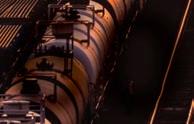
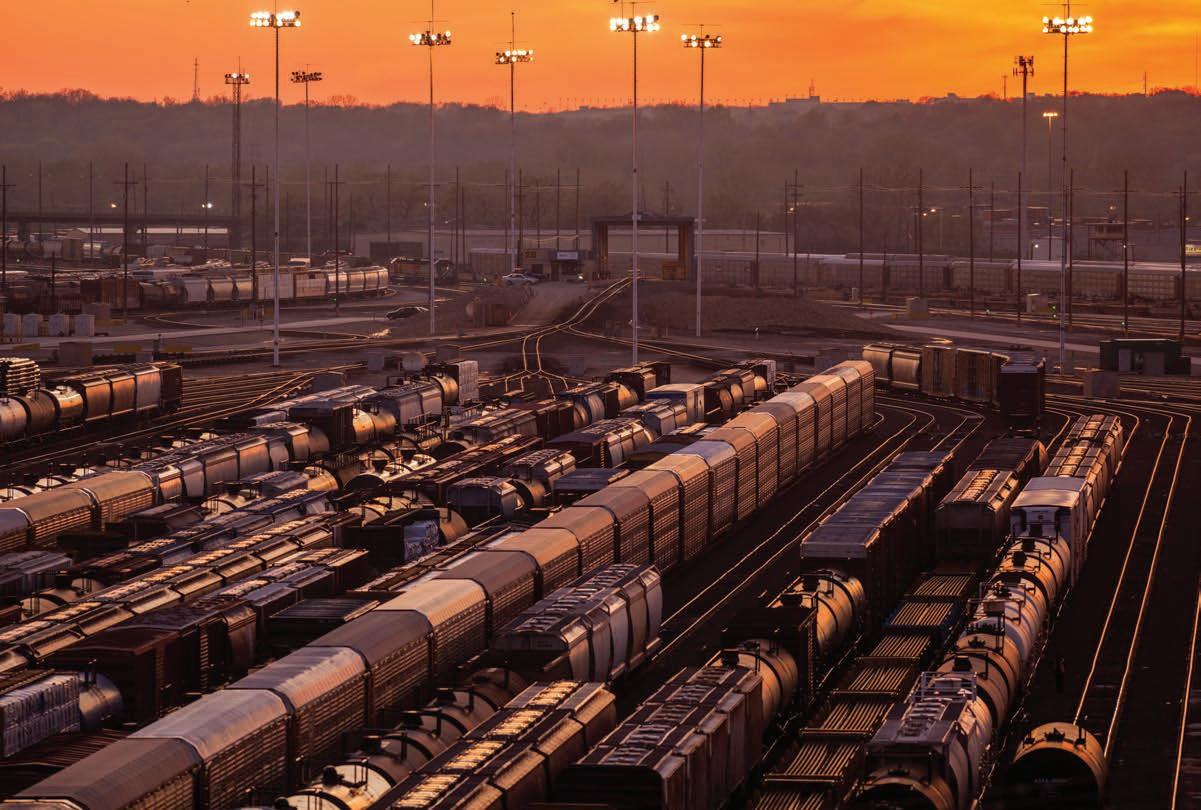
September 2023 // Railway Age 1 railwayage.com
be
International Corp., 102 W. 38th Street, 6th floor, New York, N.Y. 10018, Tel.: 212-221-9595; Fax: 212-221-9195. Periodicals
paid at New York, N.Y.,
offices. Canada Post Cust.#7204564; Agreement #41094515. Bleuchip International, PO Box 25542, London, ON N6C 6B2. Address all subscriptions, change of address forms and correspondence concerning subscriptions to Subscription Dept., Railway Age, PO Box 239 Lincolnshire IL 60069-0239 USA; railwayage@omeda.com; or call +1 (402) 346-4740; FAX +1 (847) 291-4816. Printed at Cummings Printing, Hooksett, N.H. ISSN 0033-8826 (print); 2161-511X (digital). FEATURES 15 54 60 66 70 74 76 80 83 86 Innovations Showcase State-of-the Art Technology Tech Focus – Locomotives Getting Cleaner, Faster Tech Focus – C&S Controlling BNSF’s Argentine Yard Tech Focus – M/W CSX’s “Team Sport” Approach Rail Cybersecurity Investing in Preparedness Tech Focus – IT Which Intelligence, When? Stop Jack Knife Derailments Using Alignment Control Couplers Microlubrication Benefits of zMAX Application Timeout for Tech Managing Risk of Failure MxV Rail R&D EMAT Update COMMENTARY 2 10 92 From the Editor Watching Washington Financial Edge DEPARTMENTS 4 6 8 88 90 90 91 Industry Indicators Industry Outlook Market Book Review Professional Directory Classifieds Advertising Index COVER PHOTO Shutterstock/Irina Shi September 2023 60 AILWAY
E BNSF
may not
reproduced without permission. For reprint information contact PARS
postage
and additional mailing
G
‘Stories are Spirit’
Capitol Hill
Contributing
Editor Frank
N. Wilner’s new book, Railroads & Economic Regulation, An Insider’s Account, reviewed by fellow Contributing
Editor Jim Blaze (pp. 88-89), contains an Appendix, “Stories are Spirit,” that shows the human side of some who have regulated our industry since 1887. As economist George Hilton quipped in 1972, “Regulators are not automatons, but men and women who go to baseball games, advocate their political philosophies, have their gallbladders removed, take their cats to the veterinarian, and otherwise behave like the rest of us.”
Here’s a small sampling—and you can’t make this stuff up:
“This shipper description of railroads appeared in the Jan. 1, 1910, Traffic World: ‘With pilfering clutch they lay a burden on the traffic that I ship, and lo! My profits fail me. Can we be men and suffer such dishonor? Alack, the day I took to merchandising and placed my goods in pawn. Yet there be law to seek, and by this power we’ll tear away the tentacles whereby an octopus does drag us down, and drive the vampire to his cave.’”
“ICC Commissioner Thomas F. Woodlock (1925-1930)—a native of Ireland and one of just three foreign-born members of the ICC or STB—was quoted in the 1941 ICC Practitioners’ Journal: ‘As a junior clerk in a London stockbrokerage firm I heard a good deal about the 1887 Act to Regulate Commerce. It quite convinced me that it would be a catastrophe if it passed and fine if it didn’t. Many, many years later, by a set of curious chances, I found myself a member of the ICC. Often, sitting mute upon the bench, I would, without any
AILWAY GE
SUBSCRIPTIONS: 847-559-7372
EDITORIAL AND EXECUTIVE OFFICES
warning, hear a small voice whispering in my ear, doubtless that of the devil, ‘Maybe you were right.’”
“Printed in the Report of the Second Annual Meeting of the ICC Bar Association in 1935 is a recollection by Commissioner Joseph B. Eastman (1919-1944) of a note sent him in good humor by Pennsylvania Railroad Chief Counsel Henry Wolf Bikle: ‘Having heard from time to time that you are given to Sabbath-breaking by working on Sundays, I began to wonder whether the things you say in your dissenting opinions, which cause your railroad friends so much distress, may not be written on Sunday and are the product of your sinful habits.’”
“The Dec. 29, 1953 New York Times reported: ‘Two attorneys turned an ICC hearing into a brawl yesterday. The session, held in a small room at 346 Broadway, started in formality and ended in invective and a sharp slap administered by the older of the attorneys, Sidney Szerlip, 71. It was received by 43-year-old Sidney Eisen. Later during the hearing, Mr. Szerlip, agile for his age, ran around four desks joined together as one long table and swung at Mr. Eisen. The latter feinted nicely and sidestepped. Mr. Eisen seemed to debate for a second whether to retaliate with a jab. Instead, he countered with a mumbled remark about ethics. Again, the older counselor stepped in. This time, Mr. Eisen forgot to duck and a sharp slap landed against his already reddened left cheek. The opponents were pulled apart. The case was adjourned and the sides settled privately.’”
Again, you can’t make this stuff up. Buy the book! It’s available from Simmons-Boardman Books, www.transalert.com.
Simmons-Boardman Publishing Corp. 1809 Capitol Avenue Omaha, NE 68102 (212) 620-7200 www.railwayage.com
ARTHUR J. McGINNIS, Jr. President and Chairman
JONATHAN CHALON Publisher jchalon@sbpub.com
WILLIAM C. VANTUONO Editor-in-Chief wvantuono@sbpub.com
MARYBETH LUCZAK Executive Editor mluczak@sbpub.com
CAROLINA WORRELL Senior Editor cworrell@sbpub.com
DAVID C. LESTER Engineering Editor/Railway Track & Structures Editor-in-Chief dlester@sbpub.com

JENNIFER McLAWHORN Managing Editor, RT&S jmclawhorn@sbpub.com
HEATHER ERVIN Ports and Intermodal Editor/Marine Log Editor-in-Chief hervin@sbpub.com
Contributing Editors
David Peter Alan, Jim Blaze, Nick Blenkey, Sonia Bot, Bob Cantwell, Peter Diekmeyer, Alfred E. Fazio, Gary Fry, Michael Iden, Don Itzkoff, Bruce Kelly, Ron Lindsey, David Nahass, Jason Seidl, Ron Sucik, David Thomas, John Thompson, Frank N. Wilner, Tony Zenga
Art Director: Nicole D’antona
Graphic Designer: Hillary Coleman
Corporate Production Director: Mary Conyers
Production Director: Eduardo Castaner
Marketing Director: Erica Hayes
Conference Director: Michelle Zolkos
Circulation Director: Joann Binz
INTERNATIONAL OFFICES
46 Killigrew Street, Falmouth, Cornwall TR11 3PP, United Kingdom 011-44-1326-313945
International Editors
Kevin Smith ks@railjournal.co.uk
David Burroughs dburroughs@railjournal.co.uk
David Briginshaw db@railjournal.co.uk
Robert Preston rp@railjournal.co.uk
Payment should be sent directly
herein for the flat fee of $2.00 per copy of each
personal or internal reference use without the express permission of Simmons-Boardman Publishing Corp. is prohibited. Address requests for permission on bulk orders to the Circulation Director. Railway Age welcomes the submission of unsolicited manuscripts and photographs. However, the publishers will not be responsible for safekeeping or return of such material.
Member of:
Simon Artymiuk sa@railjournal.com
CUSTOMER SERVICE: RAILWAYAGE@OMEDA.COM , OR CALL 847-559-7372
Reprints: PARS International Corp. 253 West 35th Street 7th Floor New York, NY 10001 212-221-9595; fax 212-221-9195 curt.ciesinski@parsintl.com

2 Railway Age // September 2023 railwayage.com FROM THE EDITOR WILLIAM C. VANTUONO Editor-in-Chief Railway Age, descended from the American Rail-Road Journal (1832) and the Western Railroad Gazette (1856) and published under its present name since 1876, is indexed by the Business Periodicals Index and the Engineering Index Service. Name registered in U.S. Patent Office and Trade Mark Office in Canada. Now indexed in ABI/Inform. Change of address should reach us six weeks in advance of next issue date. Send both old and new addresses with address label to Subscription Department, Railway Age, PO Box 239, Lincolnshire IL 60069-0239 USA, or call (US, Canada and International) 847-559-7372, Fax +1 (847) 291-4816, e-mail railwayage@omeda.com. Post Office
not
copies unless you provide extra postage.
Send changes of address to:
Age,
Box
Photocopy rights: Where necessary, permission is granted
Center
will
forward
POSTMASTER:
Railway
PO
239, Lincolnshire, IL 60069-0239, USA.
by the copyright owner for the libraries and others registered with the Copyright Clearance
(CCC) to photocopy articles
article.
to CCC. Copying for other than
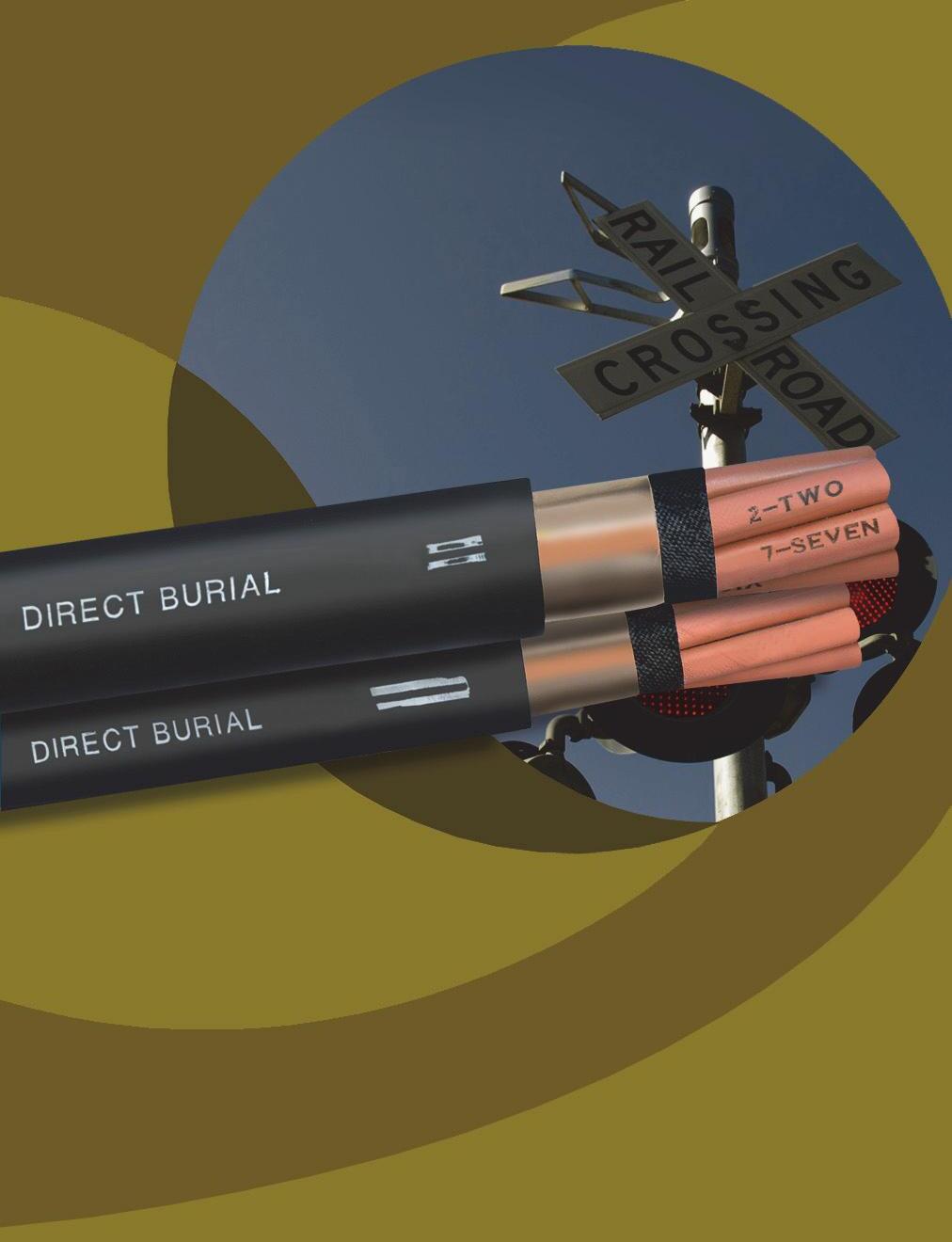






THE OKONITE COMPANY Okonite Cables...A higher Standard! 102 Hilltop Road, Ramsey, New Jersey 07446 201.825.0300 www.okonite.com OurPremierVitalCircuitSignalCablesare EscortedbySuperiorCustomerService OKONITE Ourformulatokeepyourbusinessontrackisourfleetof6 manufacturingplants,5servicecentersand23localsalesoffices. Ourmultipleplantcapabilityprovidesmanufacturingflexibilityaswe supportyourneedswithourdirectsalesforceandapplication engineeringstaff.Okonitehasbeensettingthestandardsince 1878...andalways100%builtintheU.S.A. We’re Here ForYou!
Industry Indicators
‘SOME ENCOURAGING SIGNS’
“The July 4th holiday complicated an analysis of U.S. rail volumes in July, but there were some encouraging signs,” the Association of American Railroads reported last month. “For example, the three non-July 4 weeks in July were the three highest-volume intermodal weeks of the year for U.S. railroads. Intermodal in July 2023 was still down 5.5% from July 2022, but that’s the smallest percentage decline for any month so far this year. U.S. carloads of chemicals rose in July for the first time in almost a year; carloads of crushed stone and sand rose for the 27th straight month; carloads of motor vehicles and parts rose for the 16th straight month; and carloads of industrial products, which is an aggregation of seven key carload categories and is better correlated with GDP than most other rail traffic categories, were up solidly for the third consecutive month. There was nothing encouraging about grain in July 2023: U.S. grain carloads averaged 14,669 per week, down 21.0% from July 2022 and their lowest weekly average for any month in our data that go back to January 1988. Weak grain exports, especially corn, are mainly to blame. Year-to-date U.S. grain carloads through July were the lowest since 2013. Total originated carloads on U.S. railroads fell 0.6% in July 2023 from July 2022; for the year to date, they were up 0.4%. Excluding coal, carloads were flat in July and up 0.4% for the year to date.”
Railroad employment, Class I linehaul carriers, JULY 2023
(% change from JULY 2022)
TRAFFIC ORIGINATED
Transportation (train and engine)
52,090 (+7.95%)
Executives, Officials and Staff Assistants
8,208 (+4.72%)
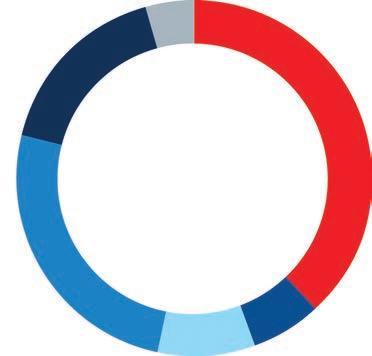
10,417 (+5.17%)
Intermodal FOUR WEEKS ENDING JULY 29, 2023
4 Railway
railwayage.com
Age // September 2023
Source: Rail Time Indicators, Association of American Railroads
Professional and Administrative
of
and
Transportation Board TOTAL EMPLOYEES: 122,816 % CHANGE FROM JULY 2022: +5.51%
Maintenance-of-Way and Structures 28,945 (+1.86%) Maintenance
Equipment
Stores 18,280 (+5.52%) Transportation (other than train & engine) 4,876 (+4.39%) Source: Surface
CARLOADS four WEEKS ENDING july 29, 2023 BY COMMODITY JULY ’23JULY ’22% CHANGE Grain 101,792112,236-9.3% Farm Products excl. Grain 12,0556,59382.8% Grain Mill Products 43,274 44,975-3.8% Food Products 43,627 41,7744.4% Chemicals 177,575178,426-0.5% Petroleum & Petroleum Products79,23881,718 -3.0% Coal 288,020291,882-1.3% Primary Forest Products 6,1468,438-27.2% Lumber & Wood Products 22,73925,328-10.2% Pulp & Paper Products 27,80730,536-8.9% Metallic Ores 78,42674,1235.8% Coke 21,353 21,867 -2.4% Primary Metal Products 49,58648,6721.9% Iron & Steel Scrap 21,35922,682-5.8% Motor Vehicles & Parts 92,786 81,45613.9% Crushed Stone, Sand & Gravel 113,110109,151 3.6% Nonmetallic Minerals 18,91220,682-8.6% Stone, Clay & Glass Products 47,32947,046 0.6% Waste & Nonferrous Scrap 17,30317,641-1.9% All Other Carloads 30,37428,6566.0% TOTAL NORTH AMERICAN CARLOADS 1,292,811 1,293,882 -0.1% MAJOR NORTH AMERICAN BY COMMODITY JULY ’23JULY ’22% CHANGE Trailers 52,47863,464-17.3% Containers 1,186,369 1,319,151 -10.1% TOTAL UNITS 1,238,8471,382,615 -10.4% MAJOR NORTH AMERICAN RAILROADS MAJOR NORTH AMERICAN RAILROADS
TOTAL North American CARLOADS, JULY 2023 VS. JULY 2022

1,292,8111,293,882

Short Line And Regional Traffic Index
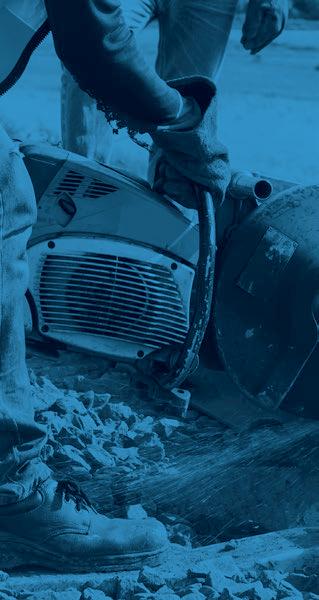

TOTAL U.S. Carloads and intermodal units, 2014-2023 (in millions, year-to-date through july 2023, SIX-WEEK MOVING AVERAGE)

September 2023 // Railway Age 5 railwayage.com
JULY 2023 JULY 2022 Copyright © 2023 All rights reserved.
CARLOADS BY COMMODITY ORIGINATED JULY ’23 ORIGINATED JULY ’22 % CHANGE Chemicals 53,425 47,59512.2% Coal 19,288 17,647 9.3% Crushed Stone, Sand & Gravel 29,562 27,329 8.2% Food & Kindred Products 12,269 10,89712.6% Grain 19,970 24,396-18.1% Grain Mill Products 8,911 7,94612.1% Lumber & Wood Products 9,202 9,586-4.0% Metallic Ores 2,673 3,026 -11.7% Metals & Products 20,209 18,493 9.3% Motor Vehicles & Equipment 11,088 8,76526.5% Nonmetallic Minerals 1,760 2,297-23.4% Petroleum Products 2,438 2,05918.4% Pulp, Paper & Allied Products 15,399 17,133 -10.1% Stone, Clay & Glass Products 15,562 14,520 7.2% Trailers / Containers 41,697 38,828 7.4% Waste & Scrap Materials 11,846 11,672 1.5% All Other Carloads 69,292 74,331-6.8% AILWAY GE Visit http: //bi t.ly/rai l jobs To place a job posting, contact: Jerome Marullo 732-887-5562 jmarullo@sbpub.com ARE YOU A RAILROAD OR SUPPLIER SEARCHING FOR JOB CANDIDATES? RA_JobBoard_1/3Vertical.indd 1 7/27/21 3:02 PM
Court Halts Uinta Basin Railway Project

[Interstate Commerce Commission Termination Act of 1995],” according to the Court. It said STB “failed to weigh the Project’s uncertain financial viability and the full potential for environmental harm against the transportation benefits it identified.”
The “normal remedy” is to vacate a rule found to be unlawful, according to the Court, which wrote: “[W]e see no reason to depart from our normal practice here given the lack of argument from the Board, [BiOp producer the Fish and Wildlife] Service, or the [Seven County Infrastructure] Coalition, that vacatur would be disruptive.”
THE SURFACE TRANSPORTATION BOARD’S (STB) DECEMBER 2021 APPROVAL OF THE CONSTRUCTION AND OPERATION OF THE UINTA BASIN RAILWAY WAS STRUCK DOWN BY THE U.S. COURT OF APPEALS FOR THE DISTRICT OF COLUMBIA CIRCUIT, WHICH CALLED IT “ARBITRARY AND CAPRICIOUS.” The 88-mile line would be the first major freight railroad built in the U.S. in the past 30 years.
Behind the project is Utah’s Seven County Infrastructure Coalition, an “independent political subdivision” of the state that sought STB approval for the line, which would primarily haul shale-extracted crude oil. The Coalition joined forces with Drexel Hamilton Infrastructure Partners to raise private capital for the build and with Rio Grande Pacific Corp. to operate and maintain the line once completed. AECOM was chosen to lead the design, and the SkanskaClyde Joint Venture and Obayashi Corporation would help with construction.
The court’s Aug. 18, 2023, decision granted in part the consolidated petitions of Eagle County, Colo., and the Center for Biological Diversity and vacated the STB’s final exemption order as “arbitrary and capricious.” It also vacated in part STB’s Environmental Impact Statement (EIS) outlining the various impacts associated with the railway’s construction and operation, and the Biological Opinion (BiOp) concerning the railway’s potential impacts
on endangered species and critical habitats. The matter was remanded to STB for further proceedings.
The Court explained that the decision to vacate depends on two factors: “the likelihood that ‘deficiencies’ in an order [like STB’s] can be redressed on remand, even if the agency reaches the same result, and the ‘disruptive consequences’” of vacating.
According to the Court, “[T]he deficiencies here are significant. We have found numerous NEPA [National Environmental Policy Act] violations arising from the EIS, including the failures to: 1) quantify reasonably foreseeable upstream and downstream impacts on vegetation and special-status species of increased drilling in the Uinta Basin and increased oil-train traffic along the Union Pacific Line, as well as the effects of oil refining on environmental justice [of] communities [in] the Gulf Coast; 2) take a hard look at wildfire risk as well as impacts on water resources downline; and 3) explain the lack of available information on local accident risk in accordance with 40 C.F.R. § 1502.22(b) (2020). The EIS is further called into question since the BiOp failed to assess impacts on the Colorado River fishes downline.”
The Court wrote that “[t]he poor environmental review alone renders arbitrary the Board’s consideration of the relevant Rail Policies and the final order’s exemption of the Railway.” STB “also failed to conduct a reasoned application of the appropriate Rail Policies as required under the ICCT Act

In an Aug. 18 Facebook post following the ruling, the Seven County Infrastructure Coalition said: “The #UintaBasinRailway team remains committed to the successful planning, construction, and operation of the railway. While we disagree with the D.C. Circuit Court’s recent decision, we respect the authority of the U.S. Court of Appeals. We firmly believe that the railway’s Environmental Impact Statement (EIS) contains appropriate and thorough analysis of the highlighted concerns, as it stands today. Nonetheless, we are ready, willing, and capable of working with the STB to ensure additional reviews and the project’s next steps proceed without further delay. We look forward to bringing this railway to the Basin in a safe and cost-effective way.”
On May 29, 2020, the Seven County Infrastructure Coalition sought STB authority to build and operate the Uinta Basin Railway, which it said would provide Basin shippers a viable alternative to trucking—currently the only available transportation option. The Uinta Basin is an approximately 12,000 square-mile area spanning northeastern Utah and northwestern Colorado that contains mineral deposits, including phosphate, crude oil, natural gas, oil shale, oil sands, gilsonite, natural asphalt, aggregate materials and low-sulfur coal. STB on Jan. 5, 2021, preliminarily approved the project on its transportation merits, subject to completion of environmental review. In August 2021, the STB Office of Environmental Analysis issued a Final EIS for the project, identifying the 88-mile Whitmore Park Alternative as the environmentally preferred route, one of three analyzed.
6 Railway Age // September 2023 railwayage.com Industry Outlook
WE’RE AHEAD OF THE CURVE.
The transportation sector is a pillar of the modern world. It moves people and goods, powers economic growth and a more equitable global society. Rail is a critical component of this global eco-system. From clean diesel to future fuels, we’re making great strides to help rail operators around the world improve efficiency and meet their sustainability goals.

Learn more by scanning the QR code below.
 ©2023 Cummins Inc.
©2023 Cummins Inc.
WORLDWIDE TRANSPORT FOR LONDON (TFL)
last month began tendering the next franchise agreement for the DOCKLANDS LIGHT RAILWAY (DLR), the 25-mile fully automated light metro network serving 45 stations in east and southeast London. The DLR is currently operated by a joint venture of KEOLIS and AMEY under a franchise agreement that began Dec. 7, 2014, for an initial term of seven years, and that is now due to end on April 1, 2025. The new contract will be for an approximate initial period of eight years, with an option to extend this by up to two years and a separate seven-month extension option. The estimated total value of the contract is £2.3 billion. The franchisee will be responsible for train and passenger service operations, ATC management and all maintenance.
CHSRA Issues Trainset RFQ
The California High-Speed Rail Authority (CHSRA) Board of Directors on Aug. 24, as part of a two-step procurement process, approved the release of a Request for Qualifications (RFQ) to industry for the nation’s first 220-mph electrified high-speed trainsets. CHSRA anticipates receiving Statements of Qualifications (SOQs) from prospective trainset manufacturers in November 2023. Once received, CHSRA will evaluate the SOQs and create a shortlist of qualified teams capable of delivering high-speed trainsets and release a Request for Proposal (RFP) in the first quarter of 2024. The procurement will allow CHSRA to receive six trainsets capable of operating at 220 mph and tested up to 242 mph; two prototypes in 2028 to support static/dynamic testing and trial running; and an additional four trainsets by the end of 2030 to support revenue operations on the 171-mile Merced to Bakersfield section. It also includes a 30-year maintenance contract, including spare parts supply, and Heavy and Light Maintenance Facilities.
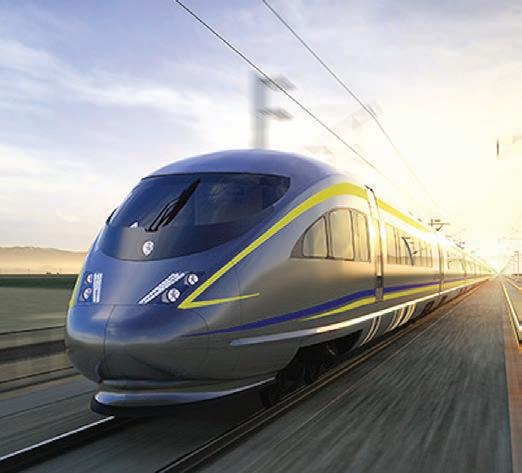
NORTH AMERICA
AMTRAK last month executed a contract to order 10 additional Airo™ trainsets “as demand for passenger rail travel exceeds expectations,” bringing the total contract order to 83. The first Amtrak Airo™ trainset is scheduled to debut in 2026 on the railroad’s Casacdes service before eventually operating on routes throughout the country, including Northeast Regional, Empire Service, Virginia Services, Keystone Services, Downeaster, Maple Leaf, New Haven/ Springfield Service, Palmetto, Carolinian, Pennsylvanian, Vermonter, Ethan Allen Express and Adirondack
GULF & ATLANTIC RAILWAYS LLC (G&AR) on Aug. 29 entered into a definitive agreement to acquire PINSLY RAILROAD COMPANY’S Massachusetts short line and warehousing business. The transaction includes the 18-mile PIONEER VALLEY RAILROAD (PVRR) and Pinsly’s RAILROAD DISTRIBUTION SERVICES, INC. (RDS), a rail-served warehousing and distribution business. The purchase is subject to authorization by the Surface Transportation Board. PVRR, which Pinsly acquired in 1982, runs from Westfield to Holyoke, Mass., with interline access to CSX,
including Pan Am Southern. Together with RDS, which Pinsly established in 1985, the short line serves more than 30 diversified customers. RDS operates two rail-served warehouses with 140,000 square feet of indoor storage and 3.5 acres of outdoor storage. The addition of PVRR will expand Jacksonville, Fla.-based G&AR’s portfolio to six small roads. It already operates the 430mile FLORIDA, GULF & ATLANTIC RAILROAD and the 228-mile GRENADA RAILROAD, which received Honorable Mention in Railway Age’s 2021 Short Line and Regional Railroad Awards program. Additionally, earlier this year, G&AR acquired the 15-mile CAMP CHASE RAILROAD, 28-mile CHESAPEAKE & INDIANA RAILROAD, and 10-mile VERMILION VALLEY RAILROAD from MIDWESTERN & BLUEGRASS RAIL.
MARTINUS NORTH AMERICA, INC. on Aug. 28 entered into a purchase agreement to acquire Lee’s Summit, Mo.-based BOTTOM LINE COMPANY LLC. This is the first North American acquisition for Martinus, which operates in Australia, New Zealand and South America and employs more than 1,500 people worldwide.
8 Railway Age // September 2023 railwayage.com Industry Outlook California High-Speed Rail Authority
market
RailBlazer by Trilogical: Revolutionizing Rail Freight Management with Advanced Telematics

Distinguished by an unprecedented blend of proprietary technology, e ciency, and maintenance-free operation, RailBlazer emerges as Trilogical’s groundbreaking IoT solution, reshaping the landscape of intelligent rail freight operations and yielding substantial returns on investment for railroads, eet owners and shippers.
In the realm of rail freight, the escalating demand for dependable and competitively priced railway transportation underscores the need for heightened e ciency and optimized expenditures. E ciency and pro tability synergize by optimizing the utilization of existing assets prior to considering new investments.
The digital transformation of railroads represents a crucial stride toward unlocking untapped potential and capitalizing on opportunities for enhanced e ciency. The capability to analyze and decipher data for informative insights, coupled with the ability to provide asset management and cargo visibility, forms the foundation.
Trilogical’s RailBlazer stands as the vanguard of engineered telematic solutions, directly addressing pivotal concerns at the heart of railroads. Drawing from extensive experience in IoT and remote condition monitoring across diverse industries and based on the outcomes of the rst generation of Trilogical’s railcar telematics, this innovative solution delivers intelligent data without unnecessary complexities, o ering a notably straightforward implementation process.
High-level Bene ts of RailBlazer
Enhancing Railcar Utilization with RailBlazer: With meticulous attention to optimizing railcar utilization, RailBlazer leverages advanced planning and predictive railcar allocation. By seamlessly integrating hybrid communication technologies, RailBlazer empowers tracking of railcar location, including precise positioning in the trainset and on speci c tracks within bustling shunting yards. This realtime monitoring capability serves as the cornerstone of elevated e ciency and revenue generation. By extracting actionable insights from data-driven statistics, rail operators can adeptly synchronize railcar availability with demand, orchestrating smarter operations.
Achieving Advanced Maintenance E ciency with RailBlazer: A central aspiration for railway operators is harnessing advanced IoT devices to monitor, track, and assess railcar health, thereby augmenting maintenance e ciency. RailBlazer’s pioneering technology ingeniously transforms each railcar into an intelligent, digitally traceable entity. Within the domain of maintenance enhancement, RailBlazer streamlines maintenance through the
integration of mileage and smart sensors’ analysis. By astutely analyzing realtime data, railroads and eet owners acquire the ability to strategically plan maintenance activities, culminating in heightened e ciency. Proactive response to maintenance requirements, based on accurate insights, signi cantly enhances responsiveness to health indicators, resulting in extended service intervals. Furthermore, the issuing of immediate alerts pertaining to deviations or potential issues, facilitates swift and precise intervention, proactively preventing downtime and minimizing operational disruptions.
By embracing the RailBlazer solution and capitalizing on its advanced maintenance features, railway operators can signi cantly curtail maintenance expenses, maximize railcar availability, and elevate the overall reliability of their operations.
Safety: Safety constitutes a paramount priority for rail freight operations. RailBlazer operates in real time to detect and alert about railcar health anomalies, unsafe loading practices, and excessive impacts. Monitoring End-of-Train (EOT) events heightens safety standards, safeguarding both personnel and cargo.
Transparency and Enhanced Customer Satisfaction: RailBlazer leverages intelligent data analysis to enhance supply chain transparency. Providing customers with realtime loading status updates, estimated time of arrival (ETA) and cargo status data empowers shippers with the information they need. This fosters improved relationships with customers and opens new business opportunities.
Unmatched Technology and E ciency: RailBlazer transforms railcar telematics with its hybrid communication technology, ensuring seamless realtime data transmission and accurate tracking. Integrated with Trilogical’s cloud-based platform, RailBlazer o ers features like order management, railcar allocation, history, and mileage-based service alerts, boosting operational and maintenance e ciency.
With a focus on precision, e ciency, and reliability, RailBlazer sets a new industry standard. Installation is a breeze, and the device’s up to 6-year battery life ensures hassle-free performance.
Experience the future of rail freight with RailBlazer by Trilogical: https://www.trilogical.com/railblazer
Contact Tatiana Voloshin, our International Business Development Director, for more information or a product demonstration via email tatianav@trilogical.com or LinkedIn:
https://www.linkedin.com/in/tatiana-voloshin
If you are attending the upcoming Railway Interchange 2023 event, we invite you to attend our showcase at the Innovation Theatre within the RSSI Exhibit Hall D on Monday, October 2, at 3:30 pm. Visit our booth - RSSI Hall E, Booth 1308
Budget Hocus Pocus Targets Rail Workers
Deep within the enigma of the federal budget process is a paradoxical scheme to reduce—without actually reducing—red ink. While congressional scal hocus pocus is not new, this nancial absurdity is especially egregious as it adversely impacts rail workers.
Under a guise of reducing federal spending, congressional budget hawks are preventing the payment of a portion of sickness and unemployment bene ts owed rail workers. ey further seek to hobble a federal agency’s ability to process and pay rail worker bene ts claims by cutting its budget, even though the agency is funded entirely by rail employee and/or railroad payroll taxes.
Targeted is the Railroad Retirement Board (RRB), which administers and disburses railroad disability, retirement, sickness, survivor and unemployment bene ts. Under federal law, the RRB is a claims-agent and paymaster—an intermediary whose nancial transactions appear in the federal budget, although not a penny of federal spending can be saved by the scal legerdemain contrived by congressional budget hawks.
e rent on RRB’s Chicago headquarters and 53 eld o ces, as well as wages and fringe bene ts paid the RRB’s 728 employees, is funded entirely by payroll taxes assessed rail employees and railroads. Even the cost of RRB copy machines and their ingredients, computers, telephones and even paper clips, snack room microwaves and co ee makers is funded by these payroll taxes. As for the congressionally slashed sickness and unemployment benets, they are funded entirely by payroll taxes assessed railroads.
Rather than reducing federal spending, these cuts are in icting monetary pain and mental su ering on rail workers and their families. So wicked is this pickpocketing by Congress that it has uncharacteristically caused rail carriers and rail labor to link arms in solidarity to halt it.
Two cunning schemes are at issue—one festering since 2011 and a second a part of current federal budget negotiations.
e 2011 congressional sleight-ofhand expropriated railroad sickness and unemployment bene ts administered and disbursed by the RRB—bene ts funded exclusively by railroads and deposited in a dedicated trust fund separate from the Railroad Retirement Trust Fund. Congress slashed them by 5.7%, reducing the already meager biweekly bene t from $870 to $820.41.
Employees in no other industry endure such inhumane cuts, as non-railroad sickness and unemployment bene ts plans administered by states are exempt from such sequestration. Only because the railroad-funded plans are federally administered—owing to the complex interstate nature of rail operations—do they appear in the federal budget.
(Note that the 2011 bene ts cuts, suspended by Congress for two years during the COVID-19 pandemic, were restored in May 2023. Also, do not confuse RRB administered sickness bene ts with recent collectively bargained sick leave, as eligibility for RRB administered sickness bene ts—intended for longer term medical issues and injury—is delayed when sick leave is taken.)
e second congressional sleight-ofhand, if passed by the House and Senate, would slash 25% of the RRB’s budget, resulting in 168 furloughed RRB employees, cancellation of RRB’s information technology modernization and security upgrades, and delays in the processing and payment of rail employee disability, retirement, sickness, survivor and unemployment claims.
Again, there would be no federal spending reduction as all RRB funding is obtained from railroad and rail employee payroll taxes. Any reduction in the RRB budget or bene ts paid rail workers merely creates an illusion of reduced federal spending.
It is unlikely the 5.7% cuts in sickness and unemployment bene ts will be restored this session of Congress, even though the Railroad Employee Equity and Fairness Act (H.R. 2785 and S. 1274) seeks to do so. Congress repeatedly has rejected abandoning its scal dishonesty here and elsewhere.
Budget hawk Rep. Mike Braun (R-Ind.)
made that clear in dancing around facts and telling Bloomberg Law, “We’re now $32 trillion in debt and everyone’s going to have an issue that’s important.” Optimism remains that the provision slashing 25% of RRB’s scal year 2024 funding can be excised.
Ironically and farcically, railroads are continuing to pay a maximum 12.5% (on each $1,895 of monthly wages) to fund the RRB administered sickness and unemployment plan, plus a 1.5% surcharge to keep the fund’s minimum balance at $100 million, following a spike in furloughs.
(Frank N. Wilner’s new book, Railroads & Economic Regulation, is available from Simmons-Boardman Books at www.transalert.com, 800-228-9670.)
FRANK N. WILNER Contributing Editor


10 Railway Age // September 2023 railwayage.com Watching Washington
this wicked pickpocketing by Congress has uncharacteristically caused rail carriers and rail labor to link arms in solidarity to halt it.”

W OMEN IN RAIL

NOVEMBER 2, 2023

















Chicago, IL
CONNECT. INSPIRE. INNOVATE.
Network and collaborate with a diverse group of women and allies who are making a difference in the rail industry. Learn how railroaders can maintain the momentum of inclusion, build strong support networks, and take advantage of ever-broadening career opportunities.
WHY ATTEND:
•Discover career advancement and development opportunities
















• Learn about the career paths of women leaders and how today’s railways are supporting them



•Explore DEI (Diversity, Equity and Inclusion) initiatives


































• Learn about mentorship best practices—from finding a mentor, to serving as one
•Discover how ERGs (Employee Resource Groups) are established for community building and support
•Connect with your peers—both upcoming talents and accomplished women in rail
SUPPORTING ORGANIZATIONS




AILWAY GE









































































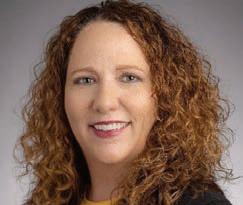
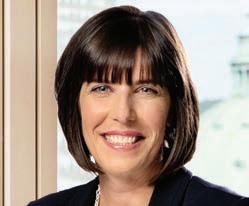
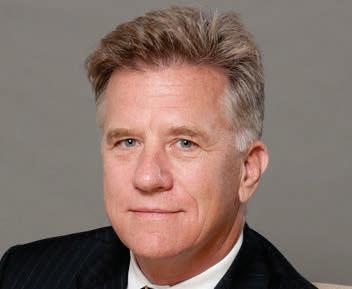

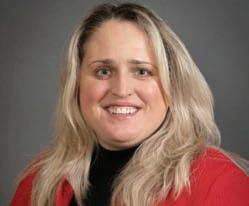


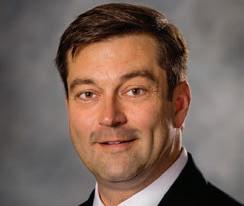




SPEAKERS INCLUDE REGISTER: www.railwayage.com/womeninrail SPONSORSHIPS: Jonathan Chalon | jchalon@sbpub.com | 212.620.7224 Judy
SVP
Janet
Anacostia
Robert
EVP
Deb
Officer & AVP, Workforce Resources
Sebastian
& Inclusion NJ TRANSIT Marc
Siemens
Ed
R.
K. Carter
& Chief HR Officer BNSF
Drysdale SVP & Chief Stakeholder Relations CN Peter A. Gilbertson President & CEO
Rail Holdings Company
Grasty
& Chief HR Officer Amtrak
Schrampfer Chief Diversity
Union Pacific
Moreno Dir. Diversity
Buncher President & CEO
Mobility North America
Quinn President & CEO
J. Corman Railroad Group Kari Gonzales President & CEO MxV Rail CleLeatha
Shaw Mgr. - Crew Dispatching Metra
Laura Ramirez Head of DEI Trinity Industries
Tom Prendergast EVP AECOM
WHEN YOUR BUSINESS RELIES ON RAIL, RELY ON US.

TrinityRail ® is North America’s leading railcar equipment and services provider. With a comprehensive platform of leasing, manufacturing, maintenance and professional services, you can rely on TrinityRail to fully deliver trusted expertise, innovative solutions and supply chain optimization. Learn more at TrinityRail.com.

AILWAY G E

SERVING THE RAILWAY INDUSTRY SINCE 1856

PRODUCT & INNOVATIONS SHOWCASE 2023
As the industry’s partner for generations, Railway Age recognizes the importance of the supply community continuing to interface with customers. We’re pleased to present our 2023 Product Innovations Showcase, spotlighting dozens of the industry’s top suppliers—innovators all.

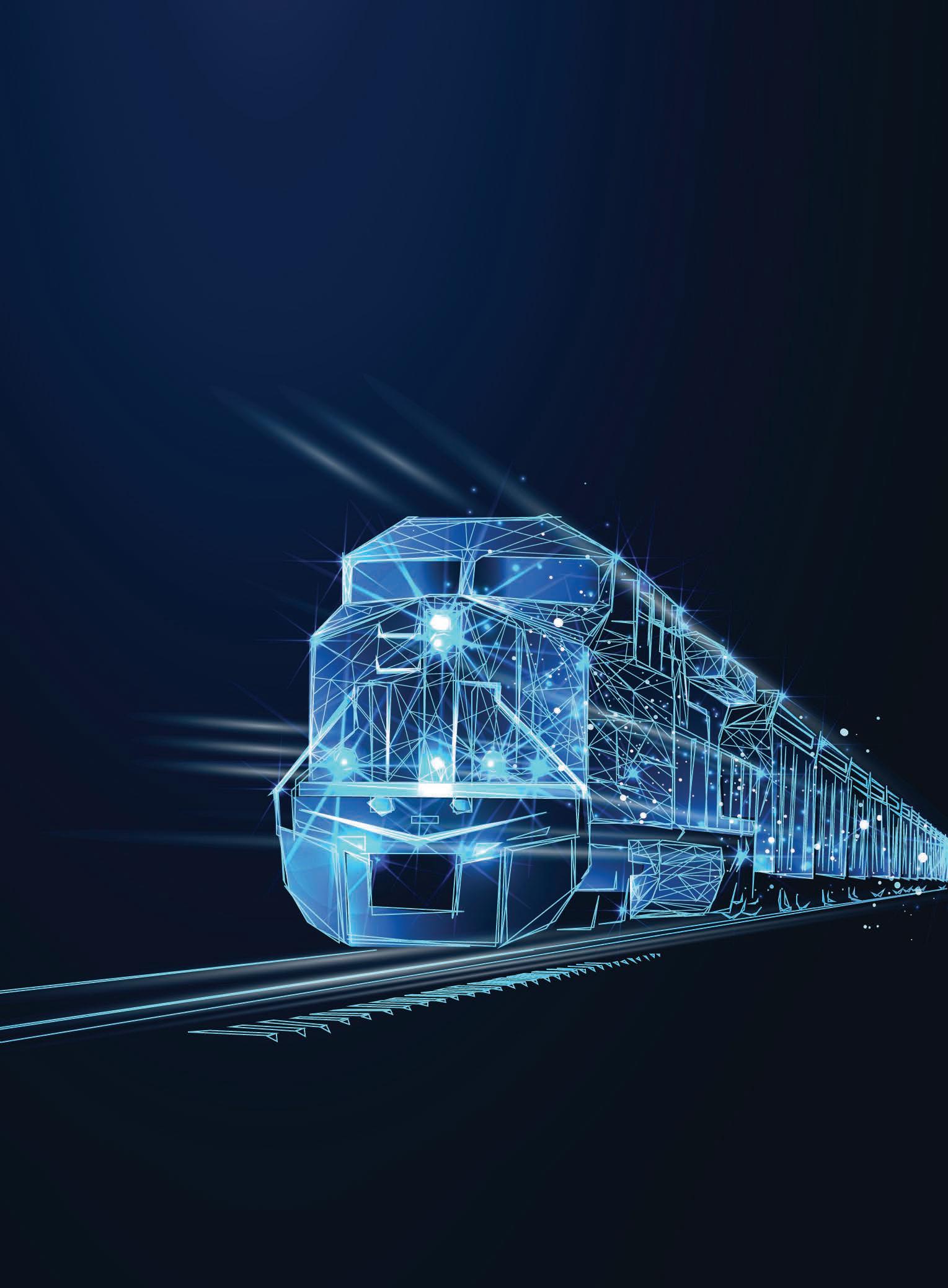
4AI SYSTEMS


HORUS A.I. ADVANCED DRIVER ADVISORY SYSTEM
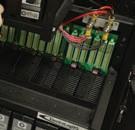

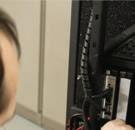
4AI Systems creates arti cial intelligence and machine learning sensor systems for rail. Our mission is to build solutions that empower people and organizations to ultimately make better, data-driven decisions for their rail operations in real-time. Introducing HORUS, 4AI Systems’ all-seeing eye for rail, which is an arti cial intelligence (AI) machine learning system that processes real-time data from an onboard sensor array. e system can be used for: LOCATION ASSURANCE—Accurate location de nition to a speci c track and location in multiple-track territory by fusing imagery and navigational data. TRACK INTRUSION DETECTION—Detection of an unexpected object or hazard on or about the rail track. INFRASTRUCTURE MONITORING—Condition monitoring of selected rail infrastructure for maintenance assessment. SPEED MONITORING—Speed checking against network data and rules. AUTHORITY MONITORING—Static signage or signal lamp post recognition and reading of displayed information/aspect. SPAD emergency braking if required by network rules. To do this, we’ve combined smart sensor tech with machine and deep learning models to provide a comprehensive AI real-time advanced driver advisory system that can be integrated with an existing control system or as a standalone system. It can be applied to metro passenger rail, freight rail, and work trains and is compatible with CBTC, PTC, and other current control systems. To learn more about HORUS, our team will be attending AREMA/Railway Interchange or you can visit our website at www.4aisys.com.
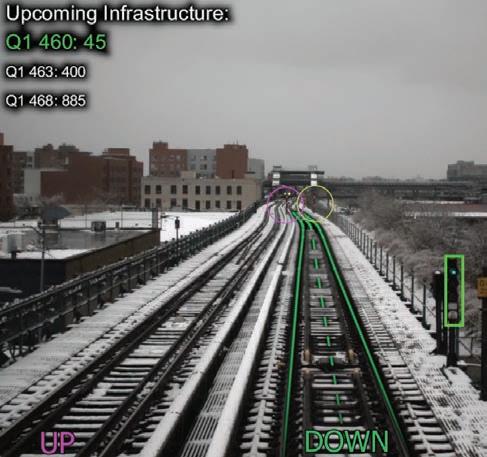
ALSTOM ALSTOM EC6 TRACK CIRCUIT




Track circuits have been around since the late 1800s, helping railroads and transit operators detect the location of trains while providing broken rail protection. In the 1970s, Alstom introduced its Electro Code product line, adding signal aspect communications while extending track circuit length. Now, a er ve versions of Electro Code, Alstom is bringing the track circuit into the digital world, releasing what could be a game changer in track circuit technology with the rollout of Electro Code 6 (EC6). EC6 is the epitome of smart technology. It uses innovative signal processing techniques to provide two-way digital vital communication through the rails. Data is collected and sent in packets to the rail to specify signal aspects and indications (e.g., red to stop, green to proceed, and yellow for caution), allowing more data to be transmitted through the rails, such as exchange of analog data between both ends of the track circuit. e additional data allows EC6 to operate without requiring any adjustments over its life cycle, preventing costly train delays, and avoiding hours of unplanned maintenance. e sharing of information between each end of the track circuit allows EC6 to quantify track conditions (such as ballast and rail resistance) in real time, which are useful diagnostics for both signaling and track departments. EC6 provides bandwidth for the railroad to send its own customized information without installing radios or other cables or interfering with other track-connected devices such as highway grade crossings and cab signal systems, provide longer track circuits than previously possible, and can potentially locate broken rails, crucial information for restoring operations safely and quickly. With more than 40 million EC6 messages sent and decoded, and 10,000 trains detected already during the development, EC6 is on track to be the future of track circuits and train detection.

16 Railway Age // September 2023 railwayage.com 2023 Product
& Innovations showcase

AVANTE INTERNATIONAL TECHNOLOGY, INC. TRACK GEOMETRY MEASUREMENT, TRACK IMAGING, TRACK PROFILE AND RAIL SWITCH SENSOR SYSTEMS

At Avante, we stand as a pioneering U.S. company specializing in the provision of rail and train safety monitoring systems. We utilize the best technology in order to provide our clients with a solution that is safe, e cient and reliable. Real-Time Autonomous Track Geometry Measurement System: Provides real-time information, including buckling, vibration, and temperature, facilitating trend analysis and predictive maintenance for optimal track performance. e system incorporates advanced sensor technologies to o er measurements such as track gauge, cant/cross level, twist, alignment and unevenness. RAIL TRACK INTEGRITY IMAGING SYSTEM: Incorporates high speed imaging cameras that capture continuous images of the rail tracks and bed. It utilizes advanced image processing algorithms, and arti cial intelligence assisted pattern recognition-based image analysis techniques to detect potential defects and missing components, and evaluate the overall integrity and safety of the railway infrastructure. RAIL TRACK REAL-TIME PROFILE MEASUREMENT AND INTEGRITY MONITORING
SYSTEM: A specialized solution designed to accurately measure and analyze the pro le of rail tracks. It uses high speed high-precision laser pro le sensors to capture accurate measurements of the rail pro le to measure and record eld and gage rail pro le, head, web, and base for wear and comparison to standard pro le. It is ideal to detect small rail track defects/wears such as dents and cracks/gaps, as well as rail cant/inclination. RAIL SWITCH POINT POSITION SENSORS: Provides 24/7/365 real-time monitoring of the switch point and its closure integrity. is system operates autonomously and demands minimal installation e orts. It promptly generates real-time alerts, transmitting them to the monitoring center and onboard computer whenever the switch gap exceeds the safe threshold.
BROOKVILLE EQUIPMENT CORPORATION BROOKVILLE EQUIPMENT TO INSTALL CUMMINS POWER MODULES
With more than 100 years of experience, BROOKVILLE is a world-class American manufacturer of innovative powered transportation solutions including switcher, freight, and passenger locomotives, among other rail products. BROOKVILLE’s products are fully custom designed to the highest engineering standards for quality, safety and environmental responsibility. BROOKVILLE o ers a variety of services to the rail industry, including brand new locomotives, as well as overhauling, restoring, rebuilding, repowering and modernizing existing vehicles. With deep expertise in locomotive manufacturing and remanufacturing, BROOKVILLE can take your Tier 0 locomotive and modernize it with a Tier 3 or 4 certi ed turnkey solution. A recent partnership with Cummins, Inc. focuses on the ability to repower low Tier locomotives by signi cantly reducing exhaust emissions and improving the locomotive’s performance. With grant funding possibly available, BROOKVILLE and Cummins o er an EPA Tier 3 and Tier 4 Locomotive Switch Certi ed package, ranging from 1,000 hp and 2,130 hp. By utilizing Tier 3 and Tier 4 Power Modules, it will reduce emissions up to 80% to 93%, respectively. BROOKVILLE’s long history of high-quality locomotive work, coupled with Cummins Power Modules, will ensure your locomotive is back on the track with high-quality performance and cleaner emissions.
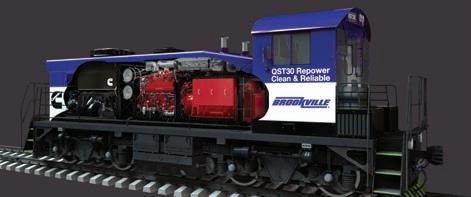
Remanufacture/Modernization FEATURES:
• Engine Replacement, Featuring EPA Certi ed, Fuel E cient, Low Emissions Engines
• Alternator Upgrades and Replacement
• Traction Motor Upgrades and Replacement
• Cab Upgrades, including Anti-Vibration and Climate Control
• Head End Power Replacement or Integration
• Advanced Locomotive Control Systems
18 Railway Age // September 2023 railwayage.com 2023 Product
showcase
& Innovations

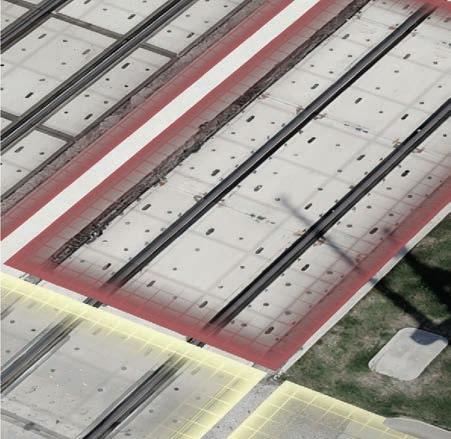
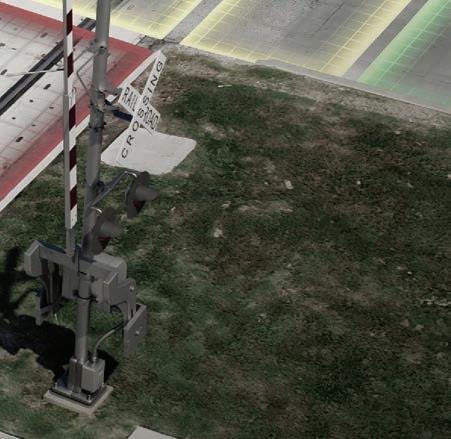
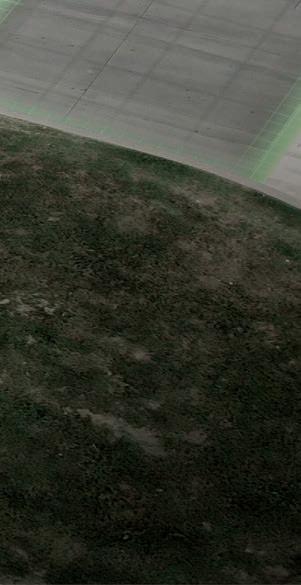


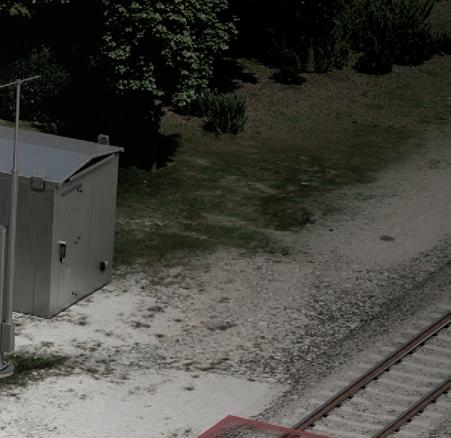


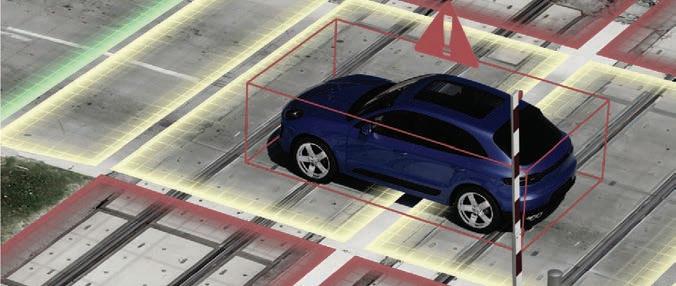
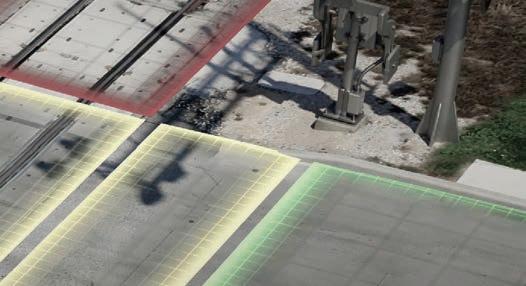
CLEVER DEVICES INTELLIGENT VEHICLE NETWORK FOR RAIL (IVN-R)
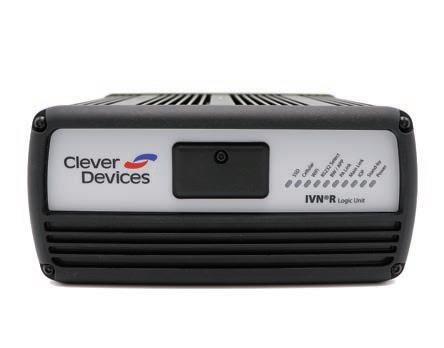
IVN-R is the foundation of the Clever Devices onboard rail solution. It is a fully contained, rail certi ed (EN50155, EN61373, EN50121 49 CFR 238), service proven, and reliable solution with enormous processing power.
e IVN-R operates the installed Clever Devices rail system applications as well as other onboard systems and various communications devices.
e IVN-R provides riders with automated audio and visual announcements as well as two-way text messaging between the vehicle operator and train controller and ad-hoc messaging to passengers from the train controller. e IVN-R interfaces with a cellular router or modem for real-time data communications between the IVN-R and the back-end systems. Examples of interfaces include onboard vehicle monitoring and diagnostic data is captured by the IVN-R for transmission to the back o ce for evaluation of vehicle status and overall performance; the ability to manage and control the information on your wayside and onboard communication, signage and infotainment systems; passenger emergency intercoms, crew intercoms, and onboard vehicle alarms supported by IVN-R, keeping you connected to riders and crew; integration with Automatic Passenger Counting (APC) systems to help monitor passenger loads and plan appropriate service levels; various analog or digital discrete inputs; on-board CCTV solutions; and communications through Land Mobile Radio (LMR). e Clever Devices onboard system interface is the Zero Client - Transit Control Head (ZC-TCH), a rail-certi ed interface contained in a rugged housing with a graphical 9-inch screen color backlit display with highly reliable touchscreen technology. e ZC-TCH communicates to the IVN-R using an Ethernet connection and serves as the interface where technical maintenance sta perform diagnostics and testing. Contact us: bit.ly/IVN-R
COMET REDESIGNED REMOTE SITE MONITOR MAKES PROACTIVE AEI MONITORING MORE USER FRIENDLY THAN EVER
Comet’s Remote Site Monitor (RSM) is a web-based monitoring and ticketing so ware that allows you to proactively track your AEI network and address minor issues before they become major.

• Map or list view of your entire AEI site network.
• Each AEI site’s health status is color-coded green (healthy), yellow (minor issue), or red (critical issue).
• When RSM picks up an error code from one of your sites, it sends you an SMS and/or email issue noti cation and auto-generates an issue ticket.
• Comprehensive issue history log for each site.
• Refreshed user interface design.
Track an issue’s status every step of the way, from assigning the ticket to a technician (automatically or manually), to troubleshooting and resolution. Modern railroaders know how important AEI is to their wayside infrastructure: not only for billing and logistics, but also for identifying the cars that HBDs and other critical detection systems ag as unsafe. RSM is the ideal companion so ware for monitoring and keeping your AEI network fully operational. Visit us at cometind.com/ electronics/remote-site-monitor to watch a demo and schedule a consultation.
20 Railway Age // September 2023 railwayage.com 2023 Product &
showcase
Innovations
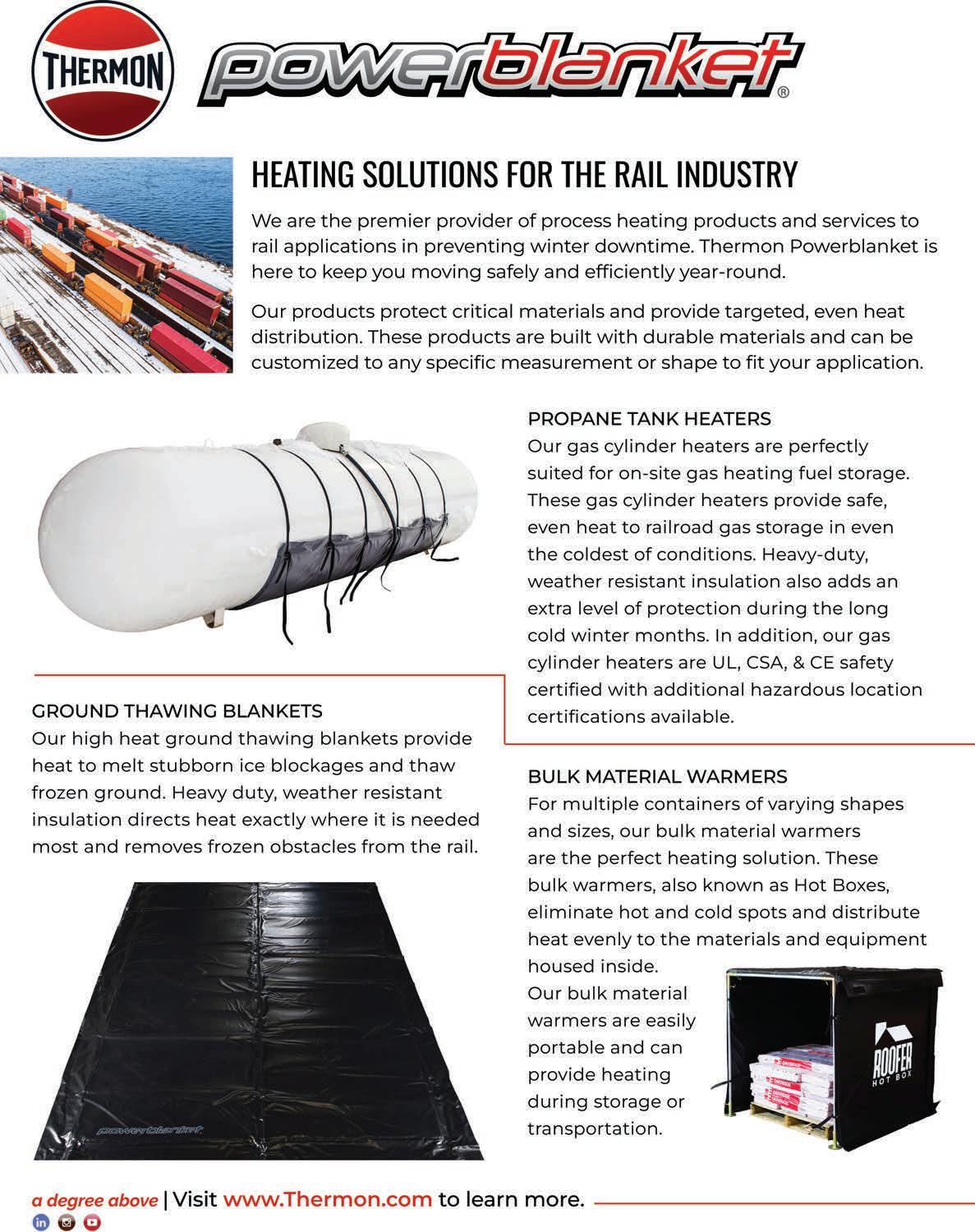
CYLUS RAIL TECH DSECURITY PLATFORM

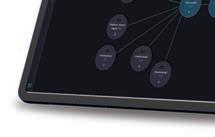




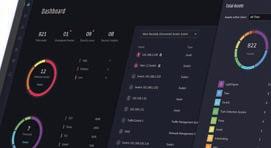
e rail industry is undergoing a digital revolution, but this transformation presents challenges for cybersecurity and risk management. With increasing risks and attack surfaces, those responsible for securing rail tech environments face new obstacles. Cyber risk is now seen as business risk, and cybersecurity and safety are intertwined. However, rail operators are investing in digitalization faster than they are growing their security budgets, and generic security tools may not serve the strategic need. Companies are increasingly seeking tailored cybersecurity platforms for their speci c vertical market, and by 2026, 76% of operators will demand speci c vertical market knowledge and capabilities, according to Gartner. Cylus, the global leader in rail cybersecurity, is expanding to meet these evolving needs by creating the new expanded Rail Tech Security Platform category. eir platform provides real-time visibility for security and operations teams, deep rail context, and mitigation guidance for every identi ed security situation. With increasing rail tech complexity and widening attack surfaces, rail operators and global regulators are demanding more innovative rail tech security. Cylus is committed to leading the rail transport industry to a cyber-secure future by supporting customers with a holistic and integrated Rail Tech Security Platform to protect their strategic rail operations assets.
DAIRYLAND ELECTRICAL INDUSTRIES OVERWATCH™ HEFPD

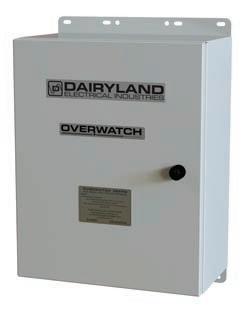
Overwatch™ HEFPD is a new class of device, designed using Dairyland’s proven solid-state technology to protect sensitive trackconnected crossing and signaling equipment from high-energy AC faults and lightning. Railroad systems are increasingly required to operate in common corridors with power transmission and distribution lines, presenting new equipment protection challenges. Damaging AC faults caused by failure of power utility equipment on overhead power lines present high-energy, long-duration events that typical lightning surge protective devices are not capable of withstanding. ese events pose a risk to track-connected signaling and crossing warning systems as well as other protective equipment. To address these concerns, Dairyland Electrical Industries has introduced Overwatch HEFPD, a new class of product in the railroad industry. Designed using Dairyland’s decades of experience in high-energy applications, Overwatch HEFPD uses proven solid-state technology that can withstand the powerful, long-duration events caused by AC faults to keep your sensitive track-connected equipment protected.
Benefits of Overwatch HEFPD
• Provides protection from both high-energy AC faults and lightning surges

• Designed and tested to meet AREMA Manual Part 11.3.7, as well as the applicable requirements of primary surge protection as de ned in 11.3.1
• Built to withstand multiple AC fault or lightning surge events without failure
• Dairyland’s proven solid-state design prevents sparks and arcing
• Extensive third-party testing/veri cation
Learn more at Dairyland.com/Overwatch. Visit us in booth 2341
22 Railway Age // September 2023 railwayage.com 2023 Product & Innovations showcase
WHO SAYS LESS IS MORE? MORE IS MORE.

Marmon On-Site Services means one team, one point of contact, and a custom solution for gate-to-gate on-site and mobile rail services. No company o ers more to make your operations more e cient. Together, we keep our world moving forward.
 Marmon On-Site Services Companies
Marmon On-Site Services Companies
DEUTA AMERICA
SAFETY-RELEVANT HMIS WITH DUETA TRUST TECHNOLOGIES
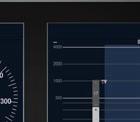
Requirements for safety-relevant Human Machine Interfaces (HMIs) for train operators are becoming more common around the world. With the increasing complexity of train control systems, additional functionality requires HMI devices to be safety critical. is includes requirements on information displayed (for example, current train speed), as well as input to the HMI from a human operator (a selection or acknowledgement). e solution: IconTrust® with SelectTrust® function. IconTrust detects display errors and di erentiates between the safety-related input areas on the HMI. e contained SelectTrust® function checks the activation or release of the touch area, or the single or continuous transmission of the activation.

Always safe: display and input.
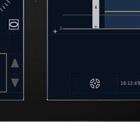


• Assessment up to SIL 3.
• Safe input and output.
• So ware and hardware from a single source.
• Easy assessment of application changes.
• Cost-e cient.
Deuta’s Trust Technology is the solution for all HMI displays that need to meet safety requirements. is includes train control displays (aspect display units) and train operator displays. As Deuta has already deployed this technology since 2014, the risks of new technology introduction are largely mitigated. Deuta Trust Technologies have an installed base of approximately 12,000 units, deployed in 35 countries and have become a standard in many train control suppliers’ platforms. www.deuta-america.com/us/
DUOS TECHNOLOGIES, INC.
RAILCAR INSPECTION PORTAL (RIP®)

Duos Railcar Inspection Portal (rip®) is transforming the railcar inspection process for Class I and passenger railroads. The average railcar contains hundreds of mechanical parts and components that are critical to the proper functioning of the railcar and must be inspected frequently to ensure safe and reliable operation. The rip® employs advanced optics, purpose-built sensors, and specialized lighting. Combined with specialized image processing technologies, Artificial Intelligence (“AI”) algorithms and advanced presentation software, a Duos rip® enables acquisition and presentation of high-resolution images of passing railcars at operating speeds up to 125 mph. Offering a detailed 360-degree view of each railcar, the rip® enables mechanical inspectors to perform comprehensive inspections using state-of-the-art software. Duos combines Artificial Intelligence/Machine Learning (AI/ML) with the rip® to automatically detect anomalies and mechanical issues in real time with the capability to notify the operator of significant defects. Duos’ highly skilled development staff builds industry-specific machine learning algorithms, developed exclusively for the rip®. Each expertly designed algorithm targets and detects specific problem areas, including those required to maintain compliance with regulatory guidelines, providing a pathway to request inspection waivers if desired. We have scanned more than 2.1 million railcars in a 90-day period. More information on this system and others is available at https://www.duostechnologies.com/
Features & Benefits:
• Increase Safety—Employees, General Public & Customers
• Reduce Cost of Risk—Derailment Prevention & Service Interruption Reduction
• Decrease Dwell Times & Improve Equipment Turns
• Improve Overall Fleet Health by Proactively Managing Car Repair Process
• Accelerate Customer Communications and Regulatory Compliance
24 Railway Age // September 2023 railwayage.com 2023 Product &
showcase
Innovations
TRACK on for

HIGH CAPACITY | PRECISION | RELIABILITY
Some see steel tracks. We see safer connections — trusted pathways maintained by our high performance, American-engineered technology. Because wherever they lead, at the end of the line, everything is riding on quality. plasseramerican.com

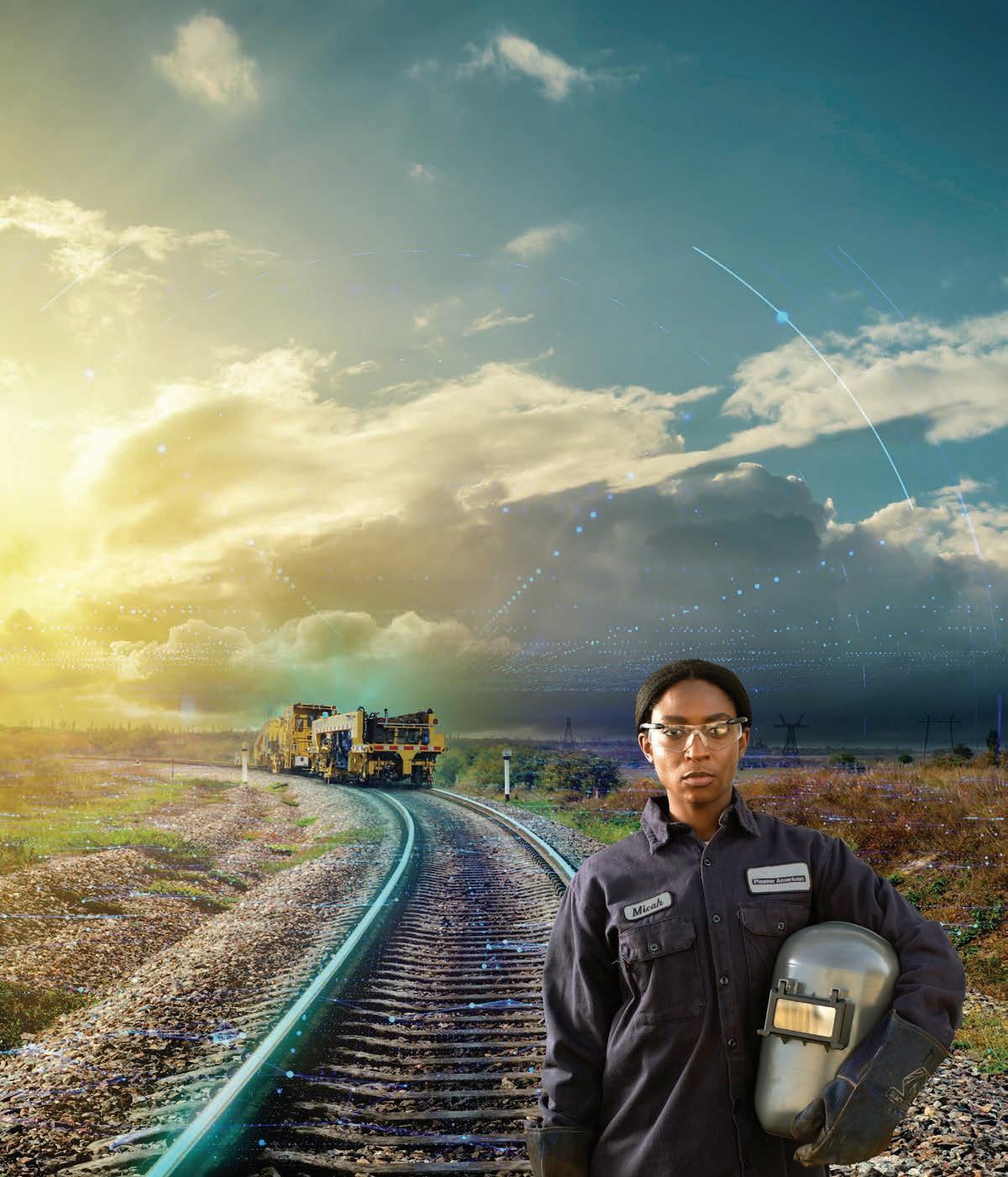
tomorrow
ENSCO RAIL URFS: ADDRESSING TODAY’S RAIL INDUSTRY NEEDS AND PIONEERING TOMORROW’S INNOVATIONS
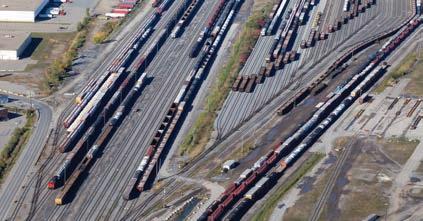
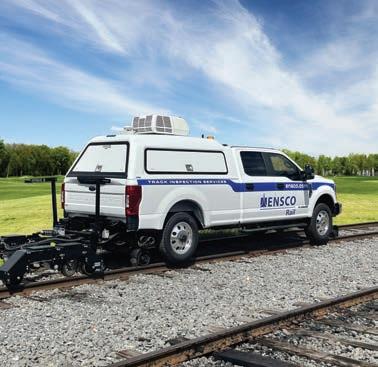
ENSCO Rail is a global leader that addresses rail aw testing needs with services and products. In the dynamic rail technology landscape, ENSCO Rail’s Ultrasonic Rail Flaw System (URFS) sets the standard for accurate, e cient and reliable rail inspection. is integrated URFS solution is a game-changing system that ensures precise aw detection and streamlined inspection processes, making it a standout in the rail aw products industry. In response to industry demands, ENSCO’s URFS seamlessly integrates with visual inspection and thermal imaging o ering a comprehensive track assessment. is empowers maintenance teams to make informed choices by combining technologies e ectively. ENSCO’s dedication to innovation shines through, with so ware engineers adeptly integrating rail surface imaging and rail pro le measurement into URFS, enhancing accuracy while remaining cost-e ective. By harnessing Machine Learning and Arti cial Intelligence (ML/AI), ENSCO Rail leads the charge in technology-driven rail solutions. ML/AI expertise enhances URFS, showcasing our commitment to top-quality products. ENSCO Rail’s passion for progress and leveraging cutting-edge advancements guarantees enduring precision, e ciency and safety in rail transportation. URFS is essential for hi-rails and rail-bound vehicles, detecting and preventing safety risks to avoid derailments. It integrates with technologies like machine vision and rail pro le measurement, o ering bene ts such as pinpoint defect detection and streamlined controls. When combined with ENSCO Rail’s machine vision solutions like Rail Surface Imaging and Joint Bar Imaging, URFS signi cantly enhances rail integrity assessment. Despite the shi to continuous testing, ultrasonic rail aw inspections remain crucial. URFS adds value by reducing false-stops, enhancing automation-driven productivity, improving true-positive detection, and predicting/preventing rail aws.
FRAUSCHER SENSOR TECHNOLOGY RELIABLE AND ROBUST AXLE COUNTING SYSTEMS
For over 35 years, Frauscher has been known globally as the gold standard producer of wheel sensors and axle counters. We are also known for a high level of investment annually in R&D, helping to improve existing products and develop new ones. Most importantly, we actively listen to our customers and encourage them to reach out with speci c pain points and to tell us what they need. Within the past year, this philosophy led to development of the Frauscher Track Vacancy System FTVS. Several of our Class I customers expressed interest in a track vacancy system based on our RSR110 Wheel Sensor. is non-vital solution is appropriate for use in applications where CENELEC SIL4 vitality is not required, such as for switch point protection in yards. Complex switch layouts and distributed control systems found in yards present special challenges for conventional signaling systems, due to space constraints, sub-optimal ballast conditions and high maintenance requirements. e FTVS is perfectly suited for these locations:
• Immune to e ects of snow, water, ice, dirt and changing ballast resistance
• No drilling, joints, or bonds to install and maintain.
• Easy installation—wheel sensors are clamped to the rail in under ve minutes.
• Small footprint required in the wayside signal equipment.
• e ability to determine exact fouling points.
• Minimal maintenance requirements.
• Easy integration with any existing control system.
• Minimal wiring requirements.
Several Class I railroads have implemented FTVS, and the results have been very favorable. We are con dent that additional railroads and transits will utilize this unique and e cient system in the near future. We look forward to the opportunity to demonstrate FTVS and discuss additional details at Railway Interchange and APTA Expo in October. www.frauscher.us
26 Railway Age // September 2023 railwayage.com 2023 Product & Innovations showcase
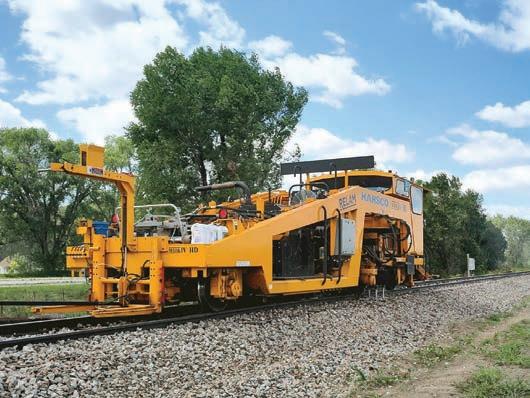
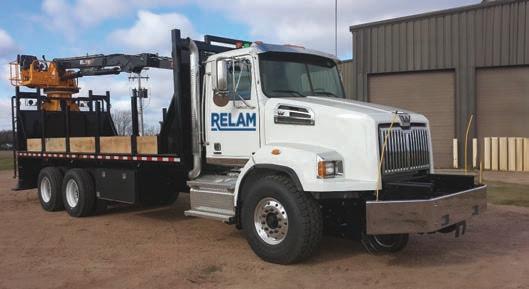






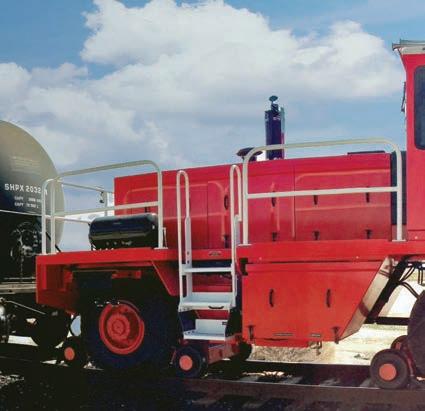







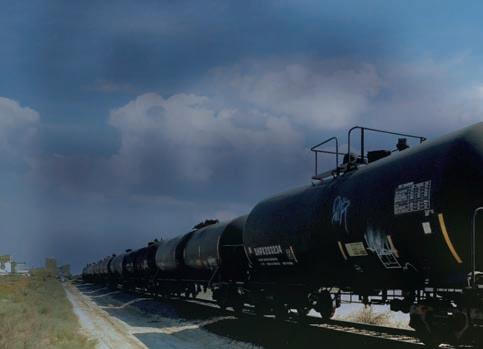


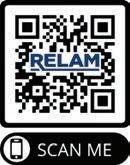
 Harsco Mark IV Production Tamper
Harsco Mark IV Production Tamper
Hi-Rail
SAVE CAPITAL. MAXIMIZE PROFITS. INCLUDE RELAM IN YOUR PROJECT PLANNING CONTACT US TO START PLANNING TODAY. Renting lets you save your capital. Planning ahead ensures accurate operating budgets. Call us before contracts are signed to fill out your fleet with the profits you need. Get accurate rental rates right away. Plan longer rental terms at lower rates. Get the equipment you need when you need it. • • •
Nordco TRIPP Tie Exchanger
Grapple Truck
CONTACT US. LET’S TALK BUSINESS. 800.962.2902 quotes@RELAMinc.com RELAMinc.com RELAM, Inc. 7695 Bond Street Glenwillow, Ohio 44139
Nordco Shuttlewagon Railcar Mover
THE GREENBRIER COMPANIES
HIGH-STRENGTH STEEL GONDOLA
ree of America’s leading industrial and transportation companies—United States Steel Corporation, Norfolk Southern Railway and e Greenbrier Companies—have created a unique partnership to produce a new, more sustainable steel gondola railcar. Using an innovative formula for high-strength, lighter-weight steel developed by U. S. Steel, each gondola’s unloaded weight is reduced by up to 15,000 pounds. ese award-winning gondolas will provide an extended lifecycle, increased sustainability and greater freight capacity. See the railcar revolution at go.gbrx.com/gondola
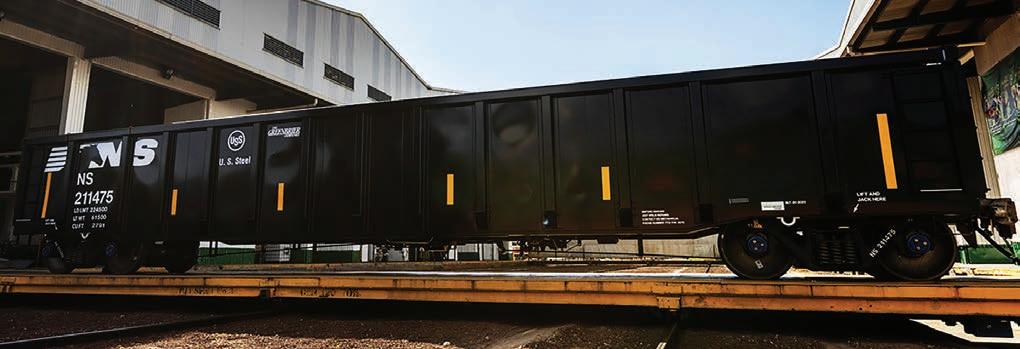
GREENKOTE®
HIGH-PERFORMANCE ANTICORROSION COATINGS FOR RAIL HARDWARE
Greenkote® anticorrosion metal coatings (greenkote.com) can signi cantly extend the service life of rail fasteners and xtures that have long-term exposure to weather and harsh environments. ese coatings are especially useful in applications with high humidity or wetness, as well as where visual rusting is aesthetically undesirable. e newest, highest-performance Greenkote coating is G5k™ which extends anticorrosion protection to over 5,000 hours of ASTM B117 salt spray testing, to stand up to the most challenging conditions. Employing a patented zinc thermal di usion process, Greenkote coating is physically di used into the surface of metal parts, for an exceptionally strong, permanent metallurgical bond. Its corrosion resistance lasts longer, without chipping or peeling. And with an intrinsically high surface hardness, up to HRC 40-42, Greenkote survives bulk handling, contact with installation tooling and service conditions. Plus, Greenkote coverage is highly conformal and uniform, making it ideal for parts with complex geometries. e Greenkote name derives from its eco-friendliness. Unlike many coating processes, Greenkote uses no hazardous materials, generates no toxic wastes, and is benign to the environment. It passes even the strictest environmental regulations around the globe. Fast-turnaround coating of parts can be scheduled at the Greenkote headquarters facility in Ohio or at many other Greenkote locations internationally. Contact: 1 (440) 243-2865 or contactus@greenkote.com. Greenkote® and G5k™ are trademarks of Greenkote PLC. For additional information: Mark Gore, CEO; Greenkote PLC; 6435 Eastland Road; Brook Park, Ohio 44142; O ce: +1 440.243.2865; Cell: +1 925.719.3573 (preferred); mark.gore@greenkote.com; www.greenkote.com
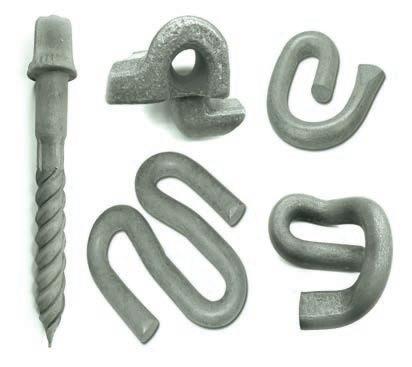
28 Railway Age // September 2023 railwayage.com 2023 Product & Innovations showcase






















































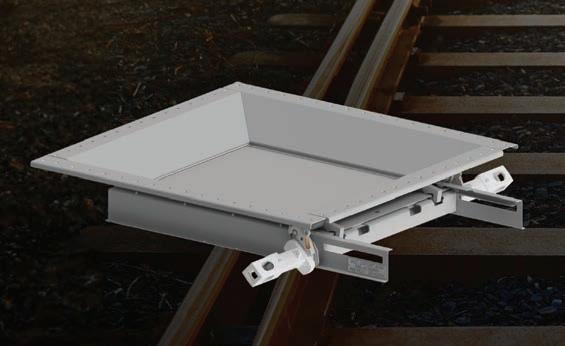




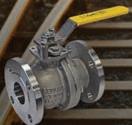













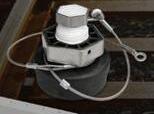

Discover all that Stucki and Salco has to offer at the 2023 Railway Interchange Exhibition. October 1-4, 2023 in Indianapolis, IN. Stucki/Salco Booth Number: 3665
HERZOG RAILSENTRY™: CRITICAL ASSET MONITORING FOR RAILROADS
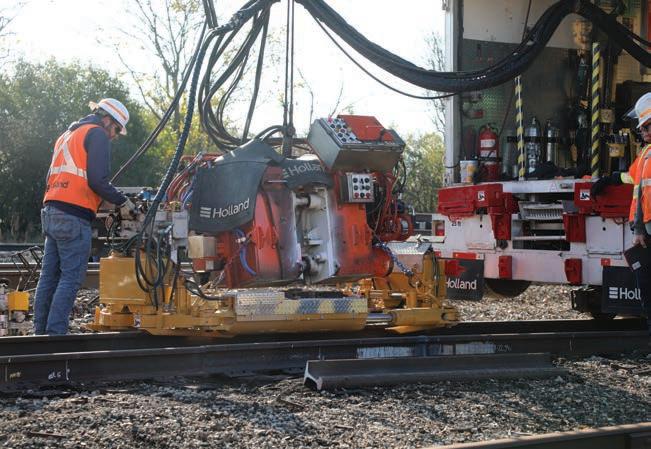
Experience the future of railroad safety with RailSentry™, Herzog’s cutting-edge object detection and alerting system. RailSentry is an advanced, intelligent solution that mitigates collisions between a train and vehicles, people or other objects. It is the only solution that integrates with Positive Train Control (PTC) and the locomotive onboard unit to notify locomotive engineers of a potential hazard ahead. Harnessing decades of Herzog’s expertise in railroading, RailSentry is poised to rede ne railroad safety. e system is meticulously programmed to emulate the mindset of a seasoned railroader, employing business logic developed and re ned through years of hands-on experience working in rail environments. From trespassers to stalled vehicles to obstructions on track, RailSentry’s advanced sensors detect these threats in real time. Whether positioned at crossings, stations, bridges or other areas of interest along the ROW, RailSentry provides comprehensive sensor and video coverage, ensuring that potential risks are identi ed across these critical locations. RailSentry excels in analyzing and modeling intricate situations, o ering a comprehensive approach to mitigating potential risks. e system’s ability to seamlessly integrate with existing railroad infrastructure enhances its adaptability, ensuring a smooth incorporation process without disrupting operations. With RailSentry, proactive safety takes center stage. e system’s object detection capabilities provide identi cation of potential hazards in real time. e moment an obstacle is detected, RailSentry’s alert system triggers, providing timely noti cations to locomotive engineers, train dispatchers, security personnel or emergency services, through messaging applications or integrated warning devices, such as electronic signage and audible alerts. Herzog’s visionary technology underscores the industry’s progression toward a safer, more secure, and technologically advanced future. Visit with Herzog at Railway Interchange to discover a smarter way to ensure your railroad’s safety with RailSentry.

HOLLAND SHORT PLUG FLASH-BUTT REPAIR WELDING
For over 50 years, Holland has been performing mobile ash-butt welding around the globe. e newest to Holland’s welding portfolio is Short Plug Flash-Butt Repair Welding. is ash-butt welding process provides higher quality and more cost-e ective defect remediation compared to traditional methods with less equipment and labor needed. Flash-butt welding o ers other bene ts as well including reduced maintenance costs, faster installation, no weld ller material, and a smaller heat-a ected zone. With Holland’s short plug repair welding gang, 5-foot plugs are used with two pieces of equipment and a total of four (railroad and Holland) employees. By using 5-foot plugs out of a 40- or 20-foot piece of rail, there is no scrap. Typical repairs take between 60-75 minutes and a single four-man crew can match the e ciency of three thermite crews. At the heart of our ash-butt welding services is our Intelliweld® Control System which provides superior control over the ashing process and rail consumption. is system provides real-time weld monitoring, control, and diagnostics along with automated data collection. Our customers can access a full production report within 60 minutes of the weld being completed. is weld data is compiled and can be delivered in customer-speci c formats.
30 Railway Age // September 2023 railwayage.com 2023 Product & Innovations showcase
HUMATICS HUMATICS FOCUS™
Enable predictive maintenance with Humatics. Humatics Focus™ is a track and train condition monitoring solution that leverages the onboard sensors of revenue service trains and provides maintenance insights. e sensor data is continuously collected as vehicles run in service without any need to interface with other onboard systems. Track conditions are assessed via proprietary machine-learning algorithms and displayed on userfriendly dashboards that show precise geotagging of track anomalies. e system uses inertial measurement sensors to measure vehicle dynamics fused with positional data to allow accurate geotagging of anomalies. e geotagging is achieved with a variety of sensors based on the environment such as GPS-RTK, traditional onboard odometry, radio-ranging, video, or LiDAR-based solutions for GPS-denied territories. When installed on multiple vehicles, the Humatics Focus™ system will perform cross- eet analytics to predict vehicle maintenance needs. Humatics Focus™ supplements mandatory track inspections performed by specialized track geometry vehicles. e continuous track condition monitoring covers any applications on rail—both transit and freight—transforming any suitable rolling stock unit into a data collection instrument. Earlier this summer, Humatics installed Focus™ systems on two light rail vehicles at New Jersey Transit. Installation was completed in three hours per train. As part of the trials, both onboard systems collected more than 5,000 miles of track data. e track section under monitoring was analyzed and no immediate track issues were identi ed as con rmed by NJT. To get insights from your track and rolling stock, contact us at transit@humatics.com
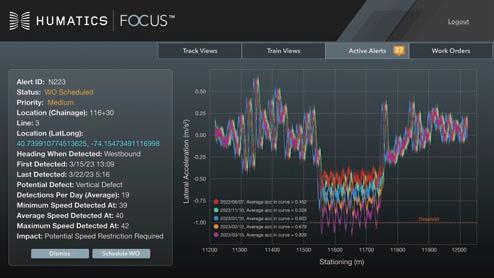
ICOMERA
VIDEO SURVEILLANCE & ANALYTICS
Icomera’s applied expertise in connected solutions for rail transport delivers a Video Surveillance, Analytics & Monitoring solution allowing operators to remotely view live onboard camera feeds and retrieve footage of any incidents while the vehicle is in service. Once connected, onboard surveillance cameras can live-stream HD video feeds, playback, and download footage regardless of the vehicle’s speed or location. e solution has been designed to integrate the latest advancements in video analytics as they become available, including:
• Monitoring track health, track obstruction, catenary and pantographs.
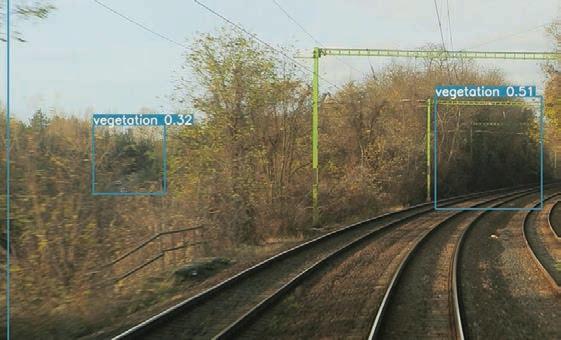
• Detecting vegetation, smoke, re, objects or aggressive behavior.
• Identifying distracted drivers and relaying that information back to an operations center, without the need to constantly stream video footage o the vehicle or manually monitor onboard.
On-demand access to data like this supports the resilient and reliable “predict and prevent” strategies that are key to creating smarter, safer rail networks.
September 2023 // Railway Age 31 railwayage.com 2023 Product & innovations showcase
INTELLITRANS INTELLITRANS TMS
IntelliTrans is a leader in managing rail freight, managing 90% of rail freight in the U.S. for mining, coal, lumber/ forestry, food, oil/gas, and other industries. IntelliTrans TMS is the only SaaS-based TMS that provides holistic and seamless shipment visibility and execution across rail, truck, intermodal, barge, and ocean shipments. is comprehensive platform streamlines transportation and logistics management, lowering costs and increasing customers’ satisfaction with shipments. IntelliTrans provides supply chain transparency for bulk and break-bulk shippers, tracking your shipments in realtime across di erent modes of transportation and lowering shipment costs 5-10%. Accessible via an online dashboard, IntelliTrans integrates data from various sources to continuously optimize and improve your shipments. Our system helps automate processes across your operations by providing a holistic data integration platform—pinpointing the most a ordable, reliable carriers in any mode, lowering demurrage rates up to 77%, and alerting transportation delays in real-time for better communication. Multi-modal Transportation Management Solutions have also been proven to reduce total transportation costs 5-10% and deliver an ROI in less than 9 months. IntelliTrans’ Global Control Tower provides high levels of supply chain transparency; aggregates, completes, and enhances data from a variety of sources; o ers visibility into and execution of di erent aspects of the supply chain; and generates data-driven alerts and analytics that ask deeper questions and deliver meaningful insights. By leveraging tracking information, the Global Control Tower provides analytics that measures key performance indicators (KPIs) like eet cycle time, origin/destination dwell time, lane and hauler performance, back orders, freight spend, load optimization, and more. With their rate, equipment, lease, tracking, and invoice data in a central repository that’s accessible 24/7, companies can position themselves for success in any market conditions.

IRIDIUM THALES MISSIONLINK® 200
Iridium proudly keeps railways around the world on track, providing reliable connectivity in areas unreached by cellular, land-based, or even other satellite providers. Delivering mission-critical services through low-cost equipment, Iridium provides consistent performance on-the-move, ensuring valuable telematics, location, and safety information can be reliably sent and received from the train. e ales MissionLINK® 200 powered by Iridium Certus® extends your reach beyond terrestrial coverage with weather-resilient, reliable satellite connectivity. With upload and download speeds up to 176 Kbps, Iridium Certus 200 delivers reliable, truly global coverage through small, lightweight, low-power equipment. From highquality voice calling on-the-move to internet and messaging and critical remote applications, Iridium Certus 200 o ers an a ordable broadband connectivity solution, keeping you on track anywhere in the world. Key applications and features include real-time tracking and tra c management, asset visibility and monitoring, positive train control, engine information, locomotive diagnostics, onboard system condition reporting, unattended sensor reporting, and more. To learn more, visit www.iridium.com/rail.
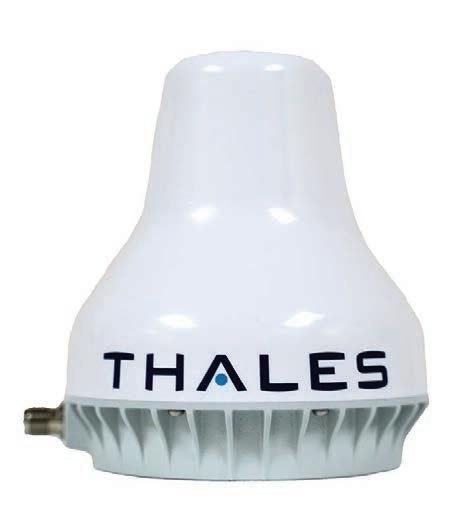
32 Railway Age // September 2023 railwayage.com 2023 Product &
showcase
Innovations
KAWASAKI RAILCAR – TRACK TECHNOLOGIES
AUTONOMOUS TRACK INSPECTION SYSTEMS
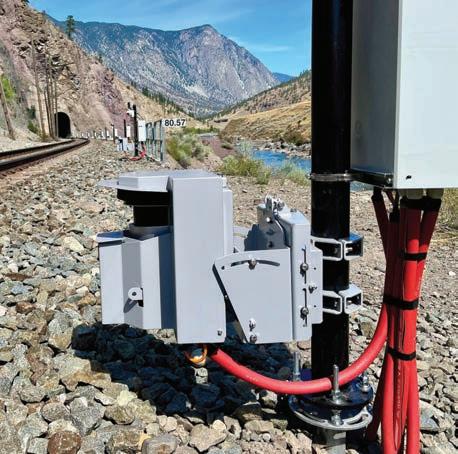
Kawasaki’s latest developing product is an autonomous track component monitoring system. is technology, while installed on a locomotive, will capture high-resolution pictures and provide the necessary data for Kawasaki to utilize machine learning algorithms to identify track fasteners and other track components that need to be inspected and repaired. A er successful testing with railroads in Japan during 2022, testing began with freight railroads in North America earlier this year. Production systems will be available in early 2024. Along with the track component monitoring system and Kawasaki’s locomotive-mounted autonomous track geometry monitoring system in production since 2021, Kawasaki is also developing a so ware platform designed to make track inspection and repair safer and more e cient. Beta testing of the so ware platform will begin this fall. “We are excited to bring locomotive-mounted autonomous inspection technology to the North American marketplace,” said Ryoji Negi, Project Manager at Kawasaki. “With this innovative technology, any time the locomotive is moving and pulling passengers or freight, it is testing track and providing a frequent, valuable, cost-e cient service to our customers. is is another building block for Kawasaki’s vision of providing a complete suite of autonomous track inspection products along with predictive data modeling and platform to provide our customers the ability to be safer and more e cient with their track maintenance spend.” More information at https://www.kawasaki-track.com.
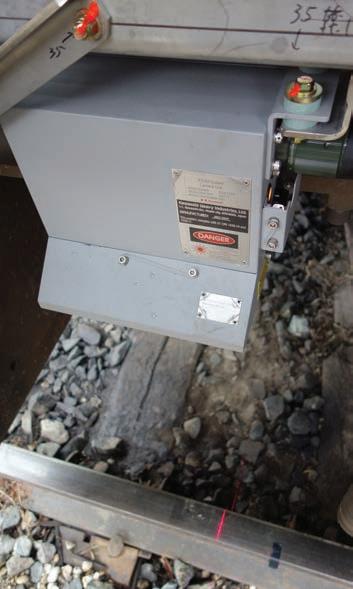
L.B. FOSTER L.B. FOSTER PLACES SAFETY FIRST
L.B. Foster adopts and deploys the latest technological advances to improve safety and reduce accidents by automating processes, reducing human error, reducing trackside maintenance, and providing realtime monitoring and alerts. Our Friction Management (FM) portfolio supports railroads as they continue to look to their FM programs to maximize value in terms of fuel savings, reducing GHG emissions, and extending rail life. In addition, a well-run FM program can reduce the state of stress acting on their track infrastructure which, from a safety perspective, can reduce track spreading and derailments. Our Total Track Monitoring portfolio was created to drive e ciencies, cost-e ectiveness, and, ultimately, enable rail safety for freight, transit, and industrial customers. e WILDIV system remotely monitors rail vehicle wheel health to ensure safe and productive train operations. It allows users to detect wheel defects, reduce the likelihood of wheel and load related derailments, avoid costly transfer penalties, extend wheelset lifespan, and enhance maintenance and operational e ciency. Rockfall Monitoring uses LiDAR technology to scan above the track for rocks and obstacles that pose a risk to trains. If a rock or obstacle of critical size is detected on track, a relay is dropped, and controllers are remotely alerted about the size and location of the obstruction. Our Flood Monitoring is a 24/7 wireless inspection system that detects high water levels in ood-prone areas, helping to detect ooding near rail in real time. We are universally committed to enabling safety and believe that by placing safety rst, we can build trust and con dence in our business and contribute to a safer world.
September 2023 // Railway Age 33 railwayage.com 2023 Product & innovations showcase
Product & Innovations showcase
LORAM RAIL PRO® INFINITY

Loram continues to prioritize the deployment of its advanced so ware technology, Rail Pro® In nity, for production rail grinding. is revolutionary so ware controls the position of grind stones used by Loram’s rail grinders, allowing for precise removal of damaged or fatigued metal and shaping of rails to desired pro les. e implementation of Rail Pro In nity has led to improved conformity to desired rail pro les with less grinding e ort, resulting in reduced energy and fuel consumption for Loram’s rail grinding customers. Loram was recently recognized for these achievements and honored as an Innovation winner at the inaugural Norfolk Southern oroughbred Sustainability Partner Awards. anks to Rail Pro In nity, Loram was able to grind more pass miles for NS than ever before, while helping NS achieve its ESG goals of reducing fuel consumption and reducing its carbon footprint. Additionally, since 2021, Loram customers utilizing Rail Pro In nity helped reduce thousands of gallons of fuel consumption and tons of CO2 emissions. Furthermore, Loram’s customers have bene ted from reduced rail head loss of up to 15%, slowing rail wear and avoiding future CO2 emissions. Rail Pro In nity helps railroads not only improve rail quality but also reduce their carbon footprint.
LORAM TECHNOLOGIES INC. LORAM VIRTUAL RAIL
Loram Technologies Inc.
(LTI) launched Loram Virtual Rail (LoramVR) so ware to help with maintenance and capital planning. e so ware modules support end-to-end pre-inspection, optimization, planning, execution, and quality management of maintenance work across the full track—wheel-rail interface, ties, ballast and substructure. e most recent innovation, Digital Twin, uses physics-based wear and rolling contact fatigue life extension models and economics to allow users to compare and quantify maintenance scenarios. LoramVR uses this technology to extend the life of assets and quantify real-world cost savings before implementing the strategies in the eld. Implementations are helping to prevent squat/stud defects, improve grinding schedules and target rail pro les for mainline and turnouts, optimize grinding, tie replacement and tamping schedules, implement friction management, and more. e core intellectual property was awarded a patent this year based on the utility and novelty of applying the so ware at freight and passenger railroads. e so ware data infrastructure integrates with existing linear data analytics and enterprise asset management so ware, like Trapeze EAM at transit agencies, to help make the experience easier for railroads. Previously only available in North America, LTI has made these so ware and services available to customers around the globe including Brazil, Europe, Australia and other countries. More information can be found at https:// loram.com/inspection-and-optimization/loram-vr/.

34 Railway Age // September 2023 railwayage.com 2023
MAXACCEL SAFETRACK CREW™
MaxAccel’s SafeTrack Crew™ management application continues to evolve with new features and functionality as a growing addition to our market-leading SafeTrack platform. SafeTrack Crew at its core manages job scheduling and crew assignments including vacancy management. e web-based system provides common crew management functionality, such as employee certi cation status, extra boards, transactional history, employee communications, hours of service compliance, job/territory quali cation and payroll, with claims and arbitraries. New functionality includes improved extra board management functionality, temporary job assignment, and relief job assignment, among others. e SafeTrack Crew Mobile™ smartphone app o ers a range of bene ts to Train and Engine employees and our SafeTrack customers in general. Real-time job and extra board status informs employees of their upcoming work assignments along with supplemental information important to their quality of life. SafeTrack Crew represents the next-generation crew management solution for the railroad industry—an easy to implement and easy to use, highly functional system supporting railroads large and small. We believe SafeTrack Crew o ers a more economical and streamlined crew management system, tailored to meet the needs of our customers and the transportation market in general. MaxAccel’s focus is developing web-based so ware solutions to drive safety, regulatory compliance, operational e ciency and ROI for our customers. Over 200 freight railroads, passenger operations and railroad contractors rely on MaxAccel’s suite of AssetPro™ and SafeTrack™ applications every day. Please contact us at www.MaxAccel.com for additional information or to request a product demo.
MICHIGAN STATE UNIVERSITY RAILWAY MANAGEMENT CERTIFICATE PROGRAM
Michigan State University’s residential four-week in-person Railway Management Certi cate Program covers the complex railway industry from a conceptual and practical business perspective. e program is for individuals with potential to become senior managers and leaders across the rail industry. Content appeals to freight and passenger railroads, transit authorities, industry and regulatory agencies, suppliers, and shippers. We include critical and topical subjects taught in a classroom setting with interactive discussions. Several site visits aid learning and include railroad facilities, customers, suppliers, associations and agencies. e price per participant is $17,500 with a $500 reduction for registration and payment by the early bird cuto date (to be announced). Discounts are available for multiple participants from the same rm. e price includes instructional materials, faculty and sta support, overnight rooms, and daily breakfast and lunch. A Certi cate in Railway Management will be awarded on completion of the program. Modules are also available to be taken individually.
2024 Railway Management Certi cate Program:
• Module 1: Railway Business Administration, Strategy, and Leadership
April 22-26, 2024 | East Lansing, Michigan
• Module 2: Railway Regulation, Safety, and the Rail Industry

June 3-7, 2024 | Washington, D.C. Area & Newark, New Jersey
• Module 3: Railway Engineering and Technology
Sept. 9-13, 2024 | Pueblo, Colorado
• Module 4: Railway Operations
Oct. 28 - Nov. 1, 2024 | Chicago, Illinois
Visit us at Booth #4856 at the 2023 Railway Interchange or visit raileducation.com for more information.


September 2023 // Railway Age 35 railwayage.com 2023 Product & innovations showcase
MINER ENTERPRISES
MINER FCS® IMPROVES OPERATIONS, REDUCES COSTS
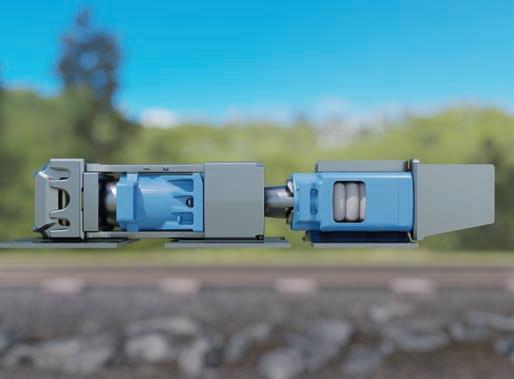
Many railcars in service today are inadequately protected by hydraulic cushioning devices. Energy is not e ciently managed, resulting in broken knuckles, hose separations and lading shi s—plus shortened life cycles and costly maintenance. Miner’s Friction Cushioning System—Miner FCS®—provides a solution that improves operations, protects assets and reduces costs. Reduced Maintenance Cost, Better Asset Protection: e Miner FCS®-C system uses two dra gears in a specialized tandem arrangement. It ts tightly in the pocket and minimizes free movement caused by slack. Miner FCS improves operations by managing this slack, reducing service interruptions and providing the exibility to safely operate longer trains. Reduce Undesirable Train Stoppages: By combining dra gear friction with Miner’s patented TecsPak spring material, the Miner FCS substantially decreases run-in and run-out events. is reduces lading shi s, broken knuckles and hose separations—causes for undesired stoppages and costly delays associated with hydraulic units. Miner’s Friction Cushioning System easily installs on refrigerated and standard boxcars and steel coil cars, as well as on at cars, including centerbeam and general service ats. Not New—Proven—With Years of Development: Miner has been collaborating with Class I railroads for several years in developing the Miner FCS. More than 4,000 cars equipped with Miner FCS are currently in service, with a combined 100 million miles traveled. Learn more about how Miner FCS improves operations, protects assets and reduces costs.

View the Miner FCS video here: https://www.minerent.com/Friction_Cushioning_Systems.php
NEW YORK BLOWER COMPANY LOCOMOTIVE BLOWERS AND FANS
Locomotive blowers typically provide cooling air to critical electrical components, including traction motors, electrical lockers, main generators and other various equipment. Fans are used for dynamic braking systems, electrical room ltration/dust control, and loading/o loading bay dust collection systems. Fans can be customized, with heavy gauge construction, corrosion resistant materials and compact designs based on the application requirements. In addition, innovations in technology allow for easy remote monitoring devices to be installed to measure air ow, vibration, temperature, and/or airstream particulate. ere are numerous bene ts of incorporating fan sensor systems, including the ability to minimize power usage/ energy costs, avoid unpredictable downtime, increase longevity of the machinery, and reduce operating expenses. NYB-manufactured locomotive fans are designed by experienced engineers and undergo rigorous testing, which can involve nite element analysis (FEA) and computational ow dynamics (CFD) modeling, overspeed testing, seismic analysis/testing, modal analysis and/or air, sound and performance testing in our AMCA accredited laboratory. Both testing before installation and remote monitoring a er help to ensure a longer service life while fans endure constant vibration, cycling, temperature uctuations and elevation changes. NYB fans carry the AAR M-1003 Certi cate, which is earned by satisfying the strict requirements put forth by the Association of American Railroads (AAR) quality assurance program. To speak with an expert on speci c application requirements or to request more information, visit www.nyb.com or call 800.208.7918.
36 Railway Age // September 2023 railwayage.com 2023 Product & Innovations showcase
NEXXIOT REMOVING UNCERTAINTY WITH REAL-TIME ASSET MONITORING








e rail industry is now achieving full asset visibility with the Globehopper IoT gateway and Vector sensor from Nexxiot. Installed and set up in just minutes, these technologies enable rail operators to monitor location, movements, shocks, door and hatch opening events, and handbrake status. It is the real-time visibility that is needed to control operations, deliver cargo in great condition and automate essential processes—with full con dence. e Globehopper is a maintenance-free, safety-certi ed IoT gateway that’s xed to railcars and tank containers. It provides information on the asset’s precise location, conditions, events and asset utilization. e device connects with the Connect Intelligent Cloud, for global access to valuable data, analysis and insights. Vector compliments the capabilities of Globehopper by tracking doors, hatches and handbrakes, to give the status in real time, for smooth operations, better safety, and for managing the maintenance and wear of parts. With the Vector sensor hardware device lasting for more than 15 years, it provides long-term digital value for railcar eets by enabling gains in e ciency, safety and cargo integrity. Rail freight stakeholders require visibility to provide full accountability and con dence to shippers. Cargo owners and shippers need assurances that their goods will travel safely and securely to their destination. Nexxiot’s monitoring solutions capture and process billions of data points to enhance service availability and create more optionality for supply chain participants. Nexxiot delivers quality data and meaningful insights for easier, safer and cleaner global transportation. Learn more at www.nexxiot.com




NISUS CORPORATION CELLUTREAT®




























When you protect your ties, you protect your investment. Incipient decay begins during air seasoning—that means your investment is already under threat before a tie is ever laid. Protect your ties before air seasoning with Cellutreat®. Cellutreat is a disodium octaborate tetrahydrate (DOT) preservative, available in powder and liquid formulations, that prevents decay from developing and helps reduce mechanical failure in track, thwarting the spread of pathogens, wood destroying insects, and wood destroying organisms. A micro micelle emulsion, Cellutreat’s formula allows for an exceptionally high concentration of borate, allowing a single dip to hit the AWPA and AREMA retention and for the deeper penetration of the preservative toward the heart wood via di usion. ese factors mean that Cellutreat defends against spike kill, a leading cause of tie failure, while also guarding against termite infestation and creosote-tolerant fungi. It also protects heart wood from brown rot and white rot decay. When you treat your ties before air seasoning with Cellutreat, you also help diminish the impact of corrosion and corrosion-induced decay, ensuring that your ties are safeguarded from common threats to dramatically extend their service life. It’s an added level of protection that will guard your investment and your bottom line. Innovation in wood preservation from Nisus—Better Science for a Better World. www.nisuscorp.com

September 2023 // Railway Age 37 railwayage.com 2023 Product & innovations showcase
NSH USA CORPORATION
THE NEXT STEP IN WHEEL SET MAINTENANCE: STANRAY® M-SERIES WHEEL TRUING MACHINES
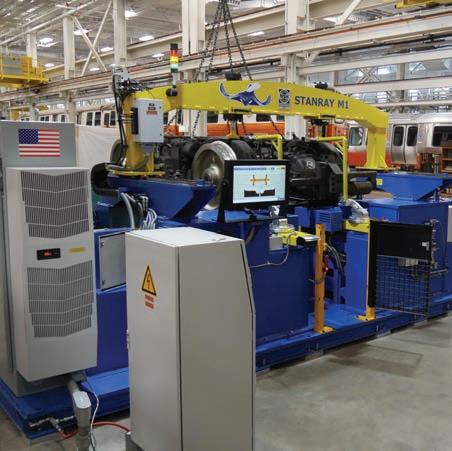
Stanray® Wheel Truing Machines—manufactured by NSH USA Corporation in Albany, N.Y.—have been the standard for wheelset repro ling throughout North America for decades. e machines utilize milling technology (known as “wheel truing”), where the wheelset rotates slowly while the cutting tool with multiple cutting inserts rotates rapidly. is wheel repro ling technology di ers from a lathe (known as “turning”), where the wheelset rotates rapidly and the single point cutting tool is stationary. For customers with moderate or extreme wheel wear, wheel truing (milling) is the ideal solution, due to the milling cutter’s e cient material removal properties. NSH USA recently updated the Stanray product line with the M-Series Wheel Truing Machines. While still employing milling technology, the new machines include innovations that were not possible when the Stanray was introduced in 1949. ey now feature integrated measurement for more e cient machining and better access to asset data. e system’s automated machining and measuring cycles mean less chance for operator error and increased safety. And with the patented centerless wheelset clamping, less time is spent accessing axle centers. e new machines can be installed on the facility’s oor as an Above-Floor M1 or in a pit as an Under oor M2 or M3. Combining dependable wheel truing technology with modern measuring and automation practices, the Stanray® M-Series Wheel Truing Machines are the right choice for railways worldwide. For more information, stop by Booth 3119 at Railway Interchange.
PANDROL PANDROL HIGH FLOW PREHEATER
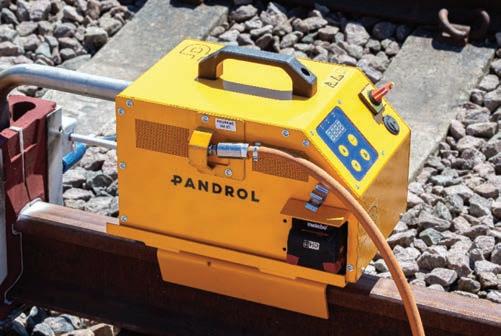
Where technology assists in getting the weld done right. Battery technology at its nest for a safe, simple repeatable quality result every time. e Pandrol High Flow Preheater is a universal preheating system for use when welding on site. It has been designed to replace the need for most existing equipment currently used to raise the temperature of the parent steel before welding. Battery powered and fully automated for easier, more reliable operation: the ignition, timing and stop require no manual interference or ame adjustment. Unlike most existing preheating systems, it uses propane rather than oxygen, reducing costs and making the equipment light and easy to carry around on site.
• No more lighting torches
• is unit only has one propane hose eliminating hoses therefore minimizing slip, trips and falls.
• No more continual adjustment of the torch tip for proper heating of the weld the head is preset therefore getting consistent heating thru out the weld mold.
• Better consistent heating of the weld eliminates failed welds from improper heating.
• All pre-heating is done the same each time with repeatable results every time.
• When you need consistency to your job let Pandrol show you the way.
Pandrol: 25 Interstate Drive Napoleon, Ohio 43545
Tel: +1 419-591-3770 pandrol.com
38 Railway Age // September 2023 railwayage.com 2023 Product & Innovations showcase
PLASSER AMERICAN SURFACING AND TAMPING
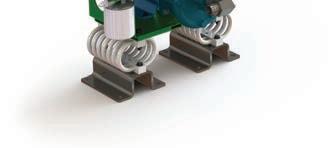
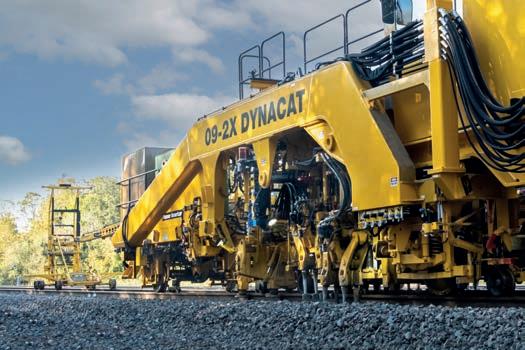
e next phase in surfacing and tamping technology is the automation phase. is phase will meet the industry’s need for higher performance, increased e ciency, and autonomous solutions. Plasser American is currently underway in an ongoing implementation project to help bring more automation to the industry. One such element of this work is the development of a smart tamping machine that would support the tamping operator with managing the operational system of the machine up to a full automation of the whole process. Inclusion of scanners, camera(s), and sensors will drive information to the Convolutional Neural Network (CNN) to train the track maintenance machine to analyze the eld, identifying obstacles, turnout parts, and tamping plans, to calculate suggested actions for the operator, delivered to the operator’s screen. Another move toward the future of automation is Plasser American’s introduction of the Autonomous Remote Stabilizer Upgrade Kit. e Autonomous Stabilizer upgrades the popular Plasser Dynamic Track Stabilizer PTS90C. e upgrade kit consists of two modules; one is installed on the existing stabilizer and the counterpart on an independent lead machine such as a GRM3000T. Once installed, the stabilizer can be fully controlled by the lead machine operator and requires no additional operator. is remote upgrade keeps headcount low and performance high, while radar safety solutions ensure the safe operation on track. Field tests proved the feasibility and safety of the new upgrade kit and delivered the expected results. is new upgrade kit supports the industry’s push toward precision scheduled railroading by improving e ciency, safety, and versatility during surfacing actions. Plasser American is here to provide the technology, tools, and trusted service to accomplish the surfacing and tamping challenges of today.
POWER DRIVES, INC. POWERHOUSE™ HYBRID – IDLE REDUCTION TECHNOLOGY

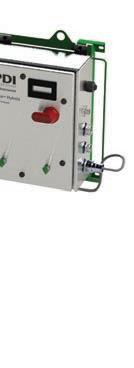
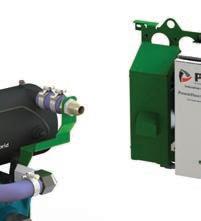
Railroads and rebuilders alike have concerns with fuel usage, emissions, maintenance and noise pollution due to idling in the winter months. Because of this, PDI developed the PowerHouse™ idle reduction system, which allows for locomotive shutdown even in the coldest temperatures. e system heats engine oil and circulates heated coolant through the locomotive engine block and cooling system to maintain uid temperatures above 100°F, via a diesel- red heating unit. Based upon customer input, the company developed the PowerHouse™ Hybrid, which completely eliminates the engine as part of the heating unit and powers itself directly from the locomotive battery bank. “Heat the uids without an additional engine or APU,” was a message PDI heard loud and clear from their customer base. at’s why PDI developed the PowerHouse™ Hybrid. A rail customer installed 50 units in 2022 and recorded fuel savings of more than $1.5 million between October 2022 and April 2023. e Hybrid powers o the locomotive batteries for up to seven days without starting the engine. When plugged into an external 120 VAC power source, the Hybrid heats the uids while charging the locomotive batteries. e PowerHouse does not require access to three phase power. e PowerHouse™ Hybrid requires, on average, less than 5 amps to power a diesel- red burner to keep coolant and oil warm while the locomotive is shut down. It also monitors locomotive coolant system and battery “health,” sending warnings via text messaging to railroad personnel. www.powerdrives.com

September 2023 // Railway Age 39 railwayage.com 2023 Product & innovations showcase
POWER DRIVES, INC. COMPRESSED AIR WATER SEPARATOR
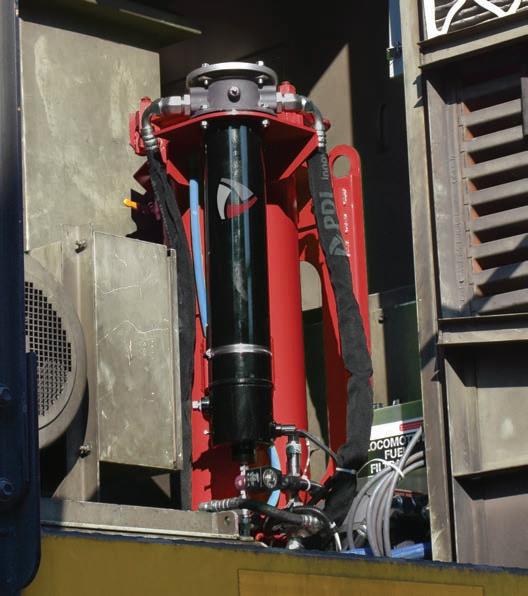

Originally designed for GE locomotives, the Compressed Air water Separator is a drop-in solution that packs a punch by tackling the basics. It separates water from the air so that water does not build up in the air lines, since those air lines feed all the air requirements, speci cally the brake lines. In the winter, that water can freeze and cause the braking system to malfunction. e compressed air Water separator helps operators avoid this dilemma, and is installed a er the air compressor, right o the intercooler. www.powerdrives.com
POWER DRIVES, INC. DIESEL DEHYDRATOR
e Diesel Dehydrator™ from Power Drives, Inc. is a patented engineered system that removes water and lters particulate matter from diesel fuel. Designed to be the main fuel ltration system and tested to lter down to 5 microns, it removes 99.5% of water from the fuel. is, in turn with its extended-life lter, removes particulate matter from fuel and increases fuel injector lifespan and overall performance of the locomotive. PDI’s Diesel dehydrator™ units have been installed on many Class I locomotives and have been sold to rebuilders, who make inclusion of the unit standard in a rebuild, due to the increase in fuel injector longevity. “Our fuel injector lifespan has already increased more than four times thanks to the Diesel Dehydrator,” according to National Railway Equipment Company. “In removing 99.5% of water from the fuel, it has solved one of our biggest headaches and signi cantly decreased the amount of wear and tear that we were experiencing in our locomotives. Not only that, but the overall performance has also increased, all of which has allowed us to retain a client who had otherwise been ready to terminate their lease. e team at Power Drives provided us with a perfect solution to one of our most pressing problems.” www.powerdrives.com
40 Railway Age // September 2023 railwayage.com 2023 Product & Innovations showcase
POWERRAIL KITTING, ASSEMBLY AND PARTS MANUFACTURING SERVICES




























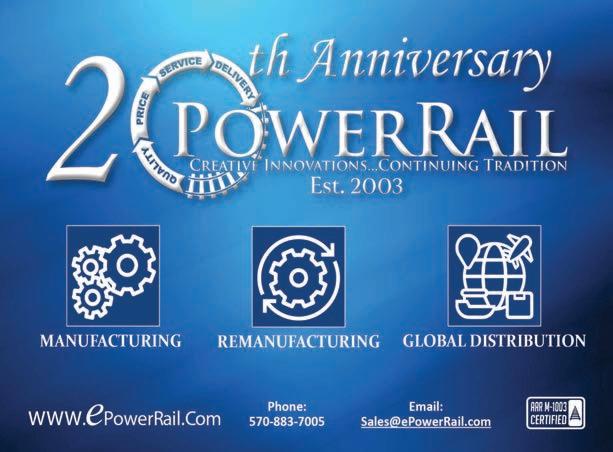
For over 20 years, PowerRail has been providing the rail industry, both domestically and internationally, with parts and components to keep their locomotives running. More recently, PowerRail is adding value by helping customers improve their production e ciency with their major projects such as like-new remanufactured locomotives or more modern environmental repowering projects. PowerRail’s diverse production capabilities and parts o ering provide a wide range of options for customers by assisting them complete their major projects or capital programs on time, and on budget. PowerRail has provided everything from locomotive truck kits to LED lighting, and anything in between, including major components such as traction motors and wheelsets, other electrical rotating parts, and assemblies like fully equipped control stands and high voltage cabinets. At PowerRail, we are here to support your production projects with our in-house kitting and manufacturing and assembling capabilities, providing our customers with a true one-stop-shop experience. To see how PowerRail kitting, assembly or parts manufacturing services can bene t your project, please contact us or visit our website at www.ePowerRail.com
RAIL VISION REVOLUTIONIZING LOCOMOTIVES WITH INTELLIGENCE ON TRACK
Rail Vision: A promise of a safer, more e cient future for rail. Leveraging advanced AI and machine learning technologies, Rail Vision’s two core products, MainLine and ShuntingYard, are designed to detect and classify obstacles on and along the tracks, providing early warnings to train drivers and useful information to operators and operational managers. is technology is for accident prevention; it is about instilling con dence in every move, journey, cargo, and passenger. Rail Vision is a commitment to a safer, smarter future. Where vision meets rail innovation, and technology fuels progress. Rail Vision is the answer to the unique challenges faced by the rail industry. Discover how innovative technology is not just meeting the industry’s needs but exceeding them, setting new standards for railway safety across the globe. Welcome to the next railway revolution in safety, e ciency and reliability. railvision.io
September 2023 // Railway Age 41 railwayage.com 2023 Product &
showcase
innovations
RAILMETRICS








24/7 AI-BASED AUTONOMOUS TRACK INSPECTION DEPLOYED BY CSX





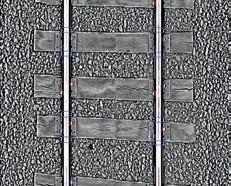



















To supplement its existing inspection program, CSX recently deployed Railmetrics’ (a division of Pavemetrics Systems Inc.) LRAIL autonomous inspection systems on a eet of boxcars. e boxcar platform allows for the inspection systems to be easily mixed into the revenue schedule and to permit key routes to be continuously monitored, 24/7. e LRAIL systems are able to inspect the track continuously, day or night, while traveling at revenue speeds, and capture 2D images, 3D dimensional scans as well as track geometry. Scan data is automatically processed onboard using CSX’s business rules to detect track locations requiring further investigation. Inspection capabilities of the systems include centerline mapping, tie/sleeper inventory and grading, joint bar inventory and bolt counting, elastic fastener inventory and inspection, spiking inventory and inspection, tie plate inventory and inspection, anchor inventory and inspection, ballast cross section and surface fouling detection, and more. Outputs from the system are both linear-referenced and geo-referenced and use open data formats to allow use across the organization including the GIS department, engineering and maintenance.
RAZORSECURE
































DIGITAL MAINTENANCE
SOLUTION FOR RAIL OPERATORS







Traditional methods of railway maintenance can be time-consuming, ine cient, or di cult to coordinate—causing digital onboard rail systems to incur con guration errors or become vulnerable to targeted cyber attacks. e result can be costly unplanned downtime across the eet. To address this concern, railway digital and cybersecurity experts at RazorSecure have developed the Digital Maintenance Gateway (DMG), a cutting edge technology solution designed speci cally for rail, which combines a secure cloud platform with an EN50155 edge device that is integrated on board the train. e user-friendly solution provides a holistic view of current and planned maintenance needs for rail maintenance engineers, enabling secure local or remote maintenance access, with each engineer authenticated by unique multi-factor credentials. is easy access eliminates the need for dedicated service laptops and USB sticks that can become lost, stolen or damaged. DMG isolates service laptops from potentially insecure on-board systems and prevents the addition of unauthorized applications or malware. It also automates management of so ware tools and can distribute rmware and con guration les across the eet instantaneously. DMG provides centralized access to manage and apply updates, enabling maintenance sta to work more e ectively and deploy updates faster. To nd out more, visit www.RazorSecure.com




42 Railway Age // September 2023 railwayage.com 2023 Product & Innovations showcase
RELAM INC. QUALITY MAINTENANCE-OF-WAY EQUIPMENT












Railroad Equipment Leasing and Maintenance (RELAM) Inc. is centrally located with three main facilities serving the U.S. and Canada and o ering quality maintenance-of-way equipment. RELAM provides railway equipment for short- or long-term rent, including rail/ tie replacement and surfacing equipment, vegetation machines, railcar movers, excavators, and more. No o -the-shelf solutions; no standardized approaches. Tell us the equipment you want and let us do the rest. Our professionals will develop customized, knowledgebased solutions to t your current and future needs. Contact quotes@relaminc.com

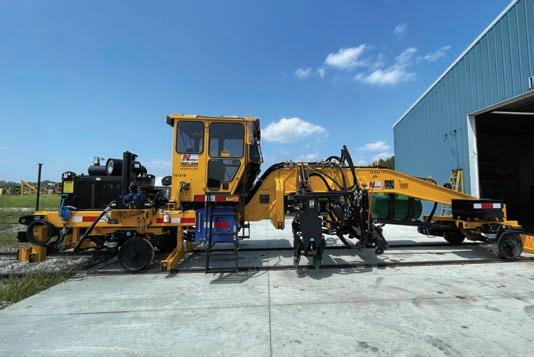
SHIFT5 SEE WITH CLARITY, KNOW WITH CERTAINTY, DECIDE WITH CONFIDENCE












Our national security and economic stability depend on the reliability and readiness of rail assets. ese critical transportation eets generate massive volumes of data that can be used to improve security, availability, safety, resilience, and reliability, but today they cannot be accessed, analyzed, or actioned. Within complex networks of disparate onboard components made by di erent vendors with proprietary architectures and protocols, this valuable but short-lived data remains obscured, making it virtually impossible to gain the observability, context, and insights needed to make the best decisions possible quickly and con dently. Shi 5 is the observability platform for onboard operational technology (OT), enabling smarter, faster decisions through real-time data access, contextual insights, and actionable analytics at the edge. We built a unique model that brings order and clarity to the complexity of onboard data owing from a range of di erent manufacturers from commercial aerospace, rail, and defense eets and weapon systems. Our platform captures and analyzes realtime serial bus data, revealing critical operational and cybersecurity insights that enable organizations to move from data to decisions quickly and con dently. Shi 5 unlocks the complete ecosystem of onboard data for operations, maintenance, and cybersecurity teams for the rst time, enabling real-time decision intelligence through complete onboard data access and observability from the asset level to eet scale. Shi 5 delivers modern OT solutions for the security, availability, safety, resilience, and reliability of today’s eets and tomorrow’s next-gen assets.

September 2023 // Railway Age 43 railwayage.com 2023 Product & innovations showcase
SIEMENS MOBILITY
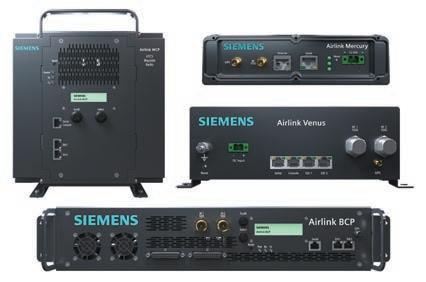
WIRELESS RADIO SYSTEMS TO FUTURE-PROOF YOUR RAILROADS
e needs of railroads are evolving and the digitalization of our rail networks is driving this transformation as we look to build the rail systems of the future. At Siemens Mobility, we combine the real and digital world to create the digital railroad as seen with our Airlink Radio Systems. With advances in private wireless networking and the emergence of new standards, railway operators can build the next-generation of IP-based communication systems for the automated, smart railroad of the future thanks to Siemens Mobility’s wireless communication system of so ware-de ned base station and remote radios. ese radios are based on IEEE 802.16s—the standard for broadband, wireless, xed/mobile access systems—enabling wide-area standard Internet Protocol connectivity. is allows railroads to transition from multiple, single-purpose networks to a common, managed, multipurpose/multi-band network—realizing signi cant reduction of infrastructure and operating costs. Not only keeping your railroads connected, Airlink MC-IoT also complies with IEEE 802.16-2017 to deliver secure, wide area, broadband, end-to-end IP connectivity for mission critical rail operations. IEEE 802.16-2017 is the only standard developed speci cally to serve mission critical industries, instead of the consumer market. With a family of so ware-de ned radios, Airlink MC-IoT enables railroads to realize a substantial reduction in the amount of spectrum required to enable current and future applications. is family includes dual-mode base station and wayside radios that are over-the-air compatible with Siemens Mobility’s legacy ATCS base station (BCP) and wayside (WCP) radios, o ering a cost-e ective migration path to a standard, IP-based communication network. No matter your communication needs, with Siemens Mobility’s system of so ware-de ned base station and remote radios we will help you lay the foundations for a digitalized rail network that will transform the everyday across North America.
STRATO C10P60 KNUCKLE PIN
Strato’s C10P60 knuckle pin has an increased chamfer on the end of the pin for easier installation, especially when replacing a pin in coupled cars. The increased chamfer reduces the effort and force needed to fully install the knuckle pin into the coupler assembly, thus reducing the strain and likelihood of injury. Two cotter pin holes, with a 90-degree offset from each other, provide greater ease of installation for the cotter pin by ensuring there is an accessible cotter pin hole with little to no rotation. This eliminates the need to awkwardly pry or force rotation of the knuckle pin, creating an easier and safer working environment. https://www.stratoinc.com/content/c10p60
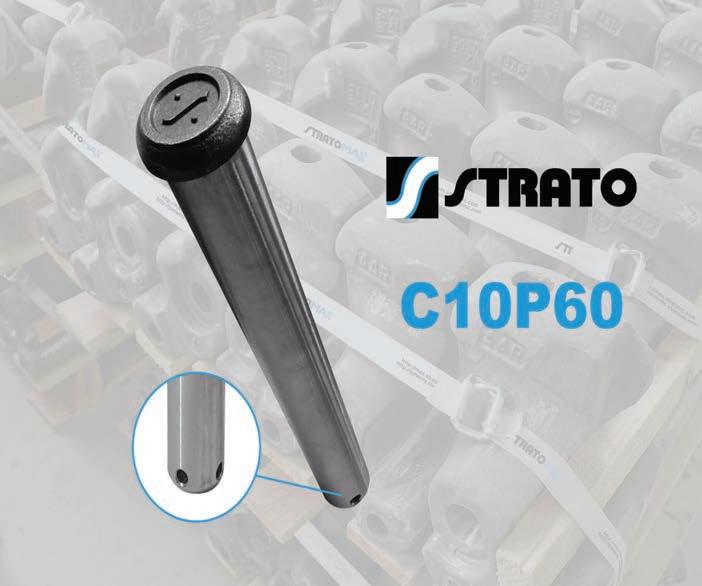
44 Railway Age // September 2023 railwayage.com 2023 Product & Innovations showcase
STANLEY INDUSTRIAL RD60 BATTERY RAIL DRILL
e all-new STANLEY RD60 Battery Rail Drill is a powerful and innovative cordless rail drill designed for exceptional performance and costsaving bene ts in railroad maintenance. e RD60 is a cordless design rail drill that eliminates the need of hydraulic hoses, making railroad operations safer and more straightforward. Powered by the DEWALT FLEXVOLT® 60V Battery System that drives over 250-plus DEWALT power tools, the RD60 delivers unparalleled power and eciency. Its ergonomic handle design makes it very easy to transport thanks to the 20% weight reduction. Coupled with a brushless heavy-duty motor, it ensures increased productivity without compromising precision and accuracy. e RD60 features a patented auto-feed drill cycle providing consistent drill bit speed, and with a quick-adjust rail clamp, the RD60 can provide quick and consistent drilling. e RD60 is an all-season weather rail drill and o ers a toolless bit exchange feature. In addition, the biodegradable cutting uid used in the RD60 makes it an eco-friendly solution for rail drilling. Want to see the RD60 battery rail drill in action? We’ll be conducting live demos of our RD60 battery rail drill at the STANLEY booth 4665 during the Railway Interchange trade show in Indianapolis. Our industry experts will be present at the booth to answer any questions you may have about our rail tools. Plus, you can be the rst to get a sneak peek of STANLEY’s newest innovative battery-operated railway maintenance products that are set to launch this year. We look forward to seeing you there! Click on the link below for more information about the STANLEY RD60: https://www.stanleyindustrial.com/stanley-industrial/stanleyinfrastructure-rd60-battery-rail-drill/1/p/1

TEK TRACKING GRADE CROSSING OPERATION REPORTING SYSTEM (GCORS)
TekTracking’s Grade Crossing Operation Reporting System (GCORS) detects and noti es the railroad, via the Emergency Notication System (ENS), of four critical failure modes undetected by crossing event recorders. GCORS contains multiple sensors positioned to capture, analyze, and report speci c grade crossing failure modes observed by motorists, including trapped vehicle detection. GCORS measures the time from the moment the crossing is activated until the train reaches the grade crossing location, ensuring the active grade crossing system provides at least 20 seconds of warning time to approaching motorists. If a time of less than 20 seconds of warning is detected, alerts are immediately sent to the railroad safety o ce. GCORS also detects the angular position of the gate, ensuring it is fully deployed when activated. It utilizes a machine learning algorithm to count and time the ash rate of the crossing warning lights. If there is a light not ashing properly an immediate alert is communicated to the railroad safety o ce. e system can determine when a crossing is falsely activated by detecting all crossing activations and timing the crossing events. If no train or other track-bound vehicle appears at the crossing during the activation period, a failure is declared and immediately communicated to the railroads ENS. Finally, if a vehicle becomes disabled on the crossing, GCORS edge image processor determines when the vehicle is in imminent danger of being struck by the train, and a warning alert is immediately communicated to the railroad ENS.
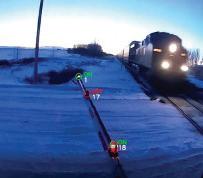
September 2023 // Railway Age 45 railwayage.com 2023 Product & innovations showcase
TRAINYARD TECH, LLC


FLEXIBLE SWITCH CONTROL PANEL FOR PROCESSING PLANTS AND NX SYSTEMS
Trainyard Tech, LLC introduces a new switch control panel that controls any switch and interfaces seamlessly with any track circuit on the market or in the railyard today. is highly exible approach o ers many advantages to small and large processing plants, atyard systems and NX systems using Trainyard Tech’s ROUTEMASTER™ Process Control System. Utilizing the existing switch machines and track circuits already in the yard results in signi cant savings on new purchases and parts and in a much quicker installation. Customer support is improved, with the experienced engineers at Trainyard Tech providing one point of contact for not just the hump side of the facility but for the receiving yard and forwarding yard as well. is Flexible Switch Control Panel is versatile enough to be inserted into either our sturdy, weatherproof box or modi ed to t in existing Switch Control Boxes for ease of installation. e newest method of installation is to consolidate many panels into one High Double case that o ers the ability to run ber if available. Coupled with the use of our ROUTEMASTER™ Process Control System, the innovative Flexible Switch Control Panel o ers increased dimensions in noti cations, reporting and customizable controls. Customers will experience increased e ciency and throughput in the railyard, be it hump or at yards, large or small. Please visit us at www.trainyardtech. com for more information.
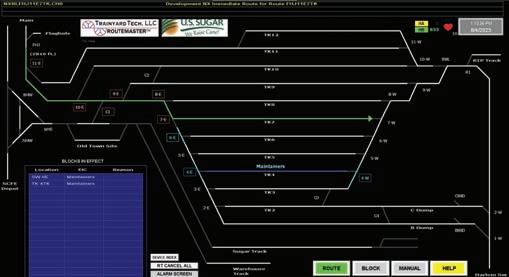
46 Railway Age // September 2023 railwayage.com 2023 Product & Innovations showcase
2023 Product & innovations showcase
TRINITYRAIL® TRINSIGHT®, POWERED BY TRINITYRAIL®
Trinsight is an end-to-end supply chain platform that combines real-time tracking with powerful data and analytics to optimize supply chain performance. With cloud-enabled data, insights, and analytics, you can make informed decisions to improve operations and reduce costs making your supply chain more uid, reliable, and e cient. Trinsight creates a digital twin of your supply chain using timely, accurate, and con gurable data. It captures all aspects of your supply chain, from origin to destination, including shipment status and cost. e data can simulate your network enabling you to change supply chain parameters and model opportunities for network optimization. e Shipment Management application allows real-time tracking of railcars letting users know location and status. With numerous sensor options, unique con gurations, and built with our unique rail industry expertise, Trinsight delivers actionable insights through tailored reports and real-time critical alerts. e customer pro le application captures yard, eet, geofence, commodity, cost, and status information. is data helps build detailed pro les unique to a customer’s operation using internal eet designations and unique (customer de ned) commodity types. e Yard Management application monitors railcars from the time they enter the yard until the time they leave. Data monitored for each car can include Arrived, Inspected, Cleaned, Repaired, Loaded, Billed and Departed status changes. e data is then used to analyze operational e ciency, yard cycle times and bottlenecks, and can be used to review/audit demurrage calculations and other fees (switching, cleaning, etc.). With additional applications, and more coming, Trinsight is the future of supply chain management. For more information, please go to www.trinityrail.com
CLASSMASTER™
The Hump Yard ProcessControl System in 22 classification yards across the US and Canada featuring:

• AutomaticCalibration
• Graphic Playback
• Realtime Hump List Display
• Pinpuller Scoreboard Display
• Automatic Report Generation
• Loggers –Daily, Event and I/O
• Electronic Track Blocking
• AEI Integration and List Verification
• Remote Diagnostics
•
ROUTEMASTER™
The NX Control System in 12 locationsproviding Entrance–Exit andTrain Control Operation for Receiving,Pullback and Departure Yards featuring:
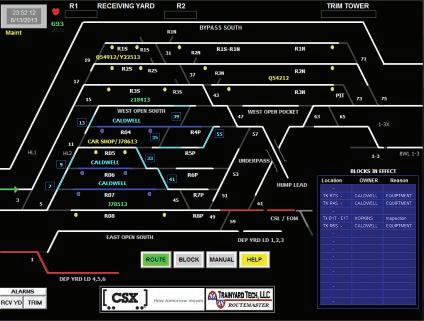

• NX Route Control – Receiving and Pullout Yards
• 4G Wireless Control
• Track Circuit-Less Shove Operation
• Realtime status of all yard devices
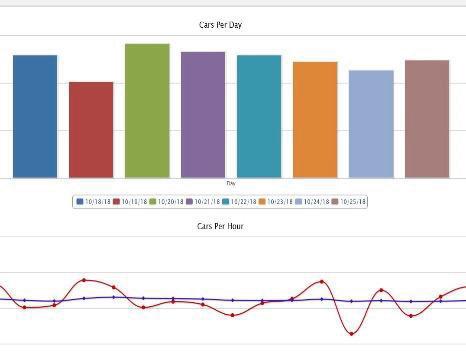
• Logger –Daily,Event and I/O
• Individual Switch Control
• State-of-the-art Lightning Protection
• Graphic Playback
INNOVATIONS
, switch and track occupancy detection using wheel detectors. Provides data essential for maintaining a High Performance yard.
sophisticated reporting tool to simplify troubleshooting, analyze yard. Reviewing Up-to -the-minute historical performance.
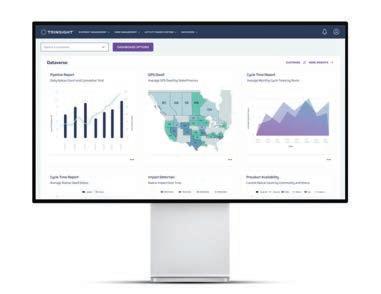
September 2023 // Railway Age 47 railwayage.com
Product & Innovations showcase
TRILOGICAL TECHNOLOGIES RAILBLAZER BY TRILOGICAL: REVOLUTIONIZING

RAIL FREIGHT OPERATIONS WITH IOT EXCELLENCE

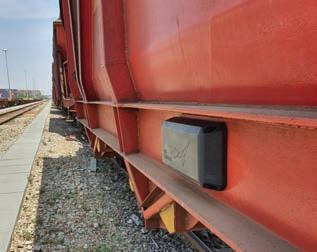
In response to the burgeoning demand for rail freight transport, Trilogical Technologies presents RailBlazer, an IoT solution revolutionizing rail freight operations. RailBlazer converts each railcar into a smart digital asset. It equips eet owners, railroad companies, and shippers with instant insights into railcar location, condition, and health. RailBlazer’s unique hybrid communication system allows precise tracking, including railcar positioning in the trainset and shunting yard. It enables scheduled maintenance based on smart sensor analysis, reducing disruptions and increasing service intervals. Real-time alerts on railcar health abnormalities and End-Of-Train (EOT) event prioritizes safety, safeguarding personnel and cargo. is enhanced e ciency reduces maintenance costs by 25%-30% and increases eet availability by 12%-20%. Integrated with Trilogical’s cloud-based platform, RailBlazer o ers features such as order management, railcar allocation, history, and mileage-based service alerts, boosting operational and maintenance e ciency. Its data analysis o ers transparency in the supply chain, providing live loading status and ETA updates, facilitating shipper satisfaction, and generating additional business. As an easily mountable and maintenance-free solution with a battery life of more than six years, RailBlazer ushers in a new era in railcar telematics, ensuring unmatched maintenance and operational excellence. Visit Trilogical’s website for more information: https://www.trilogical.com/railblazer/
If you are attending the upcoming Railway Interchange 2023 event, we invite you to attend our showcase at the Innovation eatre within the RSSI Exhibit Hall D on Monday, October 2, at 3:30 pm. Visit our booth - RSSI Hall E, Booth 1308.
Partnering for success
Hatch is proud to support the transit industry. Together we can solve your toughest challenges with expanded and innovative services.
Learn more at hatch.com



48 Railway Age // September 2023 railwayage.com 2023
STAY IN GEAR WITH RAIL GROUP NEWS ROUND-UP of NEWS RAILWAYA RAIL GROUP NEWS From Railway Age, RT&S and IRJ https://railwayage.com/newsletters RA_RailGroupNews_1-6Vertical_InGear_2022.indd 1 1/10/22 12:55 PM
Product & innovations showcase
WABTEC FLXDRIVE BATTERY LOCOMOTIVE





























e rail industry’s focus is on a variety of solutions to accelerate decarbonization initiatives. Advances in battery capacity, reduced costs and improved computing capabilities make it the right time to apply battery power to rail. is technology enables railroads to reduce operating costs on fuel and emissions. Wabtec launched the FLXdrive in 2021, making it the world’s rst 100% battery-powered, heavy-haul locomotive.
e company has developed a wide portfolio of FLXdrive products to serve the operational and sustainability requirements of global customers. e FLXdrive can deliver battery capacities to meet various rail application needs. With haulage capabilities comparable to its diesel equivalent, the FLXdrive locomotive can replace a diesel locomotive within a consist, unlocking new levels of operational exibility. e heart of the FLXdrive system is the liquid-cooled battery technology and proprietary thermal management system developed to optimize energy output and battery life. Wabtec’s rail-speci c battery architecture also maximizes safety, reliability and performance. In addition to the in-mission regenerative brake charging, FLXdrive locomotives feature a DC fast charging option utilizing a stationary pantograph or plug-in. Future options will include moving-charge capabilities for increased range and uninterrupted operations. e FLXdrive’s modular and scalable battery architecture integrates across multiple rail vehicles and environments. Customers from North America, South America and Australia already have ordered the FLXdrive. Wabtec is building the rst commercial locomotives with deliveries in 2024. To learn more about the FLXdrive, visit Wabtec’s website at www.wabteccorp.com.
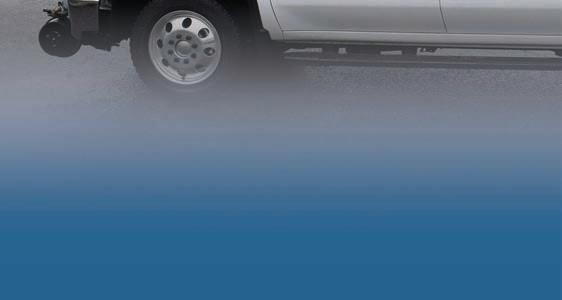















HI-RAIL UTILITY TRUCK





September 2023 // Railway Age 49 railwayage.com
2023
D ANELL A.CO M/RE NTALS R ENTAL SYSTEMS, INC. VISIT OUR TEAM AT RAILWAY INTERCHANGE BOOTH 1829
THE QUALITY TRUCKS AND EQUIPMENT YOU NEED.
WAGO SELF-SACRIFICING SURGE PROTECTORS




















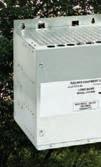

















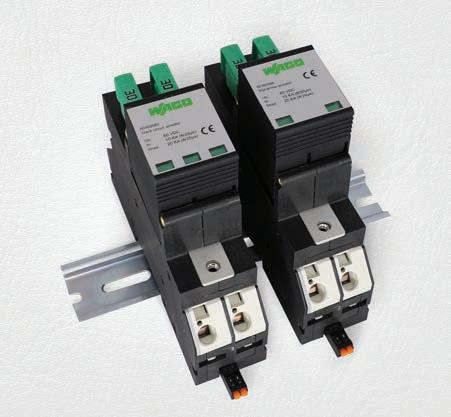
e geographic location of railroads plays a big role in what type of protection each needs to run their applications reliably and at peak performance. Railroad tracks are lightning rods, and with new train control systems and monitoring applications directly connected to railroad tracks, surge protection is critical to minimize failures, mitigate equipment damage and keep trains running. WAGO has been providing the railway industry high-quality surge protection for wayside signal and communication equipment with overvoltage protection from events such as lightning strikes and transients. Our track circuit arrestor (TCA) and signal line arrestor (SLA) are self-sacri cing modules that provide consistent and repeatable protection. ey can be replaced in the eld without interrupting the circuit and no tools needed to replace the module. WAGO’s CAGE CLAMP® connections are AREMA approved and give railroads the ability to terminate cable/wires up to and including 6 AWG wire without using AAR terminals while meeting the harsh demands of the railroad industry. ese devices have recently been installed at three di erent locations in Southeast Florida to protect primarily against the more-than 225 (average lightning) strikes per year. Since their placement in the bungalows and junction boxes, these locations have reported no lightning damage or loose wires. In other words … ZERO FAILURES! More information at https://bit.ly/3QNMtto

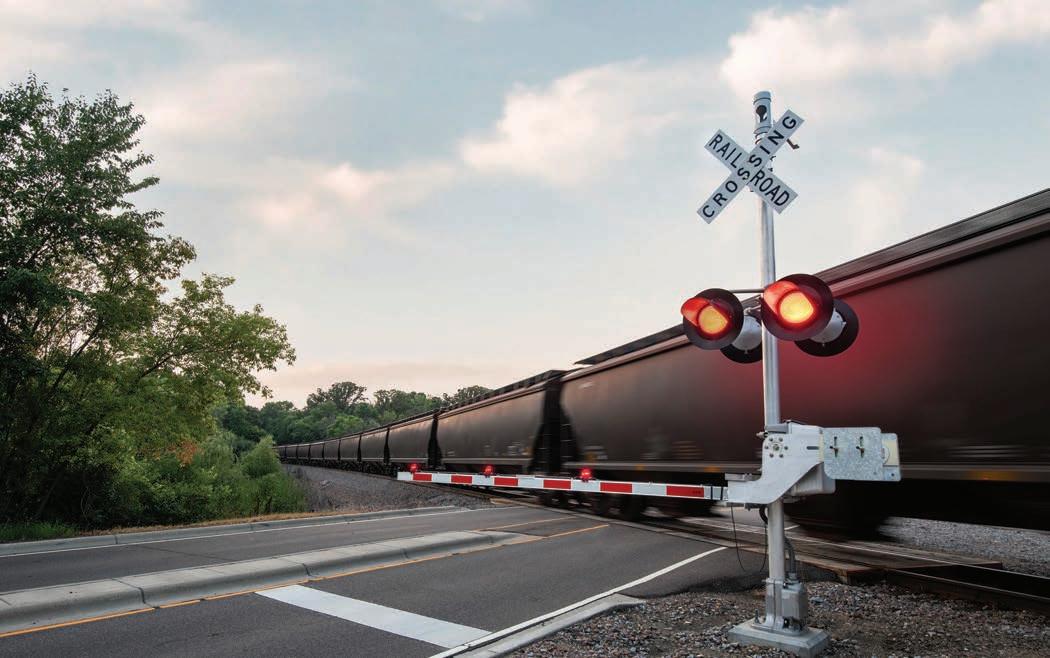
50 Railway Age // September 2023 railwayage.com 2023 Product
Innovations
&
showcase
VISIT RWY.COM/BATTERYTEST TODAY! 525 9th Street S, Delano, MN 55328 | 763.972.2200 | sales@rwy.com Products • SMC • Cell Monitor • Load Bank • Current Coil AUTOMATED BATTERY TESTING WITH AC POWER CONNECTED RECO’s Automated 30 Day Battery Testing System provides the ability to test your batteries without disconnecting AC power. The system is equipped with 2 dry relay contacts for voltage, temperature or current alarm, independent of the battery charger system and user programmable. • Retrofit into other battery charger systems with the use of the Event Recorder display unit. AUTOMATED BATTERY TESTING SYSTEM Data Collected • Current • Voltage • % of Battery Charge • Time to Empty • Alerted of a Bad Battery Cell SEE YOU ATBOOTH 1741
WI-TRONIX LEADING THE CHARGE: ASSISTING RAILROADS WITH EMISSIONS REPORTING
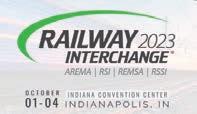








Discover a new era of emissions reporting with Wi-Tronix’s groundbreaking solutions. Streamline your compliance e orts with the connected solution company’s “one-click” emissions and EPA idle exceptions reporting capability, which is setting new standards for e ciency and accuracy. Wi-Tronix’s platform seamlessly collects locomotive operational data, tracking second-by-second locomotive details and positioning. With extreme precision, Wi-Tronix is able to identify the location where locomotives operate, creating a clear emissions footprint. Access daily historical data, including fuel consumption and emissions, summarized by region, locomotive, and/or eet. e Wi-Tronix user-friendly portal provides an insightful overview that empowers real-time decision making. is information enables users to generate compliance reports e ortlessly. With just a click of a button, a PDF compliance report is ready for submission, saving customers time and streamlining the reporting process. Wi-Tronix works with railroads to monitor and report on various alternative energy sources, including hydrogen, LNG, electric, and bio-fuels. eir expertise spans diverse energy solutions for an eco-friendly railway operation. Wi-Tronix’s cloud-based so ware and onboard hardware rede ne how railways gather, access, and act on train information. With emission and environmental regulations a ecting the rail industry like never before, Wi-Tronix is a trusted partner, providing customers with over a decade of experience in emissions monitoring and reporting.


September 2023 // Railway Age 51 railwayage.com 2023
Product & innovations showcase
When you purchase a PowerRail Governor... • quality standards and requirements are factory-audited, ensuring strict compliance. • only genuine Woodward parts and certified, calibrated tools and test stands are used. • a complete disassembly, bench inspection, comprehensive cleaning, reassembly and testing occurs to ensure all requirements are met. www. PowerRail.Com Available New, Unit Exchange, and Repair/Return Rebuilt by Certified Woodward Governor Specialists Large Inventory of UX Governors On-Hand, Ready to Ship Rebuilt, Tested and Calibrated to OEM Specifications ☑ ☑ ☑ ☑ When you need a RELIABLE Governor, PowerRail has you covered! Sales@ePowerRail.com Come see us at Railway Interchange 2023 in Indianapolis! Booth #3019
Product & Innovations showcase
ZTR KICKSTART STARTING ASSIST
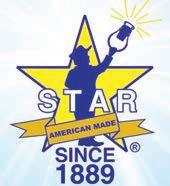


ZTR’s Kickstart Starting Assist is a locomotive supercapacitor starting solution that provides high-power output during locomotive engine cranking as a supplement to locomotive starting batteries. e burst of power ensures the locomotive’s batteries do not drop below the minimum voltage required to keep the onboard electrics functioning, avoiding a possible brown-out. Brownouts are one of the leading causes of dead-won’t-start (DWS) events and can lead to thousands of dollars in penalties, especially if the DWS event occurs on a main line. KickStart Starting Assist o oads the locomotive batteries during engine cranking, enhancing gains of existing onboard automatic engine stop/ start (AESS) systems by reducing the time a locomotive is idling, speci cally idling caused by weakened batteries. Reducing charge time allows the onboard AESS systems to shut down sooner and for extended periods, leading to lower fuel consumption and emissions. In many cases, a battery alone may not start an engine due to degradation, temperature and other factors and may be replaced prematurely. With supercapacitor systems such as KickStart Starting Assist, the engine starts successfully and the battery that would normally have been replaced continues on for years. is increased lifespan can lead to further cost savings by reducing the number of times locomotive batteries need to be replaced. KickStart Starting Assist is a light and compact supercapacitor system that is easy to install and requires zero maintenance. Integrated monitoring is available with KickStart, which, when coupled with fault noti cations and diagnostics, eliminates the need to install proprietary so ware for setup and operations.
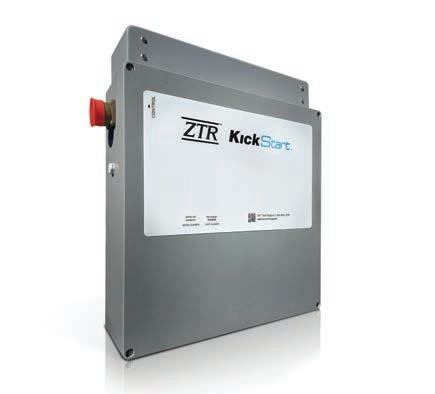
2021-LED Trainmen Lantern utilizes newer, brighter LED’s, and operates on “c” cell batteries. Updated brighter center spot LED, while still keeping same battery performance


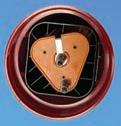

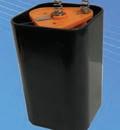
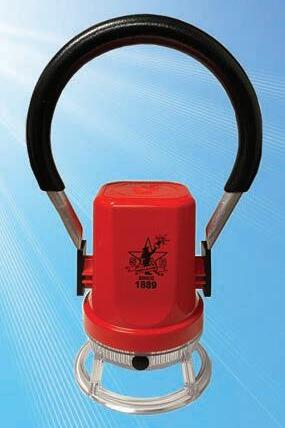

(batteries not included)









52 Railway Age // September 2023 railwayage.com
2023
Star Safety Technologies 455 Rochester St. Avon, NY 14414 (585) 226-9500 Fax: (888) 478-2797 www.starsafetytechnologies.com Proudly Made In USA
2021-LED Proudly Designed, Manufactured, and Assembled in the USA!
CB-101
(lantern comes with CB-101 “c”-cell battery holder)
ZTR PIVOT: ADVANCED RAILCAR REMOTE MONITORING SOLUTION
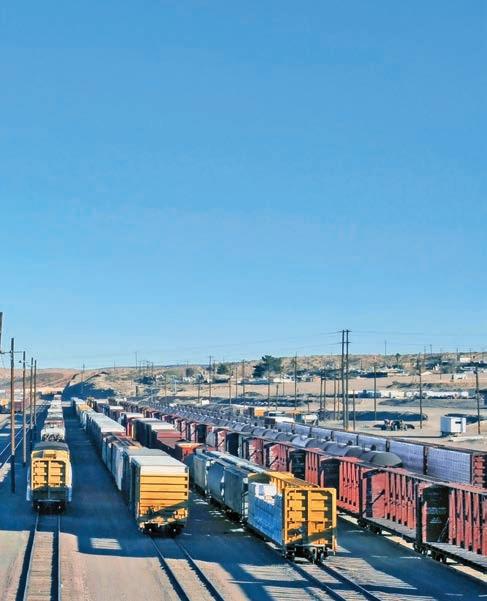
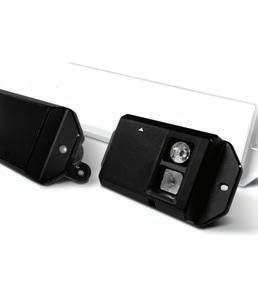
ZTR’s PIVOT is an advanced railcar remote monitoring solution that seamlessly integrates with customers’ existing business systems to improve railcar availability and reliability by providing them with real-time location, mileage, and critical operational information including load status. PIVOT enables customers to improve their operational e ciency and asset utilization through:
• Timely alerts and insights to help avoid downtime.
• Optimizing dwell times, reducing waiting periods and minimizing overall transit times.
• Data-driven decisions to allocate resources e ciently, avoiding overuse or underuse of railcars.
PIVOT consists of ZTR Gateway and ZTR Sensors that leverage BlackBerry Radar technology and satisfy the intrinsically safe requirements along with all relevant certi cations. Our ZTR Gateway is C1D1 certi ed, the best in the industry. e hardware is complemented by our intuitive and user-friendly web platform. e platform allows you to seamlessly track and manage your railcars’ location, status and vital data in realtime. It proactively provides alerts and noti cations about railcar events, such as impacts, doors opening, or handbrake status changes, ensuring quick response and risk mitigation. Additionally, PIVOT uses end-to-end secure data transfer, provides over-the-air updates, and is ready for system integration (API). PIVOT is designed to be installed and run in under 10 minutes and does not require any specialized mounting. It is built tough enough to endure extreme rail environments. It’s a maintenance free, and energy-independent system that requires no ongoing maintenance and no dependence on external sources for power. With over 35 years of railway and IoT experience, and industry leading 24x7 customer support, ZTR provides a railcar remote monitoring solution you can trust.
Selective Cushioning Draft System
•In stock and ready to ship within 24 hours of order receipt
•Direct t into AAR EOC-7, EOC-8, EOC-9, & EOC-10 pockets*

•Easily adaptable for E-Type & F-Type systems
•AAR Conditionally Approved

September 2023 // Railway Age 53 railwayage.com 2023 Product
& innovations showcase
Unmatched performance for your railcar in a lower life cycle cost, non-hydraulic cushion unit design *For other AAR pockets, please contact Strato at 1-800-792-0500 for best retro t option and part numbers
Having supply issues getting hydraulic cushion units in a timely manner? Yard plugged up with cars waiting on long lead delivery of hydraulic cushion units?
has the solution...
Strato
CLEAN TRACK AHEAD

 BY BOB CANTWELL, CONTRIBUTING EDITOR
BY BOB CANTWELL, CONTRIBUTING EDITOR
The California Air Resources Board (CARB) red a shot across the freight rail industry’s bow to accelerate the drive to lower locomotive emissions to zero by 2035. In response, the Association of American Railroads (AAR) has led suit against CARB. Regardless of the outcome, there is now heightened awareness of locomotive emissions. e issue isn’t going away. Instead, the economic impact to implement tighter emission regulations will be in the billions for as far as the eye can see.
Don Graab, of Triangle Brothers Associates and previously Vice President Mechanical of Norfolk Southern, recently authored an excellent article sharing an unfortunate gloomy outlook, “New Locomotive Demand Non-Existent for Now.” Within the article, he highlights the two main drivers of locomotive demand: eet replacement and tra c growth.
ere will be a third driver for new locomotive demand: emissions.
On April 27, 2023, CARB issued an “In-Use” Locomotive Regulation laying out a roadmap toward zero emission locomotives in California by 2035. Highlights of the regulation:
• Establishment of a “spending account” that collects fees (taxes) commencing in 2024 on locomotives that operate in California. is will be calculated as a function of their operating use and emission levels. e funds will eventually be used to purchase new low/zero emission locomotives.
• Limit idle time to 30 minutes.

• Prohibit the use of locomotives over the age of 23 years by 2030. is is a very critical feature of the CARB regulation with far reaching impact.
• Mandating Zero Emission (ZE) locomotives to operate exclusively by 2035.
Rail Industry reactions to the CARB regulation have been resoundingly negative: ASLRRA (Class II and III) hates it, while the AAR has gone so far as to sue
CARB. Matt Elkott of TD Cowen has speculated on the potential demand spike for new locomotives should this regulation gain traction (pun intended).
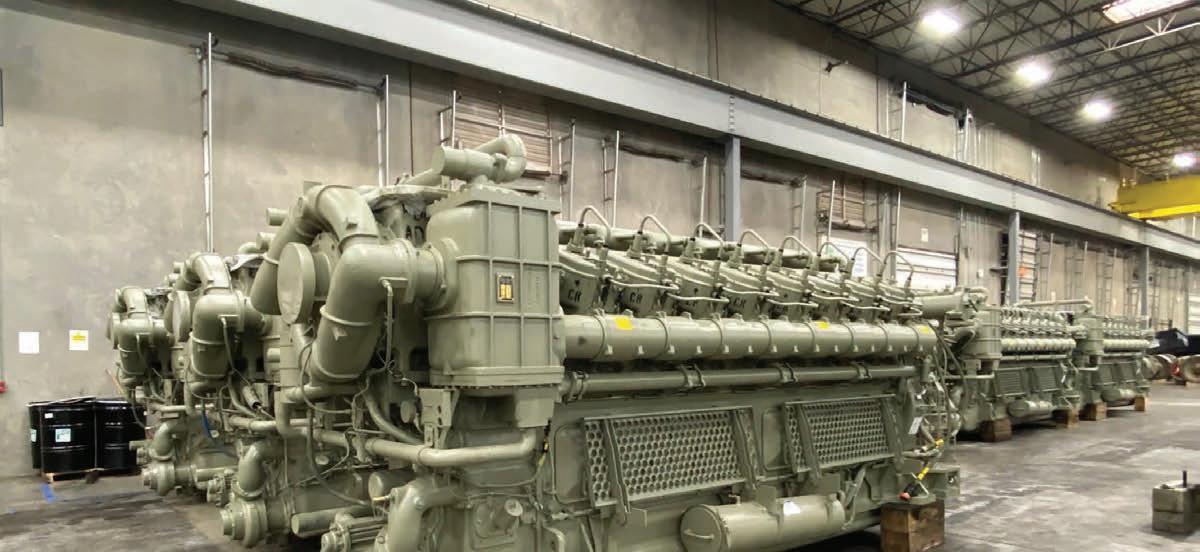
e potential impact of this regulation is likely to be very costly to the freight rail industry and may impede its ability to move freight in certain areas. Arguing that ZE locomotive technology is very much in its infancy, combined with the lack of infrastructure needed to support ZE locomotives, the industry is unlikely to meet this stringent regulation by 2035.
CARB gets its authority to regulate locomotive emissions from a unique Memorandum of Understanding (MOU) it signed many years ago with the Southern Paci c (now Union Paci c), then headquartered in San Francisco. For now, CARB is acting alone in its drive to impose stricter locomotive emission standards, but should it capture the support of EPA or other states, watch out. e EPA and CARB have ganged
54 Railway Age // September 2023 railwayage.com
Carolina Worrell
Diesel locomotives will be around for a long time. They rapidly need to get cleaner.
up on the trucking industry for years.
DIESEL EMISSIONS
Diesel engines ght a dual mandate: reducing carbon emissions in the struggle to reduce greenhouse gases, and reducing localized pollution (smoke and smog) through the reduction of NOx and PM (Particulate Matter). NOx and PM have been the focus of diesel emission development for the past 50 years, resulting in the development of a tiered approach to reduction. Since 1973, locomotive NOx limits have declined from 9.9 g/bhp-hour (Tier 0) in 1973 to 5.5 g/bhp-hour (Tier 3) in 2012. Tier 4 imposed a very stringent 1.3 limit. To hit this tremendous reduction requires extensive engine modi cation, particularly to the air intake, exhaust, cooling, and fuel delivery systems. Achieving these levels is expensive in terms of both capex and operating expense, which is one of the main reasons for the slow adoption of Tier 4 locomotives since 2015. NOx and PM dropped by almost 50% between Tiers 0 and Tier 2. Between Tier 0 and Tier 4, NOx and PM have been reduced ninefold! Tier 0 and Tier 1 locomotives, which were produced until 2004, are indeed much dirtier than newer units.
CLASS 8 TRUCK EMISSIONS
Locomotive engines are not alone in the drive to reduce NOx and PM. e Class 8 trucking industry has been subjected to similar, in fact more stringent, emission limits. e EPA on Dec. 20, 2022 nalized what it called “the strongest-ever national clean air standards to cut smog- and soot-forming emissions from heavy-duty trucks beginning with model year 2027.” EPA projects that by 2045, this nal rule will reduce NOx emissions from the in-use eet of heavy-duty trucks by almost 50%. As a result of this new regulation, there is a mad dash to purchase trucks under existing regulations–despite slowing freight demand. is is what happens when the EPA gets involved and should serve as a warning to the rail industry.
NEW LOCOMOTIVE DEMAND
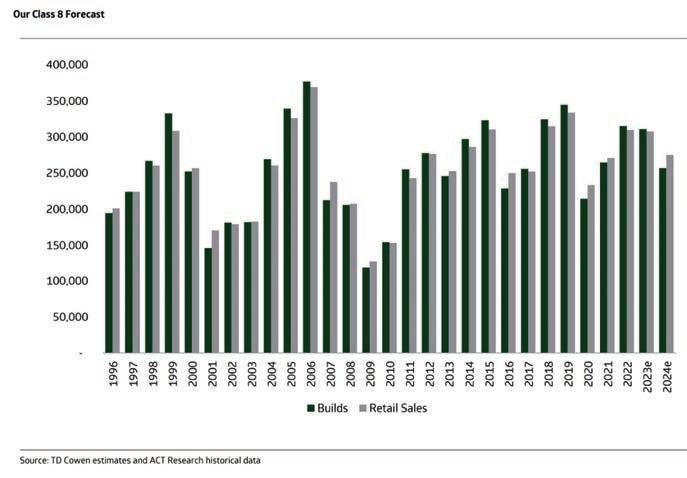
Since the enactment of Tier 4 in 2015, only about 1,200 units have been built, with more than 1,000 of these Wabtec units. Developing Tier 4 locomotives has been a long, expensive journey with little payback to date. In fact, Caterpillar, parent company of Progress Rail/ EMD, took a $935 million write-down at the end of scal year 2022 on its rail business in
large part due to the slow adoption of Tier 4 locomotives. With CARB regulations, or a derivative thereof, this may change quickly.
23-YEAR-OLD LOCOMOTIVES
e 23-year-old mandate by 2030 as outlined by CARB coincides with the imposition of Tier 2 requirements in 2005. In other words, no locomotive will be able to operate in California without complying with Tier 2 beyond 2030, but ultimately banned by 2035 if the regulation holds. Since 2005, there have been more than 15,000 locomotives delivered meeting Tier 2, the majority GE/Wabtec.
TIER 1 MODIFIED UNITS
Modifying older Tier 1 locomotives has proven to be good business, particularly for Wabtec. ese upgrades o er the following advantages:
• Up to 25% better fuel consumption, resulting in lower overall emissions, through better fuel systems and microprocessor train control.
• Conversion from DC to AC power, resulting in up to 50% greater tractive e ort at slow speeds.
• Anticipated reliability improvements of up to 40%.
While such upgrades don’t o er the same NOx and PM reduction as Tier 2+, they are an improvement over prevailing Tier 1 standards. Furthermore, they extend the useful life of a locomotive an additional 10-15 years at signicantly lower upfront cost.
TIER 2, 3, 4 RETROFIT UNITS
Since 2000, there have been several e orts to retro t older Tier 0 and 1 locomotives with modern T2, 3 and 4 engines. Engines from Cummins, MTU, Deutz and Caterpillar, all certi ed to higher emission regulations, have been installed in limited quantities, primarily in lower horsepower applications. is may prove to be a good alternative for switching and short line applications, especially when needing to shut down engines frequently. is also serves as a bridge between existing T 0-1 units to battery-electric units, particularly in urban areas.
MARCH TOWARD ZE
Despite the slow adoption of Tier 4, leading to anemic deliveries and subpar returns for builders, they have plowed ahead in their development of ZE locomotives. Both Wabtec and Progress Rail/EMD are developing a portfolio of battery powered units, covering switcher, commuter and line haul heavy freight. Wabtec is advancing development of hydrogen powered locomotives, as is CPKC and developmental partner CSX. All of this comes with a very high price tag and long lead times.
Further exasperating adoption of ZE battery locomotives is the infrastructure necessary to support them. A nationwide charging network is needed. Charging one locomotive is equivalent to charging 81 Tesla automobiles.
Hydrogen powered locomotives, the
September 2023 // Railway Age 55 railwayage.com
FOCUS – LOCOMOTIVES
TECH
EPA Class 8 truck emissions regulations have accelerated demand for new vehicles.
“other ZE alternative,” is challenged as well. Mike Iden of Tier 5 Locomotive LLC, and Contributing Editor for Railway Age, recently authored an article on the overall e ciency of hydrogen and the associated cost of production and transmission, which is well worth the read. Don Graab also weighed in on the hurdles for hydrogen powered locomotives. Like battery locomotives, facilities for hydrogen production and transmission and fueling stations are necessary. In the case of green hydrogen (hydrogen produced from all renewable energy), neither the cost nor capacity are in place to make an impact on rail emissions. While there are several hydrogen
fuel cell suppliers, all are in the early stages of production. And few if any are pro table at this point. Massive amounts of capital will be required for these companies to scale up production to make a dent with hydrogen powered locomotives.
Perhaps the biggest hurdle toward adopting ZE locomotives is the integration of entirely new technologies. Typically, new technologies undergo Reliability Growth Testing before widespread adoption can occur. RGT requires years of testing, product re nement, infrastructure buildout, and training. Simply delivering a eet of battery or hydrogen powered locomotives does not

ensure success and immediate adoption.
POTENTIAL ECONOMIC IMPACT
Should the entire industry be mandated to operate only Tier 2+ locomotives by 2030, it is anticipated that more than 1,000 new Tier 4 and modernized Tier 2+ locomotives will be needed annually. is translates into a price tag of $3-$4 billion per year inde nitely, or almost 30% of annual railroad capital expenditures. Adding the cost of battery and hydrogen locomotives, along with their associated support infrastructure, could double this number, approaching 60-70% of current railroad capex
SUMMARY
Like all negotiations, each party starts with demands and expectations on the extremes, and ultimately end up somewhere near the middle. If the AAR ghts back too hard, it may be perceived as anti-clean air. In the case of CARB vs. the AAR, expect certain elements to prevail, like faster adoption of Tier 4 locomotives and accelerated obsolescence of Tier 0 and non-modi ed Tier 1 units. I expect diesel locomotives will be around a lot longer than CARB envisions, otherwise the U.S. economy could be signi cantly impacted. is is evidenced by the slower-than-expected adoption of electric vehicles. Despite enormous investment during the past 12 years, EVs represent only 7% of current auto sales in the U.S., most of that coming from Tesla. Frustratingly, EV penetration has only been realized through massive government subsidies. Will those same stimuli be available for ZE locomotives?
From the AAR fact sheet: “U.S. freight railroads, on average, move one ton of freight nearly 500 miles per gallon of fuel. On average, railroads are three to four times more fuel e cient than trucks.” Yet we continue to lose market share. e fuel e ciency argument doesn’t pack the same punch it once did. Modern trucks are gaining steadily. We now need to focus on the overall value proposition—fuel e ciency, service, timeliness, cost—and drive down the rail industry’s impact on GHG emissions along with localized NOx and PM. at means utilizing far more clean/cleaner diesel locomotives longer. Delaying the implementation of Tier 4 locomotives signals that U.S. railroads have not prioritized emissions, and potentially invites further backlash from CARB and the EPA, something we don’t wish for.
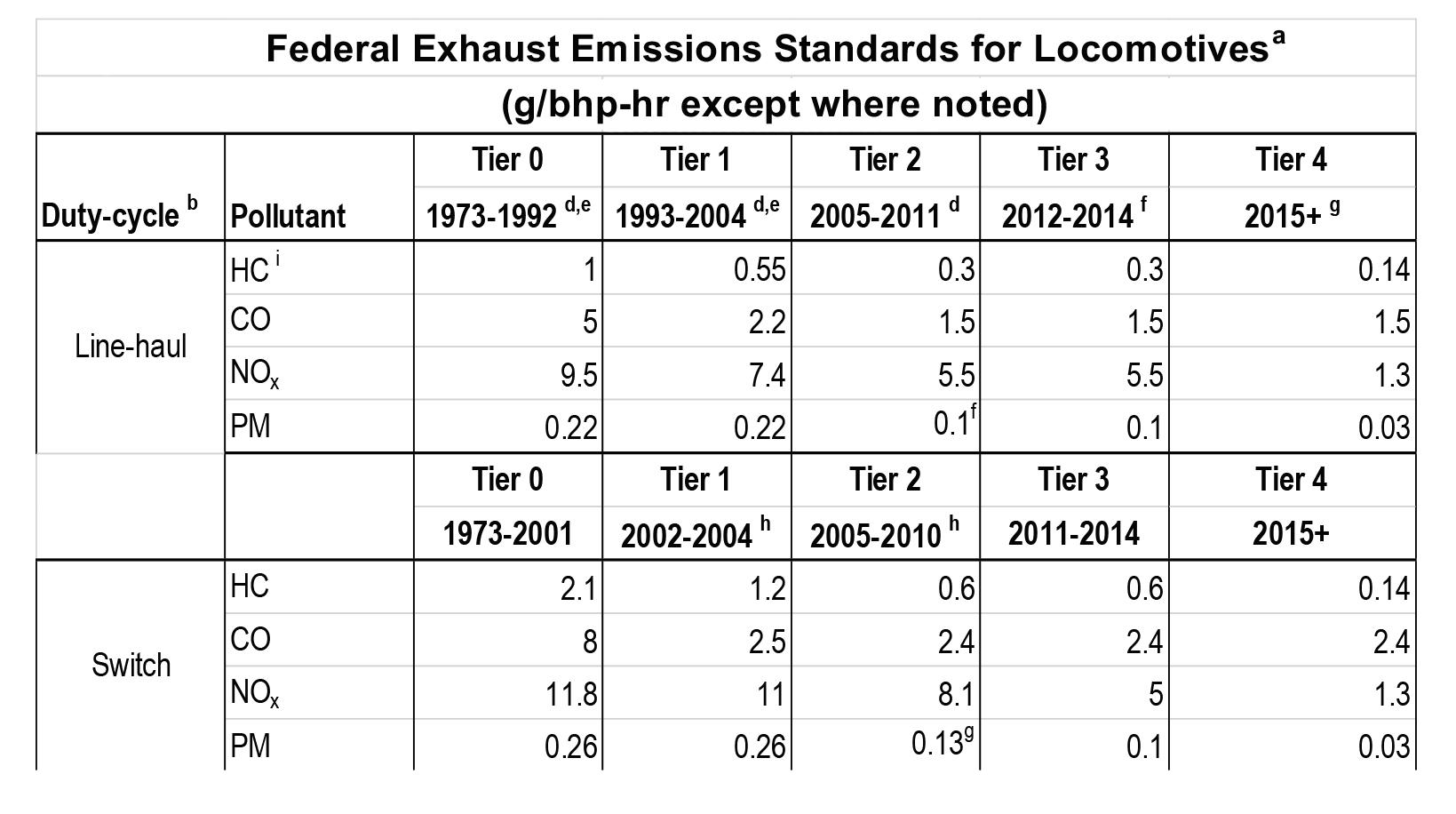
56 Railway Age // September 2023 railwayage.com
TECH FOCUS – LOCOMOTIVES
Since Tier 2 took effect, GE (Wabtec) production has surpassed EMD.
Tier 4 allowable emissions are a fraction of all previous Tiers, 0-3.
SIT AND LISTEN
Railway Age, Railway Track & Structures and International Railway Journal have teamed to offer our Rail Group On Air podcast series. The podcasts, available on Apple Music, Google Play and SoundCloud, tackle the latest issues and important projects in the rail industry. Listen to the railway leaders who make the news.








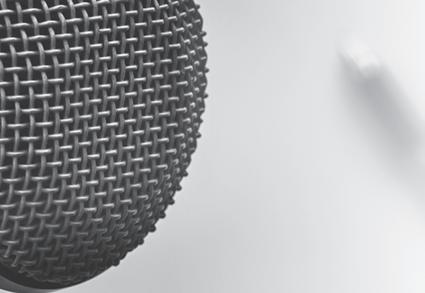



 William C. Vantuono Railway Age
David C. Lester Railway Track & Structures
William C. Vantuono Railway Age
David C. Lester Railway Track & Structures
are available on Apple Music, Google Play and SoundCloud
Kevin Smith International Railway Journal
Podcasts
Key Sessions
•Engineering for Operations
•Light Rail Engineering Standards
•Safety Certification
•Operations Planning and Modeling
•Battery and Hydrogen Fuel Cell Propulsion
•Signaling, Train Control and Street-Running Interfaces
•Leveraging Federal Funding
•PLUS Tour NJ Transit’s Hudson Bergen System

NOVEMBER 15 & 16 Hyatt Regency Jersey City on the Hudson Jersey City, NJ PLANNING, ENGINEERING AND OPERATIONS
RAIL 2023
for planning, operations, civil engineering, signaling and vehicle engineering professionals, Light Rail 2023 offers a comprehensive review of technical and operational issues associated with light and interurban railways. LEARN MORE www.railwayage.com/lightrail SPONSORSHIPS & EXHIBITS Jonathan Chalon 212.620.7224
LIGHT
PRESENTED BY RAILWAY AGE AND RT&S Developed
jchalon@sbpub.com
Speakers include Keynote








 Kevin S. Corbett President and CEO NJ Transit
Je rey A. Warsh Partner & VP MBI Former Exec. Dir., NJ Transit
Fred Mills, P.E. Chief Signal Engineer Houston METRO
Anna Hooven, P.E. Program Mgr. –Bridges & Buildings SEPTA
Joe Costigan, Jr. Rapid Transit Program Sponsor (Dir.) Metrolinx
John Mardente C.Eng. –Passenger Rail Div. FRA
Kevin S. Corbett President and CEO NJ Transit
Je rey A. Warsh Partner & VP MBI Former Exec. Dir., NJ Transit
Fred Mills, P.E. Chief Signal Engineer Houston METRO
Anna Hooven, P.E. Program Mgr. –Bridges & Buildings SEPTA
Joe Costigan, Jr. Rapid Transit Program Sponsor (Dir.) Metrolinx
John Mardente C.Eng. –Passenger Rail Div. FRA
SUPPORTING ORGANIZATIONS
ARGENTINE ADVANCEMENTS
IT systems at BNSF’s Argentine Yard improve efficiency and benefit customers.

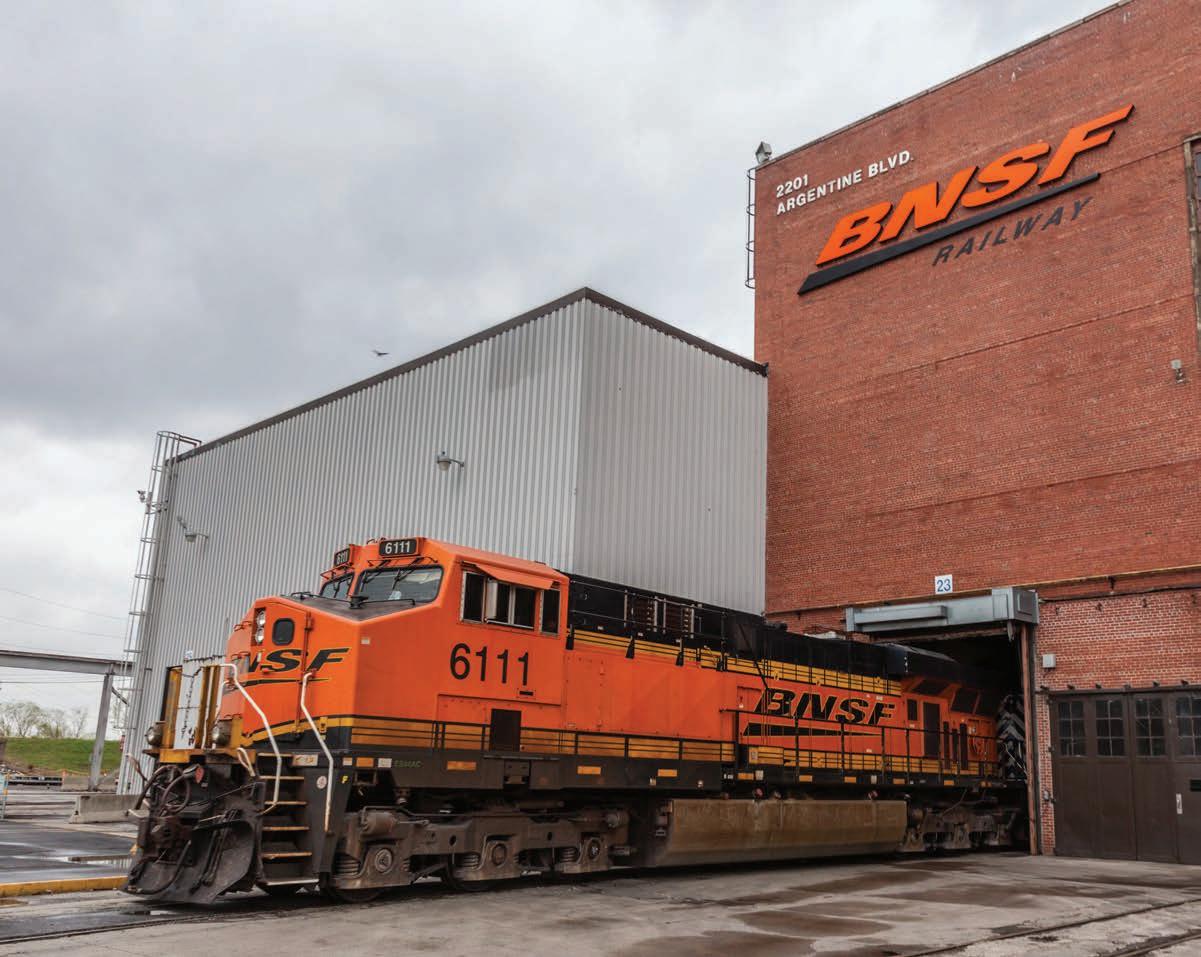 BY CAROLINA WORRELL, SENIOR EDITOR
BY CAROLINA WORRELL, SENIOR EDITOR
Aer Chicago, the Kansas City region is the secondbusiest railroad hub in the U.S. BNSF Railway’s 780-acre Argentine Yard in Kansas City is the largest classi cation yard on the Class I railroad’s 32,500-mile network for merchandise tra c. Freight cars carrying everything from chemicals, plastics and construction products to paper, lumber, food and beverages bound for multiple destinations are separated and re-sorted into new trains.
e Atchison, Topeka, & Santa Fe Railway built Argentine Yard (named a er the local community) as a at-switching operation when the railroad came to the area in 1875. For generations, it has been
one of the major employers in the area. By 1890, the yard had expanded to 27-plus miles of classi cation tracks. In 1949, Santa Fe opened its rst gravity classi cation or “hump” yard there. Over the years, more tracks, buildings and locomotive servicing facilities were added.
Following the 1995 merger of the Burlington Northern and Santa Fe railroads that created BNSF, Argentine Yard was again signi cantly and strategically expanded, as it is a midpoint on the Southern Transcon connecting the ports of southern California with Chicago and points beyond. Today, more than 2,100 railcars arrive and depart Argentine Yard every day. ere’s also an intermodal terminal, division o ces, and a locomotive
maintenance and inspection shop (above).

In June, the railroad accomplished a major overhaul at Argentine Yard in just 48 hours. More than 150 BNSF employees completed a long list of improvements. Major tasks included:
• Replacing the yard’s master retarder.

• Replacing the main hump yard “king” switch used to direct freight cars as they come o the hump into tracks where new trains are being built.
• Installing new cameras, an upgraded signal system and more than 13,000 feet of new rail across 60 classification tracks.
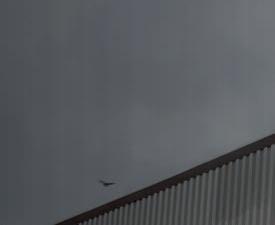
• Repairing damaged walkways.
• Testing all equipment before resuming service.
60 Railway Age // September 2023 railwayage.com
BNSF
Fabric of our Nation
Transportation is a critical part of the fabric of our nation, connecting communities, enhancing access to economic opportunity and playing a crucial role in reaching our sustainability goals. With nearly half a billion riders on Siemens Mobility rolling stock annually, more than 100,000 data points remotely monitored on our rail infrastructure and 30,000 rail crossings across America, we are connecting communities coast-to-coast. Siemens Mobility offers seamless transportation solutions to transform the everyday and strengthen our nation. usa.siemens.com/mobility
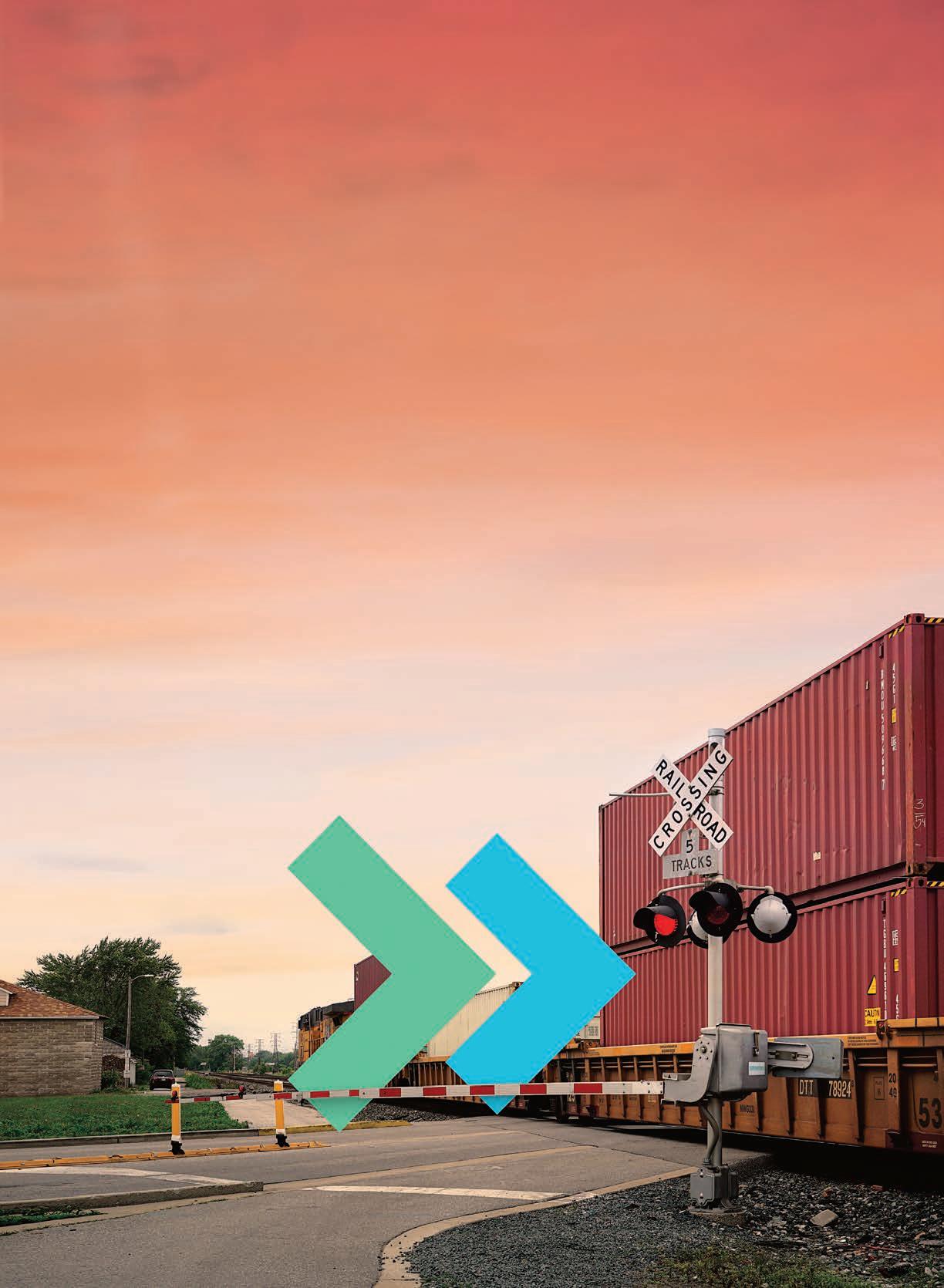
TECH FOCUS – TRAFFIC CONTROL & YARD MANAGEMENT
BNSF utilizes many technologies at Argentine, among them an NX tra c control system that allows a control operator to line switches for trains so they can navigate the yard and expedite movements. NX stands for “Entrance and Exit,” a train routing and interlocking technology that has been used for generations on railroads ranging from freight to rapid transit. “BNSF designed and developed an internal NX system as opposed to buying a commercially available system, providing ease in integration to our many di erent back-o ce environments,” BNSF General Manager, Kansas Division Michael Frisinger tells Railway Age.
NX is similar to a main line dispatching system, providing routing, protection,
switch lists and other yard functions, supporting operational e ciency and safety. “BNSF’s NX system was designed to leverage our internal data centers and networks,” adds Frisinger. “In addition, it leverages a BNSF designed edge-based controller allowing the use of standard industry switching components, such as turnouts, derails, track circuits and indicators.”
BNSF also utilizes TPC (Terminal Process Control), an internally developed proprietary yard automation so ware platform that classi es inbound cars based on the train blocks in which they belong as outbound trains are built.
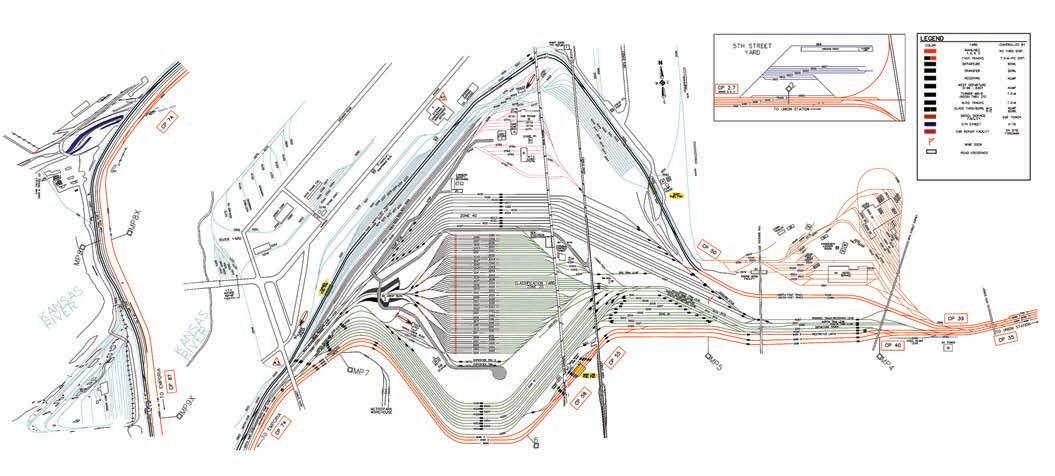

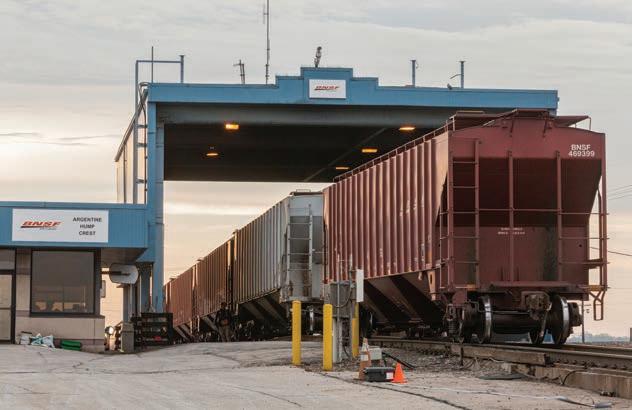
“TPC utilizes AEI (Automatic Equipment Identi cation) and scales to automatically identify car parameters,” says
Frisinger. “It then loads the train manifest and veri es the parameters as the car traverses the apex of the hump. Upon cresting the hump, a route is lined to a destination track and the car is detached and allowed to roll to that track. Retarders are used to manipulate the car velocity to ensure proper coupling speed. We have recently implemented a track utilization tool that automates which train blocks get built in each track based on how many cars are going to that block on a particular day. Prior to this innovation, this process was completed manually.”
According to BNSF, NX and TPC boost network uidity and reduce train and railcar dwell time, improving service as the Class I processes more cars daily.
62 Railway Age // September 2023 railwayage.com
BNSF
BNSF’s NX and TPC systems, combined with AEI, control the hump yard, seen in the upper portion of the photo at right.
HOW DO YOU MANAGE RAIL BUCKLES?




Measure your rail temperature using existing Alstom track circuits Real time reporting for every track circuit - more accurate and granular than weather data Can improve train speeds by specifying exactly where and when slow orders are needed.
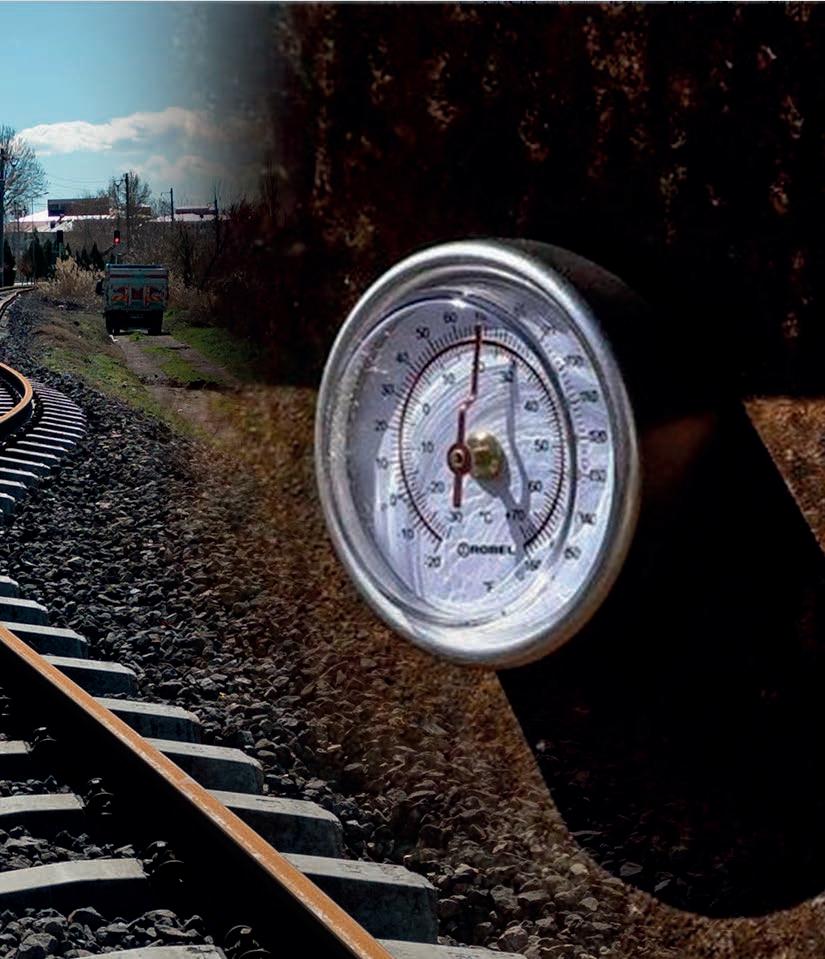

Stop by Alstom’s booth (1701) at this year’s Railway Interchange event to learn more and see Rail TempEst up close!
www.alstom.com







©
SA 2023. dia
via Getty
ALSTOM
images
Images
TRAIN CONTROL GEN
TECH EVOLUTION VS. SOGR: DOING THE RIGHT THING!
The global rail industry’s single-most important communications and signaling event since 1995.
TOP REASONS TO ATTEND
•Network with fellow signaling and train control professionals.
• Learn innovative approaches to implementing advanced technologies.
•Discover new methods for procurement and contracting.
•Become better-informed on current R&D initiatives.
• Acquire in-depth knowledge on planned and ongoing projects.


•Discover upcoming regulations and how they impact your business.
OCTOBER
26 & 27, 2023
The Bellevue Hotel
Philadelphia, PA
Sponsorships: Contact Jonathan Chalon to discover marketing opportunities, (212) 620-7224, jchalon@sbpub.com.
www.railwayage.com/nextgen

RAILWAY
AND
AGE
PARSONS PRESENT
SPEAKERS INCLUDE


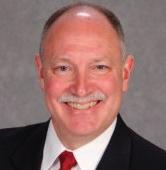



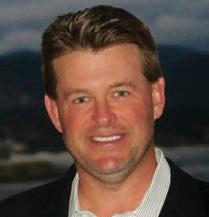


Supporting Organizations







 MARIO PELOQUIN President & CEO VIA Rail Canada
CHRIS MATTHEWS AVP Network Control Systems BNSF
SOFIA GEORGIADIS VP Vital Systems, Signals & Train Control MTA C&D
BRAD MYERS EVP & COO Amsted Digital Solutions
YOUSEF KIMIAGAR VP Advanced Technologies, U.S. Rail Systems Lead Hatch
PHIL DUBERY Co-Owner & Dir. CPC Project Services LLP
ALAN RUMSEY, PH.D. Rumsey Transit Systems Consulting
GARY FRY, PH.D., P.E. VP Fry Technical Services
DAVID SHANNON General Manager RailPulse
MARIO PELOQUIN President & CEO VIA Rail Canada
CHRIS MATTHEWS AVP Network Control Systems BNSF
SOFIA GEORGIADIS VP Vital Systems, Signals & Train Control MTA C&D
BRAD MYERS EVP & COO Amsted Digital Solutions
YOUSEF KIMIAGAR VP Advanced Technologies, U.S. Rail Systems Lead Hatch
PHIL DUBERY Co-Owner & Dir. CPC Project Services LLP
ALAN RUMSEY, PH.D. Rumsey Transit Systems Consulting
GARY FRY, PH.D., P.E. VP Fry Technical Services
DAVID SHANNON General Manager RailPulse
INSIDE THE CSX PLAYBOOK
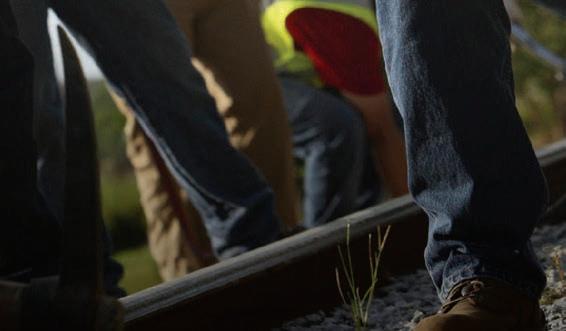
 BY MARYBETH LUCZAK, EXECUTIVE EDITOR
BY MARYBETH LUCZAK, EXECUTIVE EDITOR
For high-quality, safe rail service, infrastructure—from rail and ties to ballast and more—must be consistently in a state of good repair. CSX ensures this by keeping its divisions in synch, in terms of planning and technology, to limit out-ofservice windows and keep freight moving.
e Jacksonville, Fla.-based Class I, with about 20,000 route-miles, will this year invest $1.7 billion out of a total $2.3 billion capital budget
in track, bridge and signal projects. From 2017 through 2021, it invested $500 million more on core infrastructure than in the previous ve-year period and has continued to increase spending each year. Vice President Engineering Carl Walker and Senior Vice President Transportation Ricky Johnson share CSX’s maintenance-of-way playbook in this Q&A.
RAILWAY AGE: How do your divisions work together to ensure track work is accomplished and tra c keeps moving?

RICKY JOHNSON: It all starts with the way we’re organized—the ONE CSX team—and how integral it is for all our groups to work seamlessly. Carl’s team, our Engineering team, is in the same o ce at our Jacksonville operations center, so they’re right there with the people who are making the decisions, day-to-day, on tracktime issues, tie team work blocks and equipment rental teams, and they’re also part of our daily brie ngs. e other big thing that
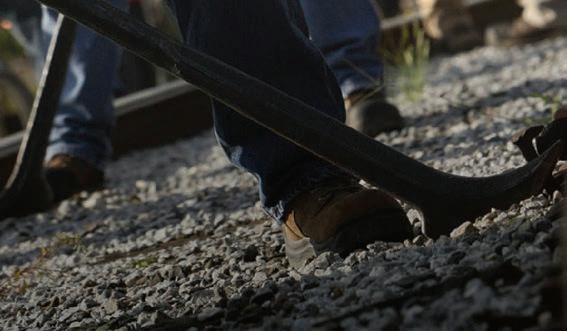
66 Railway Age // September 2023 railwayage.com
TECH FOCUS — M/W CSX
Running a scheduled railroad and safely meeting customer and infrastructure requirements is a “team sport.”
drives coordination between our teams is a weekly meeting attended by senior leaders and all planners in Transportation and Engineering, where we discuss the major work blocks for all teams—ties, rail, surfacing. We’re making plans for work locations several weeks in advance so that we can get work block lengths right. It’s also about what time work starts, where can we maximize the amount of time. And from the Transportation perspective, we look at the natural windows created by our train plan, and there may be adjustments to that plan. Because we are a scheduled railroad, we need time, up to 10 days in advance, to make those changes so that the train pro les are in place and all the cars are scheduled to the appropriate train.
CARL WALKER: e most important thing Ricky touched on is constant communication between the teams, and that’s indicative of what we’re trying to build and reinforce here with our ONE CSX culture. e familiarity that I have with Ricky—I’ve worked for him longer than I’ve worked for anyone else in my 24 years at the railroad—and the expectations that he set for the group guide us in a way that allows us to work together to be as e cient and as productive as we can, and at the same time, work safely.
JOHNSON: I’m a 30-year industry veteran and I started within the Engineering department, and one of the falsehoods I believe is out there when people talk about scheduled railroading is that it’s a “cut and burn” and the support departments are not funded correctly. I can tell you the exact opposite—that you cannot run a scheduled railroad without having the best infrastructure in the business. And the funding we have received as a team to improve the condition of our main lines, industry leads and yards has been incredible, not only for the safety of our operations and employees, but also to better serve our customers. If you have safety incidents and derailments because you’re not maintaining track, you can’t serve customers on a daily scheduled basis, and you won’t be able to grow business. So having that infrastructure and the commitment to maintain it is part of our value proposition.
RA: Can you share a recent example of how your teams came together quickly to get a job done?
WALKER: I can give you a recent example of a main line derailment we had in June.
CSX BY THE NUMBERS (AS OF DECEMBER 2022)

•Approximately 20,000 route miles of track in 26 states, the District of Columbia and the Canadian provinces of Ontario and Quebec.
• 35,750 total track-miles, including single main line track (19,879), other main line track (5,662), terminals and switching yards (9,308), and passing sidings and turnouts (901).
•Links more than 230 short line railroads and 70-plus ocean, river and lake ports with major population centers and farming towns.
We had to get the track reopened as quickly as possible. It occurred in the morning, and by evening we were running trains again. It took Ricky’s leadership and involvement from Mechanical Engineering, Communications and Signals and some key vendors to make that happen. Conference calls and progress updates helped move that along as quickly as possible without further impacting operations.
JOHNSON: A more recent example was on our New England region on the Pan Am Southern property. We had a lot of congestion, and numerous washouts, oods and track damage. Because of some of the damage from storms and congestion, we reached a point where we had a signi cant amount of slow orders. ey accumulated, and with congestion, track time was very constrained. Sometimes the eld teams don’t see the bigger picture and understand that part of the reason we haven’t been able to clear up congestion is because we’re not giving Engineering enough time to x the slow orders, and we’re unable to get the trains over the road without using two crews. We came up with a strict train plan, and we li ed 11 of 13 slow orders in two days.
RA: What track maintenance technologies are you using today to maximize
• Nearly two-thirds of Americans live within CSX service territory.

• More than 14,000 bridges, including 9,600 that carry trains and 4,000-plus that cross over CSX rights-of-way.
•Operates an average of 1,848 trains per day.
•Transports more than 3.5 million carloads of products and raw materials per year.
out-of-service windows?
JOHNSON: Among the biggest things we do today is our ATAC (Autonomous Track Assessment Cars), which are unmanned geometry cars. We have eight, and we’re able to test our main triangle—Chicago to New York, New York to Jacksonville, and Jacksonville back up to Chicago—with three ATACs. We’re able to test on a frequency of more than once a week. e value is being able to use technology in the background to establish the dataset from a geometry car run, then taking the next geometry car run and laying its dataset on top. We still practice the original method of nding a defect and getting an alert. But we’re able to lay that run-over-run data with one of our technology partners, and we’re able to look for “change detection.” ink about traditional maintenance: If it breaks or if it’s a defect, x it, which is not an ideal maintenance practice. With change detection, we’re able to move into the predictive side and be there before a minor defect escalates. We remediate that problem before we have an out-of-service or slow-order condition. And by knowing the exact geographical location, we deploy the right resources and equipment. With time to plan, we can respond very quickly and need less track time.
TECH FOCUS — M/W September 2023 // Railway Age 67 railwayage.com
TECH FOCUS — M/W


WALKER: We’re testing drone technology in our yards for track inspections. We’re working on the application’s algorithm buildout. We expect that to be in place within the next 12 to 18 months. It’s going to help us take human error out of inspections in some of our critical yards, speci cally our major at yards. We’re also using LiDAR technology to look at clearances, ballast pro les, crossing pavement
pro les. Arti cial Intelligence is a big development. I’m sure at some point the rail industry will try to take advantage of some of its benets, like predictive maintenance and improved safety, to increase productivity and e ciency.



RA: How does CSX approach state-of-good repair track maintenance? What are some current and planned projects?


JOHNSON: We approach maintenance, especially with our big production teams, through use of curfews. We have some on our key corridors called “mega blocks.” ere’s a lot of focus and attention from Transportation and our Network Operations and Service Design teams on making sure we’ve got a great train plan that allows us to maximize and give eight- to 10-hour windows. From the Engineering side, if we’re going to put that much e ort in these key corridors, we make sure we maximize track time use. We do that with multiple teams, simultaneously. It’s not one tie team doing 40 miles. It could be two or three, with our rail and surfacing team. We’ve been successful in that it really improves our productivity and unit cost and keeps our network in a state of good repair. One signi cant project involves Pan Am in the New England region and all the work we have done to upgrade those lines. We have a huge opportunity to grow business, and to do that the right way and run a scheduled operation, based on our values and commitments to our customers from the ONE CSX perspective, we must improve the infrastructure so that it will be safe and reliable. ere’s a lot of work on the entire territory that’s going to continue for the next couple of years as we look to improve the infrastructure’s velocity and reliability.
WALKER: Additionally, there’s quite a bit of wayside work. We’ve migrated two of the three former Pan Am districts over to our dispatching system, and we’re planning to install PTC on the line that hosts Amtrak’s Downeaster. When we acquired that property, 12 hot bearing detectors did not have remote connectivity to allow us to monitor them from our network operations center. We immediately started a program to replace and increase them. For spacing, generally, we want a 15-mile average, and we’re installing 18.




JOHNSON: We needed to add detectors to get to our standard 15-mile average spacing, but it was also about location. Do they protect interchange locations, sensitive areas? We have a water reservoir and other things in New England adjacent to our right-of-way. It was determining, from a risk perspective to the public and the communities we operate in, if they’re in the right location to prevent issues. And our technology is much better. e employees and teams on Pan Am had done an outstanding job of maintaining and working with what they had. But it’s a whole di erent ball game now, and the enthusiasm and
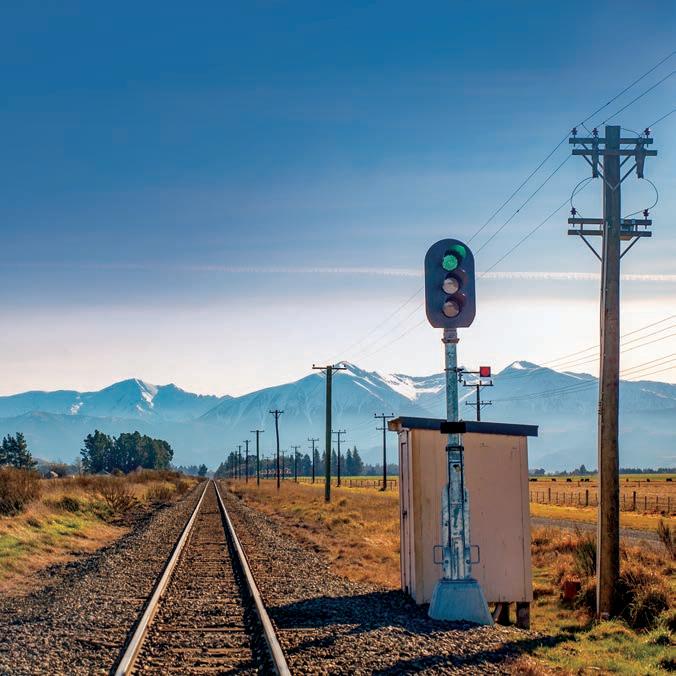
68 Railway Age // September 2023 railwayage.com
excitement we’re seeing from the employees on the former Pan Am that are now part of our network has been tremendous.

RA: What are your top current and planned capacity improvement projects?





















JOHNSON: e Howard Street Tunnel project is going to be a huge win not only for our company but also for the Port of Baltimore and for the surrounding states. Next year—probably in the second quarter—we’ll get our clearance going north out of Baltimore. e Howard Street Tunnel project is going to take us a couple of years to complete, but we’re progressing.
e other big projects involve siding capacity on our Chicago-Jacksonville and New Orleans-Southeast corridors. ey’re 75% to 80% complete, and we expect to be done in rsthalf 2024. We’ve completed a new connection on our Brunswick Subdivision—1,500 feet of track and two switches at Nahunta, Ga. Since the Brunswick Sub is routed in the same direction from Waycross to Savannah as the Jesup Sub, building a connection from the Brunswick Sub to the Nahunta Sub toward Savannah basically created 30 miles of double track, where we can run directionally. It has really improved our uidity in the area. Having no delays from holding trains to meet and pass has been a tremendous improvement for a relatively small investment.
Also, when you think about the ChicagoJacksonville corridor and the tra c we interchange in New Orleans that’s routed through Montgomery headed to Waycross, by adding capacity and increasing siding lengths—which previously averaged 6,000 feet—we now have two routes into Waycross from Birmingham: When tra c from Chicago gets to Birmingham, we can now run through Montgomery into Waycross, or through Manchester, Ga. ese two possible routings between Jacksonville and Birmingham through Waycross add capacity to that whole corridor. It improves our ability to handle existing business, but also unlocks the growth opportunity for all our customers and in that corridor.
RA: What have been your greatest challenges?





JOHNSON: I’ve been in the industry 30 years and it hasn’t changed. e greatest challenge Engineering always faces is track time. at’s why we’re committed to being proactive and having a good plan. Having Service



Design, Network Operations, Transportation, both local and eld, and Engineering all engaged on the front end and planning for the work, we’re able to execute that plan more reliably. We’re not 100%—nobody will ever be 100% as we work in an outdoor environment with all kind of obstacles—but when you have a plan, you’re able to adjust it week to week and execute it at a much higher percentage
than what you would ever do without having all the players involved in the initial plan. Understanding that we can’t run a scheduled railroad without having the proper infrastructure. Understanding that it’s a team sport; it’s not about one department, Transportation or Mechanical or Engineering, prioritizing individual goals. at is core to us. ere are no silos, because we’ll all fail if one fails.

TECH FOCUS — M/W September 2023 // Railway Age 69 railwayage.com
www.frauscher.us APTA EXPO October 9-11 Booth #1575 Innovative axle counting solutions for your train detection applications Stop by to see what’s new! Railway Interchange October 1-4 Booth #1239
PREPAREDNESS INVEST IN
BY GIL
AND CRAIG WENNER
Aprocess server hands you a stack of legal papers. It means trouble. e reason? Two
of your trains derailed near populated areas. ey carried toxic waste and volatile chemicals; there were res and an explosion resulting in huge property damage and tragic loss of life and injury.
e National Transportation Safety Board and government experts have conclusively determined the accidents were caused by a malicious cyber hacker who took control of the locomotives and communication systems.

Unlike prior lawsuits that targeted just the company, you now nd yourself personally named as a defendant. e lawsuits have been brought by classes of injured victims and investors, the Securities and Exchange Commission, the Federal Trade Commission, and possibly others. You are under investigation by the Department of Justice, the Environmental Protection Agency, and State Attorneys General. You are required to preserve and produce all notes, messages, documents and communications—oral and written—regarding cyber vulnerabilities and de ciencies in your operations and the steps you have taken to identify and correct them. Certain other senior decision-makers within the company, such as the CEO, CISO and certain Board members, are also named in the lawsuits. You assume, incorrectly, that you are all in the same
legal boat, but the facts regarding each person’s knowledge and actions will ultimately determine their, and your, liability.
You know your CEO has externally told individuals that your railroad has operational cyberattack vulnerabilities “under control.” But internally? Are you prepared? Legally? For litigation? Have you put in place an expeditious operational identi cation and mitigation plan, with a sizeable budget and ongoing oversight, with adequate manpower and organizational authority? Have litigation preparedness steps been taken? You may think that your company’s compliance with Transportation Security Administration’s Security Directives is enough, but the TSA mandates will not determine whether the plan you implemented and the decisions you and others in the company made were reasonable or negligent, or worse.
Sound farfetched? Improbable? Alarmist?
Over the past several years, there has been a sea change in what is required to responsibly manage cybersecurity risks from both operational and legal perspectives. For critical infrastructure such as rail, the oversight of operational cybersecurity must now be treated as a core business function, where informed cost-bene t decisions should be made at the highest levels of an organization and not simply delegated. What has changed to precipitate at least one major railroad to move expeditiously on these fronts?
• Legally: Societal, political, regulatory and management norms have evolved to now hold individuals, not just corporations, as responsible for cyber accidents and nancial damages. Court cases involving civil and even criminal liability have been successfully aimed at IT individuals and the C-suite. is includes liability arising out of both the actions taken to protect against cybersecurity risks, and what company representatives said about those risks in public.
• e government, politics, local attorneys general and prosecutors have emerged as energized interested parties, with mixed agendas that are averse to corporations and individual executives. e related statements by prosecutors and regulators in these cases show an increasing focus on individual liability. Where the company and bad actors previously insulated executives and Board members from liability, those with oversight responsibilities are moving toward the front of the line.
• White-hat hackers have repeatedly demonstrated proof of concept for operational vulnerabilities. For example, a railroad voluntarily subjected itself to a friendly but expert third-party hack of its operations infrastructure. e ndings are contrary to the railroad industry’s public posturing. Control of locomotives




70 Railway Age // September 2023 railwayage.com
Shutterstock/ TierneyMJ
Committing to assessment and litigation preparation is a critical part of a cyber defense budget.
LAMPHERE
so ware was successfully hacked. e PTC system was disabled and compromised. e locomotive control panel displayed misleading and confusing data. Inter-locomotive communications on a consist were broken; independent, uncoordinated activity and control of non-lead locomotives was established. Wayside signaling was disabled and/or manipulated. e automatic and manual override signals to stop and start a locomotive in an emergency were blocked or masked. A few examples of a broader array of known operational technologies at risk:
• Risk management teams have analyzed the exposure of train accidents in the billions of dollars, a signi cantly higher multiple of damages than that which has characterized data leaks. Liability attached to operational cyberattacks in which detailed mitigation plans are not in place and functioning (or are inadequate) have increased these multiples because they include penalties, punitive awards and interest on top of staggering damage amounts. It doesn’t help the railroads’ case that only $8 million of the $123 million spent on total cybersecurity was directed to operational technology security.
• ere is a growing recognition that the probability of a cyberattack on a railroad is not as remote as once believed. reat
intelligence has demonstrated persistent attempts by hackers and nation states to nd and exploit vulnerabilities in critical infrastructure. Cyberattacks with physical consequences are growing exponentially, evidenced by multiple third-party reports. Railroads have also discovered that operational vulnerabilities are 1) widespread and deep in the core of dayto-day operations and 2) the number of personnel in information and communication technology is spread among so many silos of risk specialties (largely data), that getting control of this issue is daunting. Fortunately and surprisingly, operating personnel are quick to identify many of the vulnerabilities, but the companies o en lack the right culture and cybersecurity framework within which to take appropriate action.
• Legal preparation for litigation involving operational technology is virtually nonexistent. is is a distinctly di erent question from whether the railroad has taken steps to comply with TSA mandates and implemented a cybersecurity plan. Damages will either soar or be contained by plainti s nding the details (some documented and some not) of what corporate personnel have actually done and le undone. If it’s not in writing, for example, it is not done.
Each day that passes without appropriate action will make the claims against you and your company even harder to defend. Over the past decade, there have been increasingly urgent calls from several sources for critical infrastructure, such as rail, to implement comprehensive cybersecurity risk frameworks overseen by the highest levels of an organization. In response to the Cybersecurity Enhancement Act of 2014, for example, the National Institute of Standards and Technology recommended voluntary compliance by critical infrastructure owners and operators with its framework that focuses on “using business drivers to guide cybersecurity activities and considering cybersecurity risks as part of an organization’s risk management processes.”
Since 2015, the Department of Homeland Security has recommended the implementation of its transportation-speci c framework that includes the combination of external components, such as threat intelligence made available by the government, and internal components, such as cultural parameters that
CYBERSECURITY
inform how cybersecurity risk management decisions are made. For those companies that have failed to adopt robust frameworks until only recently or have failed to audit and ensure that those frameworks at least complied with long-standing recommendations and threat indicators, it will be very di cult to defend against claims of negligence.
ere is already evidence of failures to implement adequate cybersecurity frameworks. In one recent case, railroad tech personnel with knowledge of vulnerability to the PTC system had not informed other senior corporate individuals whose responsibility for operations and safety were therefore compromised, putting the organization at risk for cyber intrusions. is IT individual was not doing anyone a favor.
e senior operating executive who wasn’t told had every reason to be angry. Nor was the legal department told, with its responsibility for a wide range of documents with representations of cyber preparedness and risk, now including the state of readiness of operating rolling stock and communications. Such documents include D&O insurance with adequacy of defense costs, bank reps and warranties, property and human injury liability, SEC lings (without 8-K amendments that highlight changes in status).
What has further changed on this point?
e failure of the individual with knowledge or well-rooted suspicion of vulnerability puts the entire organization at legal risk if the threat is not documented and passed onward, upward, and crossways. e failure to track down realistic suspicions of inadequacy may give rise to liability for senior executives, whose expertise, experience and responsibilities require that they be proactive. is happened with the Co-founder and CEO of a tech company who the Federal Trade Commission held personally responsible for a cybersecurity breach when he was on notice of vulnerabilities but failed to implement reasonable security measures that could have prevented the hack.
e focus is not just on what has been done regarding cybersecurity, but also what you say about it. A recent and relevant enforcement action by the SEC should be a wake-up call. e SEC charged Blackbaud Inc. with violations of the securities acts based on an omission in a 10-Q regarding the nature of data that was ex ltrated in a hack. At the time the 10-Q was issued, the internal IT team had discovered that more data was stolen than originally believed, but they had not yet communicated this information to the senior management at the time of the 10-Q.

September 2023 // Railway Age 71 railwayage.com
CYBERSECURITY
e company self-corrected and issued an 8-K that accurately conveyed the relevant information, but it was too late. e SEC said Blackbaud failed to disclose accurate and timely information. Blackbaud paid a penalty and settled.

e risks facing individuals also extend to their past incentive pay, bonuses and salary, depending on the nature of the individual’s wrongdoing. Apart from the contractual or statutory ability of the government or the company to claw back pay, there is an increased focus in the market on holding individual executives accountable to better incentivize them to meet their legal obligations. As Warren Bu et recently stated in reference to banks, if an executive gets the company in trouble, “both the CEO and the directors should su er. You’ve got to have the penalties hit the people that cause the problems, and if they took risks that they shouldn’t have, it needs to fall on them if you’re going to change how people are going to behave in the future.”
Full, fair and more wide-open disclosure of operational cyber risks is now the evolving norm, altering language that corporations used to use about “belief,” “all possible steps,” “secure,” “best technology available,” “robust,” and “adequate controls and defenses are in place.” New language being considered among companies is about “possibility,” “risks still exist,” “areas of vulnerability are shi ing and evolving.” With the Solarwinds breach, for example, class action claims against the CISO were allowed to proceed where the CISO had claimed the company’s security focused on “heavy-duty hygiene,” among other statements. e court allowed the claims to proceed because the “cybersecurity measures at the company were not as they were portrayed.” And in June 2023, the SEC made a preliminary determination to le a civil enforcement action against current and former company o cers.
WHAT TO DO
e U.S. Navy and U.S. Army audited their top 70 weapon systems and discovered that two-thirds of weapon systems—M1 Abrams tanks, Stryker armored personnel carriers, self-propelled howitzers, Navy ships’ missile launchers, ghter planes and satellite communications—had been built with so ware and hardware that was not only vulnerable to new cyberattacks, but also whose so ware might have already been compromised. (Many, including the 60-ton M1 Abrams tank, operate with the same operating platform and the serial data busses as a 200-ton locomotive.)
e Secretary of the Navy pulled together civilians and senior Navy o cers to come up with a solution. e solution was a multidisciplinary team to cut across all lines of authority, silos and organizational boxes that de ned authority and command of its 70 weapon systems. e team’s objective was to search for malware and put in place the necessary hardware and so ware to protect these missioncritical weapon systems from future attack.
What we are proposing is the same. A hybrid operating and legal team that identi es the main operating vulnerabilities, based on inside and outside sources of information, and helps the company assess and prioritize risks based on seriousness of impact and the time and ease to x them. e purpose is to assist the C-suite in authorizing and prioritizing dollars, organize people and plans, and set priorities. It is also designed to brief the Board of Directors and the Committee Chairs or Individual Board Members charged with assessing the railroad’s risk and readiness. is approach is consistent with recommended frameworks by U.S. and international bodies that provide detailed protocols for recording, correcting, and reporting engineering and cyber de ciencies.
Legal is important. Railroads will bene t immeasurably from a detailed litigation assessment integrating and identifying legal risks from cyberattacks and attacks on a railroad’s highly complex, technical, engineering, mechanical and communication-based operating system. e assessment would integrate with ongoing cybersecurity preparedness steps and coordinate responses across data and operational functions. It would also assess insurance strategies (such as disclosures and D&O, property, excess liability and cyber insurance policies), bank reps and warranties, shareholder disclosures in SEC lings, le review and retention policies at the operating level and CEO/ O cer and Board/Committee levels. Importantly, counsel can help preserve privilege and create an environment in which candid disclosures of risks and solutions can be discussed before they are reduced to the cybersecurity plan or other documented interventions.
WHY INVEST IN PREPAREDNESS?
ere are multiple competing concerns facing railroads including an economic downturn, increased corporate and operating expenses, in ation, wage pressure, and limitations on pricing increases. However, investment in assessment and litigation preparation is a
critical part of a cyber defense budget:
• Outside litigation preparation or lack of preparation will be judged a er the fact by multiple parties.
• Fees can be expensed and/or capitalized by allocation to operations, rolling stock, track, signaling, PTC and NOCs.
• Early investment can yield important bene ts and provides an important response to legal challenges.
e time to test the evidence is not when producing it in discovery, at which point the record is set and nothing can be done to change how it will be perceived. e time to test it is now, before anything has happened and while protected by privilege.
To accomplish all these objectives, protect privilege, take advantage of a learning curve and relieve organization issues as to sheer manpower and silos, we recommend a team consisting of: 1) litigators who have taken the time to understand railroad operations and cyber vulnerabilities and who can coordinate and draw upon their rm’s cyber experience, rail operating governance experience, and knowledge of cyber vulnerability and defense for rail operations; and 2) third-party railroad individuals with deep operating knowledge who also have legal C-suite/Board, nancial, duciary and strategic experience with handson experience and knowledge of cybersecurity interface with operations, engineering and communications, extensive industry relationships and knowledge of industry group and supply chain linkage. is team’s objective is to create a plan that can be defended, and to update and litigate-proof the trove of documents on the operating and legal documentation side to ensure that a railroad is truly state-of-the-art in its defenses against the far-ranging cyber suits that will result from operation hacks.
Pick a number for damages from a cyberattack on operations, assign a probability of such attacks occurring and see if the result doesn’t justify a $2 million-$2.5 million legal/ litigation/operating review, and upwards of $25 million of capex per year for three years to strengthen the operational vulnerabilities.
Gil Lamphere is the former Chairman of the Illinois Central Railway, and former Board Member of CN, CSX, Florida East Coast Railway and Patriot Rail (Chairman). Craig Wenner is a partner at Boies Schiller Flexner LLP. e rm is a globally recognized trial and arbitration law rm that specializes in litigation of large, complex cases including cybersecurity.
72 Railway Age // September 2023 railwayage.com
The Railway Educational Bureau BOOKS
-Railroad Resources -
The Railroad: What It Is, What it Does
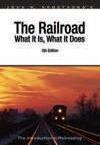
The fifth edition of The Railroad: What It Is, What it Does is even more valuable than before. Inside you’ll find a comprehensive look at how today’s railroads function—from equipment to procedures and marketing to maintenance.
The fifth edition is an indispensable resource for anyone wanting to learn about modern day railroads. The book delves into many facets of the railroad industry including such topics as freight cars, locomotives, track, signal and communication technology, intermodal traffic, operations, labor relations, and design engineering. Softcover, 440 pages.
BKRRNN $49.95
General
Railroader: The Unfiltered Genius and Controversy of Four-Time CEO Hunter Harrison
• BKHUNTER • $27.99*
Diesel-Electric Locmotives • by Walter Simpson
• BKDIESEL • $50.00
Amtrak, America's Railroad: Transportation's Orphan and Its Struggle for Survival
• BKAMARR • $40.00*
Train Wreck: The Forensics of Rail Disasters • Soft Cover

• BKTW • $24.95*
American Steam Locomotives, Design and Development, 1880-1960 • BKASL • $40.00*

All About Railroading - Second Edition • BKAARR • $35.95
Riding the Rails - Inside the Business of America's Railroads
• BKRAILS • $45.00

Amtrak: Past, Present, Future • by Frank N. Wilner • BKAMTRAK • 39.95 *
Operations
Managing Railroad Transportation • BKMRT
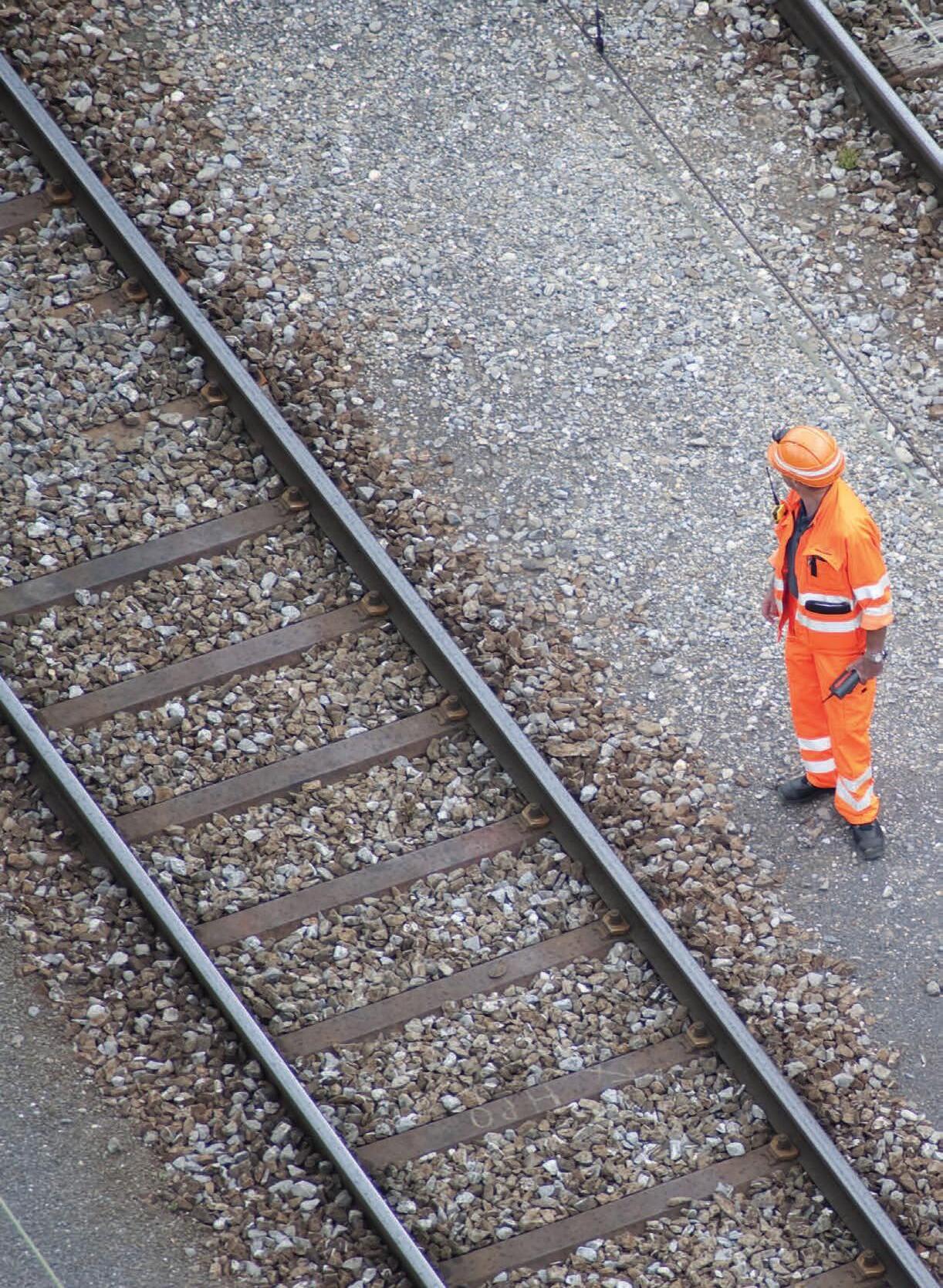
•39.95*
Railway Operations and Control - Third Edition
• BKROC • $39.95*
Railroad Operations and Railway Signaling
• BKRORS • $28.00
Rules & Regulations Governing Railroad
Signal and Train Control Systems
• $22.95
• BKSTC
Railroads & Economic Regulation (An Insiders Account)

Railroads & Economic Regulation traces the development, failures and successes of railroad economic regulation by an insider who was a White House appointed chief of staff at the Surface Transportation Board and a senior officer at the Association of American Railroads.
"Frank Wilner has written an exhaustive history of our nation's railroads and the complicated, intriguing and often confusing federal regulation and lawmaking."
Nick Rahall
Member of Congress (West Virginia, 1977-2015)
"As a new member of the Surface Transportation Board, the book would have been indispensable to me. It places today's regulatory issues into context based on their history and paints a picture of the characters who have made the railroad world what it is today."
Debra L. Miller
Member, Surface Transportation Board, 2014-2018 Hard cover, 414 pages.
BKRER $69.00
Freight Car
The Double Stack Container Car Manual
• BKDOUBLE • $21.95
Guide to Freight Car Air Brakes • BKFCAB • $74.50
Doorway to Safety With Boxcar Doors • BKBD • $28.95
Freight Cars: Lettering and Marking • BKK2CBK • $28.95
Guide to Freight Car Trucks • BKFCT • $98.95
Locomotive
Guide to Locomotive Mechanical Maintenance -SD & GP Locomotives • BKGLMM • $41.95
Guide Locomotive Electrical Maintenances • BKGLEM • $51.95
Fuel Saving Techniques for Railroads - The Railroader's Guide to Fuel Conservation • BKFUEL2 • $34.95
Guide to North American Diesel Locomotives • BKGNADL • $27.99*

The Only Game In Town: The LOCOTROL Story • BKGAME • $69.99*

Reference and Dictionaries
Dictionary of Railway Track Terms • BKRTT • $38.00

Railway Age's Comprehensive Railroad Dictionary - Second Edition • BKRD • $39.95
Track
Basic Principles of Track Maintenance • BKTMB • $150.00
Fundamentals of Railway Track Engineering
• BKFRTE • $150.00
The Track Data Handbook • BKTDH • $53.50*
Transit
Development and Operation of New York's IRT and BMT • by Al Fazio • BKNYIRT • $65.95

Urban Transit: Operations, Planning, & Economics • by Vukan R. Vuchic • BKUTOPE • $155.00*
Shipping Rates: Add the following shipping and handling if your merchandise subtotal is:



order, call 1-800-228-9670 or visit www.transalert.com
To
The Railway Educational Bureau 1809 Capitol Ave., Omaha NE, 68102 (800)228-9670 I (402) 346-4300 www.RailwayEducationalBureau.com UP TO $10.00 $6.10$11.00 10.01 - 25.00 10.50 18.25 25.01 - 50.00 14.30 23.85 50.01 - 75.00 16.05 29.75 75.01 -100.00 19.10 38.85 100.01 - 150.00 21.75 50.50 150.01 - 200.00 25.45 67.45 200.01 - 300.00 30.90 83.65 300.01 - 400.00 36.30 100.60 400.01 - 500.00 41.85 117.15 500.01 - 600.00 47.75 133.40 600.01 - 700.00 53.60 153.35 700.01 & up (Appropriate charges applied) U.S.A. CAN U.S.A. CAN
NEW!
For this article, Artificial Intelligence (AI), including Machine Learning (ML), is defined as the ability to perform tasks that are normally beyond the ability of human intelligence, either due to complexity, the amount of data, a time restriction, and/or continuous variation in the values of the variables involved. To be clear, ML is only one form of AI.
The opportunities for the use of AI involving train movements are not the same across the globe. For example, the applications of AI for train movements on North American railroads differ significantly from those of Europe and Asia. The two primary opportunities to be considered here are train control and traffic management that provide for increased safety and business benefits, respectively.
TRAIN CONTROL
For European railroads, the integration of AI with fiber-optic sensing (FOS)

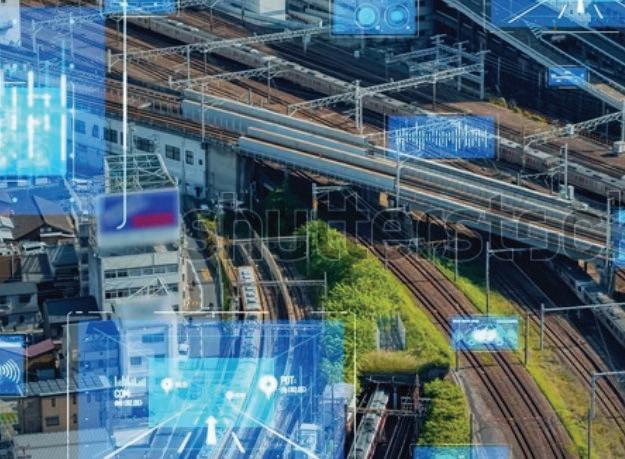
WHEN? WHICH INTELLIGENCE,
BY RON LINDSEY, CONTRIBUTING EDITOR
promises precise train detection and position leading to the digitization and automation of operations. However, in the U.S., the freight railroads already have very accurate train positioning (18 cm with 10 -9 confidence level) and speed available via the PTC (Positive Train Control) platform where deployed.
As to the use of AI in train control in the U.S., PTC provides that for enforcement in both signaled and dark territories. PTC continuously evaluates the braking curves for multiple targets to ensure that an enforcement can be made if the engineer’s handling is predicted by the PTC platform to violate the parameters of the train’s movement authority. Targets include movement authority limits, speed restrictions, misaligned switches, and lack of permission to pass through a work zone.
Contrarily, ML is being implemented for enhanced safety beyond that of enforcement. I refer to 4AI Systems’ HORUS, an ML vision system to detect
and classify objects in the rail corridor in real time. Its in-cab screen provides a forward view to the engineer with specific objects outlined and identified. This includes intrusions by people within rail danger zones.
Additionally, if so configured, HORUS can include braking for detected hazards. In time, the system can create a database of the wayside sufficient for block occupancy in lieu of track circuits. However, as with Virtual CTC (VCTC) that my consultancy designed for the railroads of Egypt and Kazakhstan to eliminate track circuits, this will not be implemented in North America any time soon. I say this due to the resistance to the resulting reduction in labor, as well as the reduction in revenue for suppliers.
TRAFFIC MANAGEMENT
For the business end of rail operations, is use of AI practical? My perspective is based on Operations Research (OR) techniques stemming from my quantitative
74 Railway Age // September 2023 railwayage.com
Shutterstock/ metamorworks
MBA education. OR consists of various mathematical techniques including Linear Programming (LP), Monte Carlo simulation, regression analysis, econometric modeling, etc. When one considers moving-block, arguably the most efficient traffic management approach for track time usage, the underlying process is the aggressive use of algebra, not unlike what many of us experienced in high school.
For example: Two trains are progressing toward each other at a certain time and speed. With the distance between the two locations known, one can make a deterministic calculation as to the meeting point and time using algebra. However, if other variables are considered—e.g., priority, customer value or schedule requirements—then the math becomes more complex, and algebra is not sufficient. Instead, LP is ideal for these types of problems that have constraints to be considered. However, LP is not meant for a continuous “live” analysis. What to do?
Throughout my professional career, I have often resorted to use of the heuristic 80/20 rule of achieving results. My designs of PTC and VCTC were partially done in that fashion, as well as various models and simulations I have performed. Simply stated, 80% of the objective can be completed with 20% of the effort that would be required for an absolute solution. This means addressing only a few major variables and using “in-time,” not realtime, positioning and speed data. It also means being able to make sound assumptions about some variables that are not really required for a reasonable solution. One OR tool I have used is Monte Carlo simulation. This process predicts possible outcomes of an uncertain event via many iterations that address the distribution of values for the key variables.
Hence, my bottom line for the use of AI to address various constraints of traffic management is that it is not practical for execution purposes. However, it can be of value for planning purposes.
Moving beyond use of AI for safety and business value in train movement handling, I address several areas below I know are in service or actively being pursued. Clearly, this list is not complete. The most common uses of AI in railroads fall into two general categories: ML and Optimization. I also describe one example of econometric modeling.
MACHINE LEARNING
ML is use of algorithms and statistical models to draw inferences from patterns in data.
• BROKEN RAIL PROTECTION:
Considering FOS again, ML is useful for broken rail protection where track circuits are not used—i.e., dark territory. This sophisticated capability is in revenue service in Europe, at least.
• PREDICTIVE MAINTENANCE:
Without any personal experience, I do know that ML is being used for predictive maintenance for various parts of the physical plant, including wayside infrastructure and rolling stock.

• DYNAMIC HOSTLER ASSIGNMENTS: The availability of timely activity of units to be handled and train availability can minimize wasted
travel time of the hostlers outside of the yard.
OPTIMIZATION
Optimization analysis is used to minimize or maximize the value of a set of linear (most common) functions.
• FUEL PURCHASING MANAGE -
MENT: In my early days at a Class I railroad, I developed LP that was used monthly to consider the spot prices of fuel at various locations and then to calculate the minimum total cost for buying, storing and transporting fuel to depots across the system. But a particular application of LP has to be understood and manageable. Second, management needs to buy in.
• HOSTLER EFFICIENCY: Optimizing the distance and location of their activities can minimize the loading time in yards by hostlers.
• INTERMODAL TRAIN ETA: By monitoring the dwell times of recent trains, the estimated time arrival of an intermodal train can be improved as to accuracy.
• INTERMODAL LOADING OPTIMIZATION: The rules of the loading plan for containers and trailers can be quickly handled by ML.
ECONOMETRIC MODELING
A second tier of AI possible for fuel purchase management is use of econometric modeling to predict the changes in fuel price in a one- to two-month time frame. I include this one based on what I was able to do in predicting scrap steel prices for a steel company I worked for prior to the railroads. It was very successful for deciding when to buy extra scrap and “lay it down.” Granted, as we all have experienced, there seems to be no justification in the swing of gasoline prices. I am not sure that is as true for diesel fuel.
In closing, AI should not be considered as something superficial or exotic. Nor should the term be used inappropriately for using human intelligence more effectively. Rather, it refers to the use of mathematics applied to the data available to develop a “best” solution where a deterministic solution cannot be achieved.
September 2023 // Railway Age 75 railwayage.com TECH FOCUS – IT
AVOID LOCOMOTIVE JACK KNIFE DERAILMENTS
The solution: Alignment control couplers and draft gear.
BY MICHAEL IDEN, P.E., CONTRIBUTING EDITOR
At Railway Interchange 2023 in Indianapolis, there will be detailed presentations with Q&A of this topic (“Know Thy Couplers and Draft Gear”) for the International Association of Railway Operating Officers (IAROO) on Tuesday, Oct. 3 at 3:15 EDT, and the Locomotive Maintenance Officers Association (LMOA) on Wednesday, Oct. 4 at 9:30 EDT. Because this topic affects mechanical and transportation personnel, both organizations have supported the dual presentations. Discussion will also include industry recommendations.
North American railroads have significantly reduced the number and severity of derailments, especially since the Staggers Rail Act economically deregulated U.S. railroads in 1980. But while total derailments have declined, there continue to be a small number of “locomotive jack knife” derailments that can and should be eliminated; accomplishing that will take some decisions and actions.
Research shows at least nine such derailments in the U.S. and Canada in 1992, 1999, 2002, 2005, 2010, 2015, 2018, 2020 and 2023. One of the derailments destroyed a commuter locomotive in transit; another derailed 3 of 5 commuter
locomotives; another damaged an unoccupied commuter platform; each damaged the older, shorter locomotives being transported plus freight cars; and one caused a hazmat spill (jet fuel). The 2023 derailment was investigated by the National Transportation Safety Board, and the derailments in 2002, 2005 and 2020 were thoroughly investigated by the Transportation Safety Board of Canada. All involved non-alignment control locomotives with “coupler stop blocks” instead.
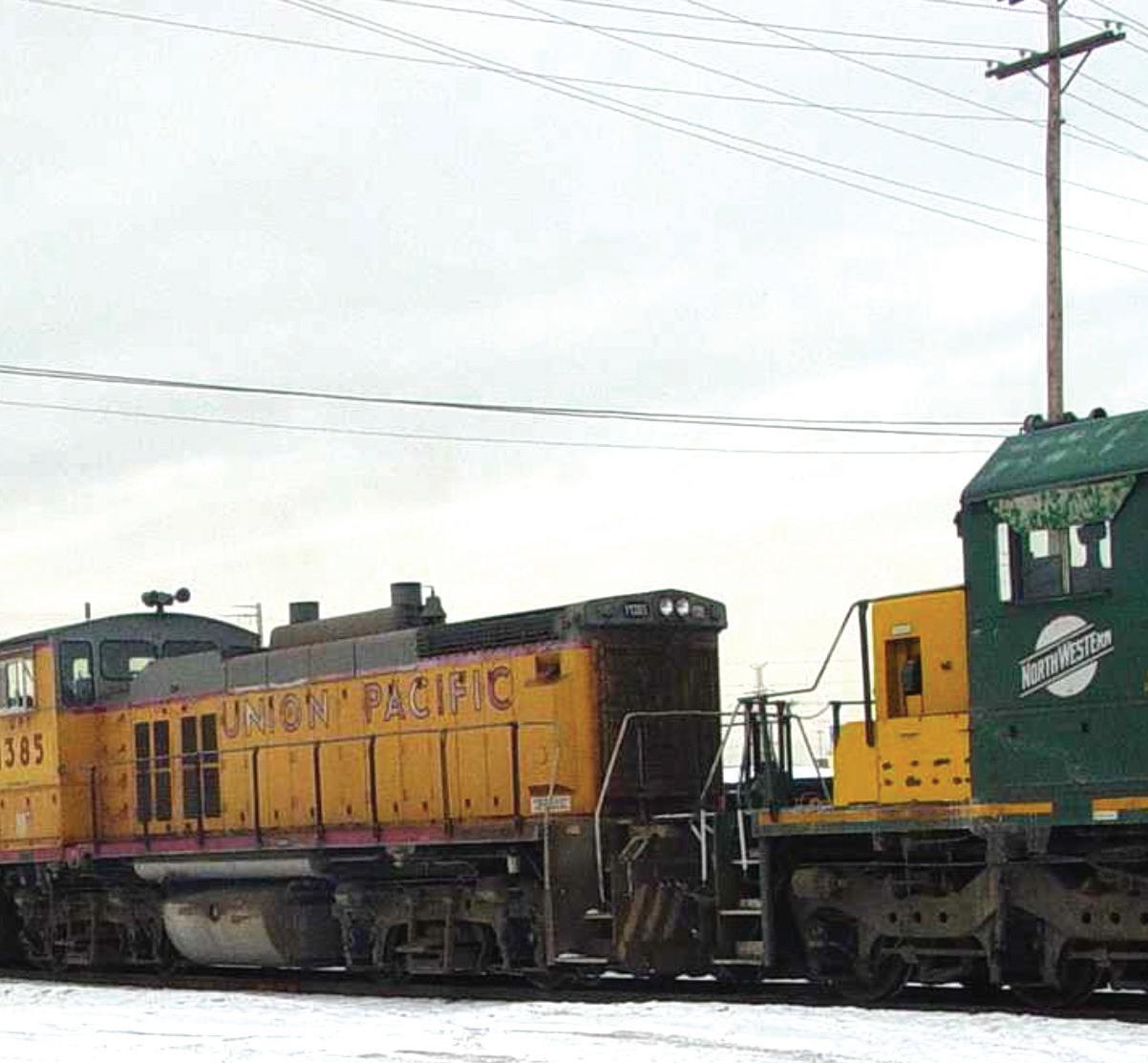
The industry has several issues needing closure:
1. There is no clear, concise and
76 Railway Age // September 2023 railwayage.com
TECH FOCUS – MECHANICAL
Michael Iden
published industry-wide definition or standard as to what are alignment control couplers and draft gear. (An AAR Standard and definition would be best; we don’t need regulatory language.)
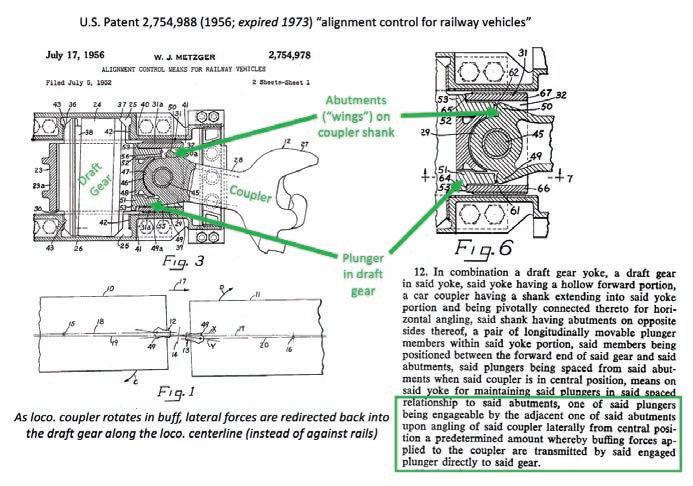
2. The AAR-Railinc Umler file showing characteristics of registered locomotives has a field B008 that can be marked “yes” or “no” for “equipped with alignment control,” but there is no definition of what qualifies as a “yes.” (The two older units in the 2023 derailment were incorrectly coded as “yes” when they had “stop blocks.”)
3. There is no uniform agreement between Class I’s, short lines and locomotive shippers regarding how non-alignment control locomotives can be safely moved.
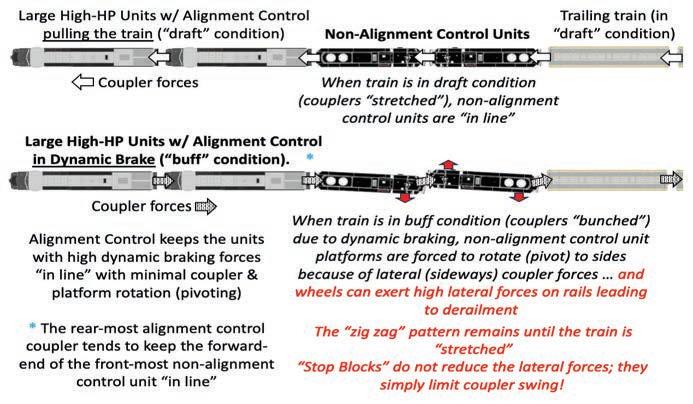
Again, there don’t appear to be many such accidents, but they’ve happened across decades and they continue to happen—a warning flag. Will FRA accident reports provide details? Sometimes, but not always, because (as derailment investigation expert Gary Wolf has mentioned) the FRA Derailment Cause Codes tend to be “multiple choice”; FRA codes don’t include a specific “non-alignment control locomotive” code, and those
who investigate derailments and decide on how to complete an FRA report may not be aware of this issue.
Before looking in detail at what are alignment control couplers and dra gear, let’s look at a typical derailment involving non-alignment control locomotives. What is a “locomotive jack knife” derailment and how do they typically occur?
These derailments typically involve one or more large, high-horsepower locomotives equipped with alignment control operating in dynamic braking, followed by one or more shorter locomotives, typically 4-axle commuter/passenger, roadswitcher or switcher units, either working,
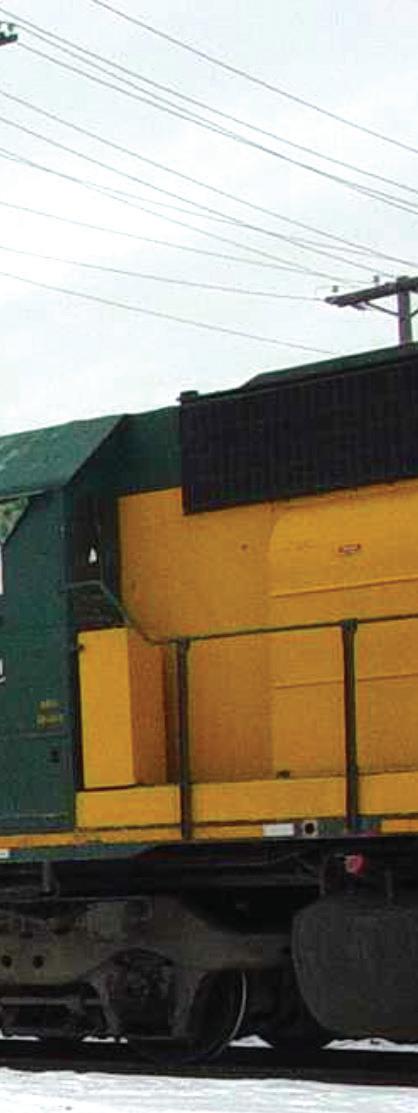
TECH FOCUS – MECHANICAL September 2023 // Railway Age 77 railwayage.com
Figure 1
Figure 2
isolated or shut down, and not equipped with alignment control couplers and draft gear. There is a freight train behind the non-alignment control locomotives.
The nine jack knife derailments I reviewed involved trains weighing between 4,512 and 17,201 trailing tons. Again, the key factors and the usual results: One or more short locomotives without alignment control couplers and draft gear, coupled behind larger units with alignment control in dynamic braking. The in-train forces were in “buff” (slack “in and bunched” against the locomotives), causing the non-alignment control couplers to “swing to the
side,” squeezing the shorter non-alignment control locomotives into a jack knife orientation, causing a wheel climb or a rail rollover derailment.
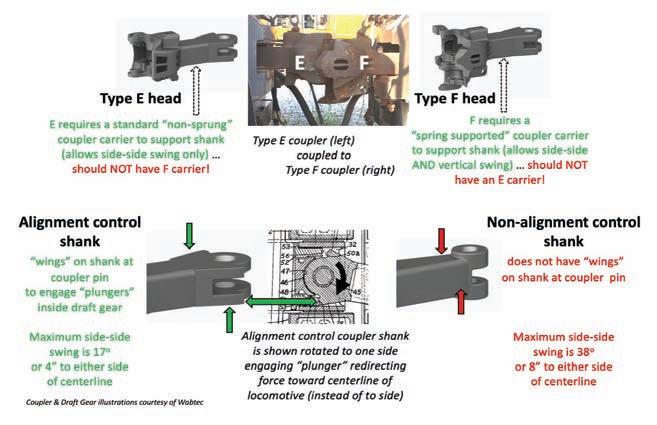
Why don’t freight cars exhibit this jackknifing tendency? Shorter locomotives tend to have greater distance from truck centers to coupler pins, creating unfavorable geometry.
Figure 1 gives a visual depiction (looking down from above) of what can happen when shorter locomotives not equipped with alignment control couplers and dra gear get into a “bu squeeze” between large locomotives in dynamic brake and the trailing tonnage of a freight

train. We’re looking at a train moving right to le having 2 large units pulling (top) or in dynamic braking (bottom), with 2 short non-alignment control locomotives trailing, followed by the freight cars.
As the dynamic brake (retarding) force on the head end increases, the buff force acting from behind increases, and the non-alignment control couplers on the shorter locomotives begin to swing laterally (to the side). While the front coupler on the first short locomotive is generally kept in line by the rear alignment control coupler of the second dynamic brake unit, the other three couplers will gradually swing laterally (often “jamming” against one side of their coupler pocket) and the non-alignment control locomotives will assume the “zig zag” pattern shown. This is known as “yawing” (rotating around a vertical axis). The non-alignment control locomotives will maintain this orientation unless and until the train goes into a “draft” or couplers-stretched condition. Why is this a derailment risk?
When short locomotives without alignment control assume the “in buff and yawed” configuration, the lateral coupler forces transmit down through the locomotive underframe and trucks, causing the wheels to press against the rail head, and that can lead to (1) a flange climb derailment or (2) a rail rollover derailment. Ever heard about a “high L/V (lateral over vertical)” derailment?
All that said, what should be de ned as “alignment control couplers and dra gear”? e answer can be found in U.S. patent 2,754,988 issued to William Metzger in 1956 (Figure 2) and assigned to a predecessor of the former National Castings. Expiration of the patent in 1973 has allowed several suppliers to produce and sell interchangeable alignment control couplers and dra gear for locomotives.
When the coupler rotates, an abutment or “wing” on the shank at the pin hole begins to press against a “plunger block” in the draft gear. As the draft gear is compressed (such as in dynamic braking), the draft gear resists the coupler’s rotation, limiting it to only 4 inches of swing to either side of the locomotive centerline. The coupler can never swing so far as to strike or come to rest against the sides of the coupler pocket. What would otherwise
78 Railway Age // September 2023 railwayage.com TECH FOCUS – MECHANICAL
Michael Iden
Figure 3
Figure 4
become a “side force” (coupler-to-coupler pocket) is redirected back into the draft gear parallel to the locomotive centerline. The AAR performed tests on the Rio Grande in 1954 verifying the reductions in coupler swing and lateral forces.
Figure 3 shows the two common types of freight locomotive couplers, type E (left) and type F (right). Type F is a “vertically interlocking” design (when 2 Fs are coupled) to better resist uncoupling in derailments. I have favored type F on high-horsepower locomotives since my management trainee days on Southern Railway (which used Type F couplers on all locomotives except switchers).
Figure 4 shows the shank of an alignment control coupler (le ) compared to a nonalignment control coupler (right). Note the “wings” on the alignment control shank, and look back to the patent drawing in Figure 2. My thanks to Wabtec for allowing me to use some of their coupler and dra gear illustrations.

Figure 5 shows an alignment control coupler about to be installed in an alignment control dra gear. If you are unsure if a locomotive has alignment control couplers and dra gear, the best veri cation is to safely move the coupler to either side of the locomotive centerline (using a coupler adjustment bar, for example). Alignment control limits coupler “swing” to only 4 inches to either side, and the shank should never contact the sides of the coupler pocket. Note that dra gear can accommodate E or F or E-only couplers.
Figure 5 goes to the heart of what alignment control does. e le drawing shows a Type E alignment control coupler with an alignment control dra gear; note it can only swing 4 inches (or 17 degrees) to either side of the centerline. e right drawing shows a Type E non-alignment control coupler and a non-alignment control dra gear; note it can swing as much as 8 inches (or 34 degrees) to either side of the centerline, with the shank striking the coupler pocket at maximum swing. Both diagrams are in the three TSB reports from Canada (R02C0050, R05C0082 and R10T0056).
A problem for owners of older locomotives (such as GP9s and SW switchers) is they were manufactured without alignment control couplers and dra gear (which became common at EMD and GE for all
high-horsepower units back around 1970; switchers were generally unequipped). You can have the locomotives modi ed, but retro tting alignment control couplers and dra gear is a fairly expensive modi cation. Can such locomotives still be moved safely with non-alignment control? I believe it is possible, but railroad operating practice experts need to examine my suggestion in Figure 6. Hopefully, an industry best practice or uniform policy could be the result.
What I’m proposing, shown in Figure 6, is that only one non-alignment control locomotive be moved per train, coupled between two high-horsepower units equipped with alignment control (the bottom con guration),
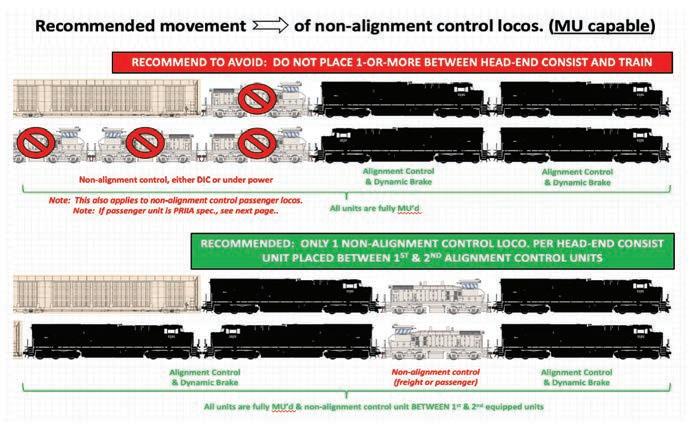
provided the older units have full multipleunit capability. Putting any non-alignment control locos between the high-horsepower locomotives and the train (the top con guration) should always be avoided. If the older unit lacks multiple-unit capability, the only option would be to place it at the extreme rear end.
We will see what the AAR Locomotive and Operating Practices Committees decide.
Know y Couplers and Dra Gear!
Michael Iden is a registered professional engineer and locomotive and technology consultant (Tier 5 Locomotive LLC), having previously worked at the Southern Railway, GM ElectroMotive Division, C&NW and Union Paci c.
TECH FOCUS – MECHANICAL September 2023 // Railway Age 79 railwayage.com
Figure 5
Figure 6
‘MICRO-LUBRICATION IS OUR BEST FRIEND’
The numbers prove out the benefits of zMAX application on RJ Corman Railroad Company locomotives.
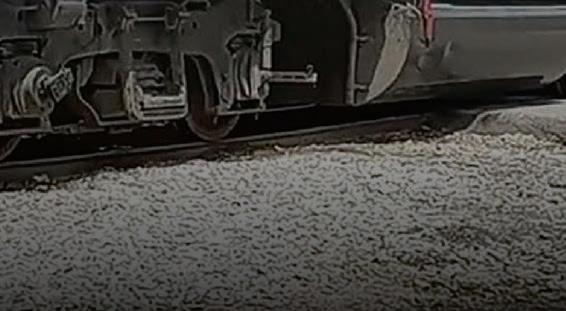 BY WILLIAM C. VANTUONO, EDITOR-IN-CHIEF
BY WILLIAM C. VANTUONO, EDITOR-IN-CHIEF
GP38-2 No. 5131 is, in many ways, a typical Class II or Class III diesel-electric locomotive. It’s a rebuilt unit acquired from a Class I, in this case, Norfolk Southern. But the four-axle workhorse, in RJ Corman Railroad Company’s distinctive red, grey and white livery, is atypical because its 2,000-hp, 16-cylinder EMD 645E prime-mover is treated with zMAX® microlubricant in the fuel and oil systems.
For the past year, 5131 and eight sibling GP38-2s, plus 11 EMD SD70s—all acquired from NS—have been operating with zMAX®. Soon, ve former CSX GP15s will receive the zMAX® treatment. e intent, RJ Corman Vice President Mechanical Todd Comer tells Railway Age, is to “maximize preventive maintenance, reduce power assembly failures, and cut down on exhaust stack res, which is not an
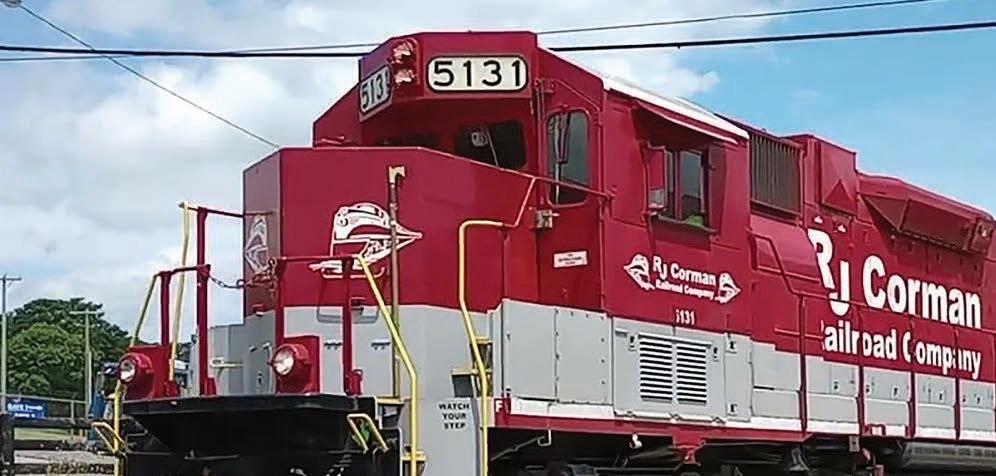
easy thing to do, because our locomotives typically run at lower throttle settings than linehaul units, increasing carbon buildup.”
Comer, following 30 years of experience at NS in the Mechanical department, joined RJ Corman in early 2022. He’s familiar with 5131, indeed, all the locomotives purchased from NS. A er seeing the results, he’s convinced of zMAX® bene ts. “I’m a big believer in this product, based on what we’re seeing in a short amount of time,” he says. “Prior to zMAX® treatment, we were experiencing as many as 10 exhaust stack res, which are a real concern in our rural operating territories because the embers can ignite trackside brush res. In the increasingly hot, dry conditions we’ve seen, res can easily spread. ey’re a safety risk as well as a nancial risk, because the nes can be quite he y. Since we started using zMAX®, we’ve experienced only one stack re. And
the numbers we’ve been seeing with static compression testing—improvements as high as 100 PSI (chart, p. 82)—have blown us all away. Micro-lubrication is our best friend.”
RJ Corman Railroad Company President Ray Goss, with 45 years’ experience (22 at Canadian Paci c, ve at Amtrak, and 15 at Genesee & Wyoming, among other assignments), concurs. “As Todd pointed out, our locomotives operate at constant low throttle notches,” he notes. “We’re bene ting from clean fuel injectors, which means improved fuel e ciency. e exhaust stacks are clean (before and a er photos, p. 82). Our 92- and 184-day inspections show that we’re getting positive results. For example, the air boxes are requiring little or no cleaning, because the ash deposits are so minor. zMAX® has been a blessing, and we intend to extend its use, based on speci c customer needs and where we believe RJ
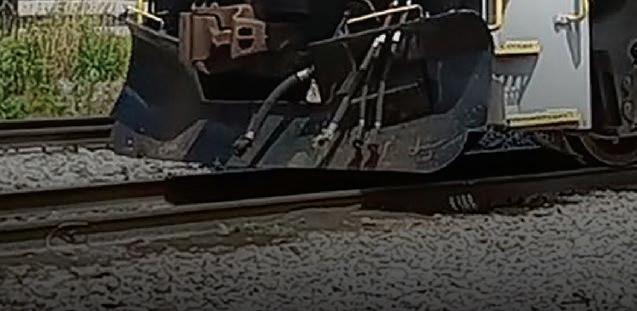 Corman
Corman
80 Railway Age // September 2023 railwayage.com
TECH FOCUS –
LOCOMOTIVES
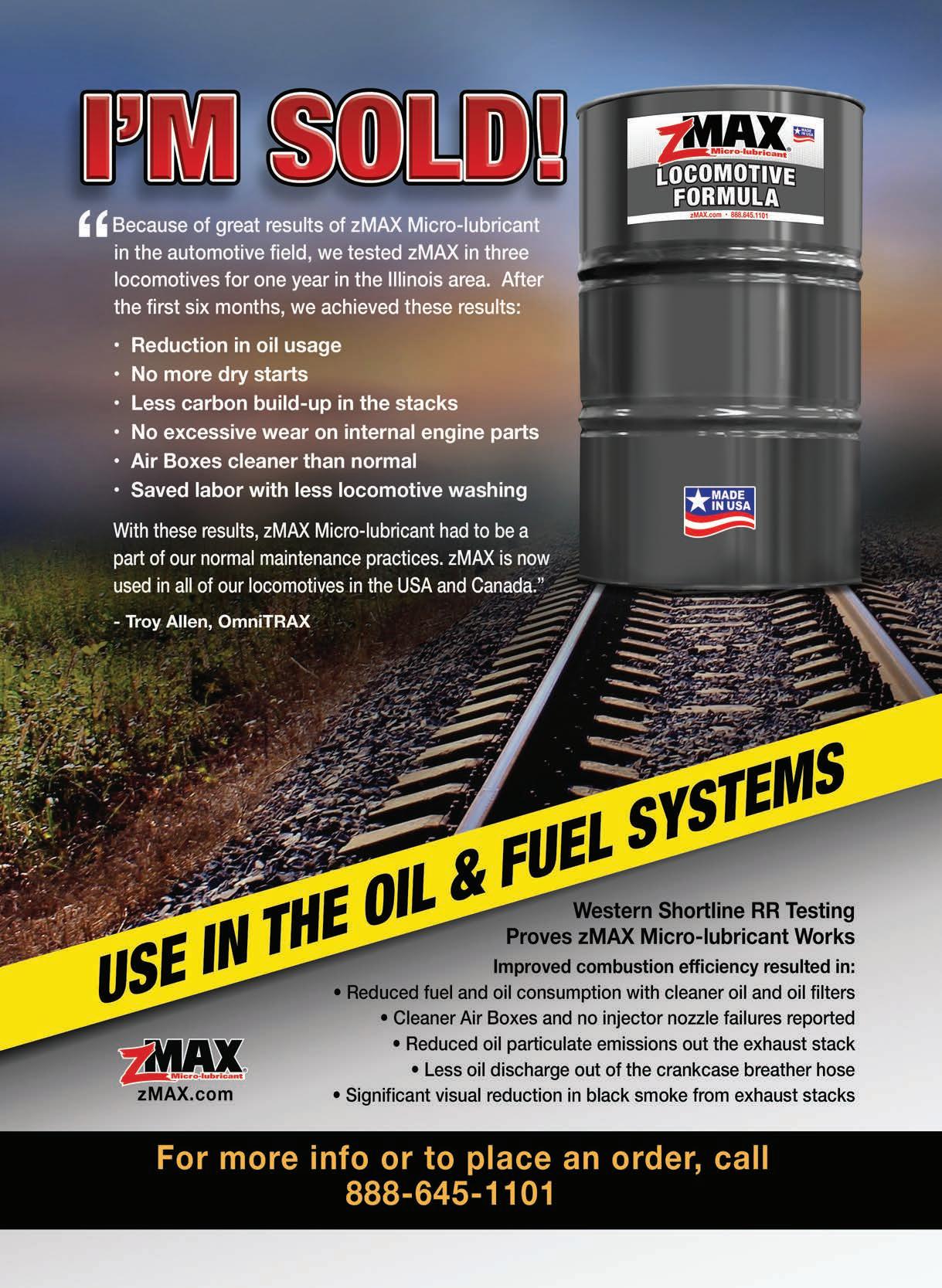
TECH FOCUS – LOCOMOTIVES
Using zMAX® improves combustion, which equates to increased horsepower and reduced fuel consumption. This chart shows the results from GP38-2 5131, prezMAX®, and post-zMAX®, after 92- and 184-day inspections. the risk factors are high.”
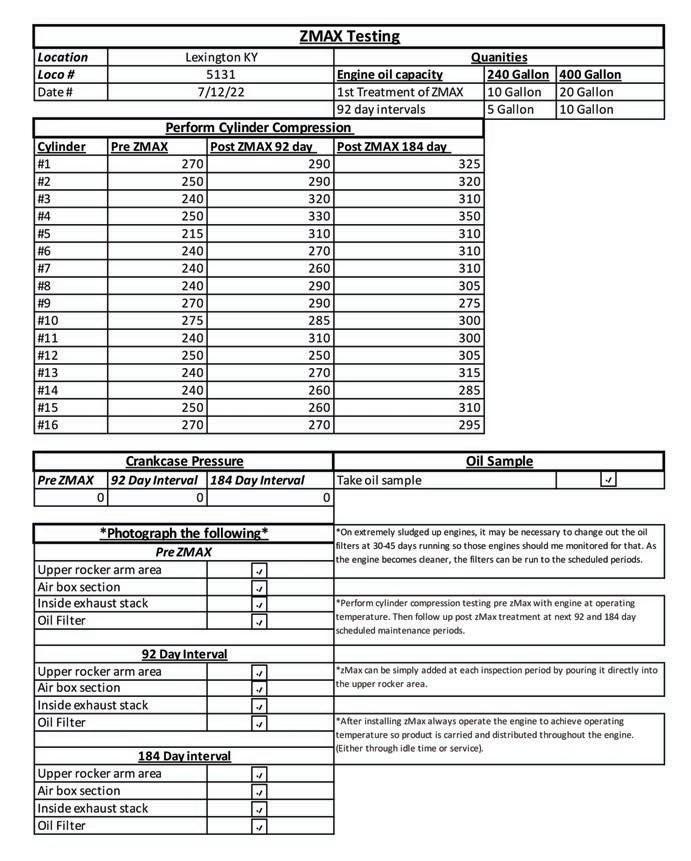
zMAX®, developed more than 75 years ago by motorsports engine-building icon Joe Lencki and originally named “Speedway Cocktail,” is not an additive. As described by manufacturer
Oil-Chem Research Corp. Chief Technical O cer Ed Rachanski Jr., zMAX® is produced with a proprietary reformation formula. “We start with highly re ned petroleum oil whose molecular structure is further re ned to create
a Micro-lubricant™,” he says. “zMAX® uses the engine’s lube oil as a carrying agent to reach the metal. Based on Auger Electron Spectroscopy, it penetrates into metal 82 times deeper than other lubricants. It keeps metal surfaces cooler and better lubricated to help fuels and oils do the job they were designed for. It cleans, lubricates and protects metal from the inside out, and disperses varnish, carbon and other harmful performance-robbing deposits.”
“zMAX® is not an oil additive or chemical,” Rachanski stresses. “It’s a pure petroleum product compatible with all motor oils, conventional and synthetic. Its molecules have been reformulated smaller than regular engine oil molecules. is allows its unique ‘micromolecules’ to soak into the metal. Ordinary engine oil additives can use materials like Te on®, PTFE, zinc phosphates, Graphite and MoS2 in an e ort to increase protection and lubricity. Based on SAE J357, a lubricant additive agent is ‘a material designed to enhance the performance properties of the base stock or to improve the base stock properties that do not naturally exist.’ zMAX® does neither, as it is not designed to improve or enhance any qualities of the engine oil. Introducing zMAX® into the engine oil is the means to transport it directly to the engine’s metallurgy.”
zMAX® “maintains the critical oil lm seal between the pistons, rings and cylinder walls, resulting in proper combustion sealing and reduced blow-by,” says Rachanski. “Proper combustion sealing increases horsepower. It reduces and stabilizes fuel and oil consumption. It reduces oil particulate emissions, black smoke (partially burned fuel) from the exhaust stack and oil puddles from the crankcase breather hose. In older engines, even those with silver bearings, it improves lubricity and reduces wear, dissolving and dispersing harmful deposits, helping to improve and maintain performance. In new or remanufactured engines, if used during assembly or at initial start-up, zMAX® will help maintain baseline performance throughout the life of the engine. In turbocharged applications, it increases cooling, reduces deposits, provides better heat dissipation at shutdown and helps improve turbo response.” During storage, a zMAX®-treated oil lm “stays on the metal, continuously protecting against rust and corrosion.”

RJ Corman Railroad Company is convinced. Who will be next to incorporate zMAX® into their locomotive eets?

82 Railway Age // September 2023 railwayage.com
Left: Exhaust stack on RJ Corman Railroad Company GP38-2 5131 before using zMAX®. Right: Using zMAX® improved combustion (less blow-by), resulting in lower lube oil consumption and a cleaner exhaust stack on 5131.
RJ Corman
MANAGING RISK OF FAILURE CAPACITY AND DEMAND EXTREMES:
Welcome to “Timeout for Tech with Gary T. Fry, Ph.D., P.E.”
Each month, we examine a technology topic about which professionals in the railway industry have asked to learn more.
is month we focus on managing the risk of failure of engineered components.
I am o en asked about the methods engineers use to mitigate the risk of failure of systems that we design and manufacture.
To begin, it is important to know that there are two distinct phases of “system life” to consider: Phase 1—ensuring an acceptably low risk of failure of a brand-new system and Phase 2—ensuring an acceptably low risk of failure of an operating system in service.
Phase 1 is the culmination of system planning, design, and manufacturing activities. Phase 2 comprises sustained support of the system in service and includes four activities:
By Gary T. Fry, Ph.D., P.E., Vice President, Fry Technical Services, Inc.
(a) data collection through system inspection and performance monitoring; (b) data-driven evaluation of system safety and functional adequacy—i.e., tness for service; (c) system owner’s strategic planning and decisionmaking protocols; and (d) system owner’s deployment of resources for system maintenance, repair, retro t, and/or replacement.
Both phases usually include statistical analyses to determine a system’s tness for service.
In general, an engineered system fails whenever the demand placed on the system exceeds its capacity. Alternatively, we could de ne failure as occurring whenever the capacity of a worn system falls below the demand required of it. erefore, a key part of any tness for service assessment is to estimate the system’s current, in situ capacity and to estimate the demand placed on the system. If, by an acceptable margin, the system’s estimated capacity exceeds its estimated demand, the system is deemed “ t” for service. If not, the system is
prioritized for remediation.
As a concept, tness for service is logical and intuitive. But there are nuances in the details that deserve more discussion. Here, we will focus on the terms estimated capacity, estimated demand, and acceptable margin. When a capacity or a demand is provided as an estimate, rather than as an exact number, some uncertainty is involved. ere exists some range of values within which the estimate falls. So, one way to approach the issue is to use estimates for the averages of capacity and demand. If the average capacity exceeds the average demand by a comfortable margin, one might argue that the system is t. ough this might seem to be a legitimate strategy, it is not a recommended approach because it can lead to undesirable consequences. To understand why, refer to Figure 1 (above).
Figure 1(a) is a photograph of a pot of
water. Figure 1(b) is a photograph of a pot of icy water. Let’s consider this range of water
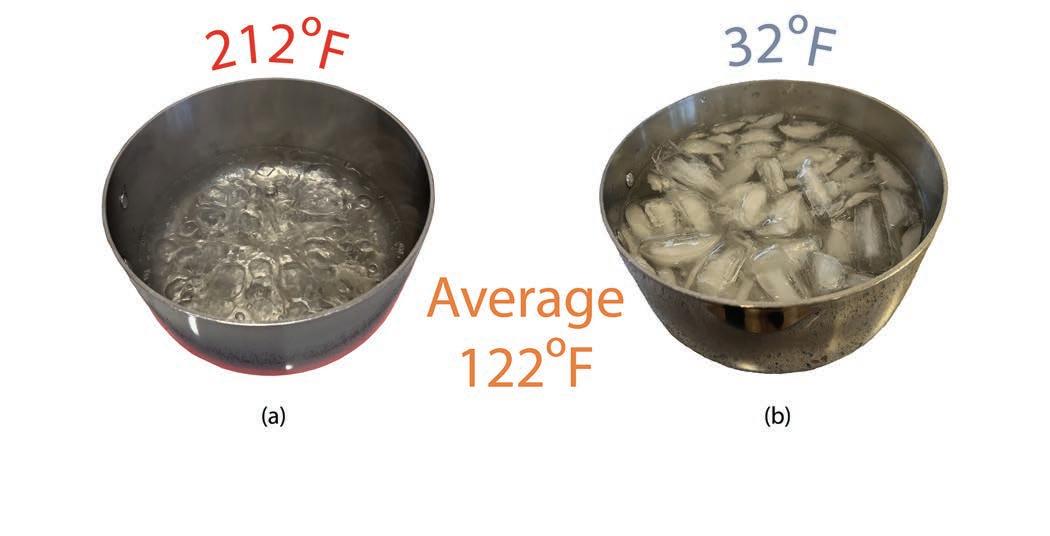
September 2023 // Railway Age 83 railwayage.com TIMEOUT FOR TECH
Gary T. Fry
boiling
Figure 1. I’m at risk of serious injury placing one hand in boiling water (a) and the other in nearly freezing water (b), even though on average my hands would just be uncomfortably hot at 122 degrees. Mitigating the failure risk of engineered systems responds to similar concerns in that we must assess outcomes from the least favorable capacity-demand interactions rather than the average interactions.
Figure 2. Effects of variance on risk of failure. In these two charts, only the variance of capacity and the variance of demand have changed. The meanvalues follow the same traces in both charts. Yet, the probability of failure has clearly improved with a reduction to the variances .
temperatures as an example of demand. We can estimate that the average demand might be 122 degrees Fahrenheit. Now consider that the system under that demand is my bare hand performing a service that requires it to be submerged periodically for two seconds.
e 122-degree average demand is hot for my skin, but it’s tolerable for at least six seconds—three times as long as required. Even with this “factor of safety” of three, however, I should not conclude that my bare hands are t to serve in this scenario. Simply put, the average demand does not reveal the possibility of boiling hot water at the extreme end, which will cause serious burns in less than a second. is simple example illustrates clearly why tness for service determinations cannot rely on average capacity and demand values.
Instead, minimum capacity and maximum demand extremes must be managed over the full life of an engineered system. For example, when a new engineered system is placed into service (Phase 1 of the system’s life), the planning, design, and manufacturing processes are established to provide a high con dence level that the extreme values of capacity and demand will interact desirably. In fact, there are usually international standards, speci cations, codes of recommended practice, and local jurisdictional requirements that a ect, and even de ne, the quantitative relationships between capacity and demand of a newly minted system.

It is most o en during Phase 2 of the system’s life, under the e ects of normal wear and tear, which o en includes
fatigue damage accumulation and possible increases to the demand environment that systems present with increased risk of failure. And it is the policies and procedures of the systems’ owners that determine the extent to which the risk of failure increases. Notably, two identical systems that are exposed to identical service environments but are managed by two di erent owners may develop di erent risks of failure over time that re ect the di erent owner’s policies and procedures—particularly those described as Phase 2(c) and Phase 2(d) earlier.
For example, consider Figure 2 (above) Figures 2(a) and 2(b) illustrate the capacity and demand statistics for two identical inventories of systems—each managed by a di erent owner. In each case, the inventories experience relatively constant ranges of demand against capacity ranges that vary substantially over time. Each gure illustrates a representative window of Phase-2 inventory performance as its systems experience expected deterioration, such as fatigue defects in railway wheels and rails.
e gures also illustrate the e ects of periodic repairs and/or replacements over routine maintenance intervals. e owners observe failures whenever the capacities of the weakest systems in their inventories fall below the peak demands.
It is very important to note that the capacity and demand ranges are smaller in Figure 2(b). At all times, however, the average capacities in Figures 2(a) and 2(b) are identical to one another and remain well above the average demands, which are also identical between the
two gures. e only di erences between the two gures are the ranges of values for capacity and demand.
To build their inventories, both owners purchased the same systems from the same suppliers. Subsequently, they managed their inventories di erently. e owner of the inventory illustrated in Figure 2(b) maintained it in such that capacity and demand ranges were smaller, thereby achieving a substantially lower probability of failure than the owner of the inventory in Figure 2(a).
e takeaways are these.
• Failures of engineered systems generally occur during Phase 2 of the systems’ life cycles. e usual failure scenario occurs when a weaker-than-average system is subjected to a higher-than-average demand.
• System management policies that maintain capacity and demand ranges within target bandwidths can e ectively control system failure risks by limiting the most disparate extreme value interactions between capacity and demand. In doing this, the weakest components in service are less weak and the highest demands in service are lower. is is true even when average capacity and demand values do not change.
Dr. Fry is Vice President of Fry Technical Services, Inc. (https://www. frytechservices. com/). He has 30 years of experience in research and consulting on the fatigue and fracture behavior of structural metals and weldments. His research results have been incorporated into international codes of practice used in the design of structural components and systems, including structural welds, railway and highway bridges, and high-rise commercial buildings in seismic risk zones. He has extensive experience performing in-situ testing of railway bridges under live loading of trains, including high-speed passenger trains and heavy-axle-load freight trains. His research, publication, and consulting have advanced the state of the art in structural health monitoring and structural impairment detection.

84 Railway Age // September 2023 railwayage.com TIMEOUT FOR TECH
Gary T. Fry

EMAT UPDATE
By Anish Poudel, Ph.D., Principal Investigator II – Nondestructive Evaluation, MxV Rail
MxV Rail continues to investigate innovative alternative in-motion wheel inspection technologies that could be used to detect and characterize internal fatigue cracks in the wheel rim while the wheels are in service. Unlike rails, railway wheels are not ultrasonically inspected for internal cracks/
defects a er the accumulation of tra c. However, nding both internal wheel cracks and internal rail head defects is important—a broken wheel derailment can be just as impactful as a derailment caused by a broken rail.

As part of the investigation, MxV Rail has been facilitating the development of an electromagnetic acoustic transducer (EMAT) nondestructive evaluation (NDE) technology
that could be used to detect internal subsurface fatigue cracks in wheel rims. Because the ultrasound is generated directly within the material adjacent to the EMAT transducer, the EMAT systems being developed do not require a liquid couplant (consumable) between the transducer and the wheel.
e developed EMAT system utilizes guided surface acoustic waves, speci cally

86 Railway Age // September 2023 railwayage.com MxV Rail
A magnetostrictive EMAT sensor, mounted on the field side of a notched rail, induces SH waves in a passing wheel tread, looking for internal subsurface fatigue cracks.
shear horizontal (SH) waves, rather than the bulk ultrasonic waves generated by other automated cracked wheel detector systems (ACWDS). e SH waves are a form of guided waves that are polarized in-plane to a sample surface. e SH wave particle motion is parallel to the surface plane of entry and perpendicular to the direction of propagation, and SH waves o er the best potential for inspecting wheels in motion.
However, recent tests found that noncontact Lorentz force EMATs (one of the mechanisms used to generate SH wave modes) su ered from a low signal-to-noise ratio (SNR) due to wheel surface conditions (deformed or the cold working layer). In addition, the wheel ange also interfered with the magnetic pole, thereby limiting the sensor dimensions and restricting the practicality of this approach for real-world applications.
e inability to penetrate the wheel surface and get reasonable detection resulted in the exploration of a magnetostrictive EMAT approach with a highly magnetostrictive strip (patch) applied to the top of the coil near the point of wheel/rail contact. e resulting sensor
is robust and appears well-suited for industrial applications. e EMAT coil generates the ultrasound on the strip that will subsequently be transferred into the wheel tread. An order of magnitude improvement of SNR was achieved with this approach, but it was obtained at the cost of losing the noncontact nature.
A prototype magnetostrictive strip-based EMAT system with a test wheel rolling over a 10-foot panelized track was built and installed in a laboratory environment.
e system detected at bottom hole (FBH) calibration re ectors and found previously known and unknown natural fatigue subsurface cracks in several test wheels with an excellent SNR (greater than 4:1 in all cases). e research team estimated that a theoretical maximum inspection speed of 34-38 mph could be achieved with three continuous ultrasonic pulses ring at each contact point. Di erent wavelengths can also be added to the sensor coil to achieve a variable wheel rim depth coverage. A total of ve to six sensors per rail would be required to provide complete wheel circumferential coverage (each sensor would cover ±90
degrees on the wheel) and to accommodate cars with di erent truck wheelbases.


e EMAT technique being developed has several unique advantages: the ability to 1) use a limited number of stationary rail-mounted probes to inspect a 2-inch-wide band of wheel tread, 2) avoid extensive foundation work for the revenue service-type environment, and 3) prevent the necessity for a liquid couplant. e system’s performance regarding various wheel surfaces and wear conditions, gage clearance, and lateral wheelset position will be addressed in future studies. An understanding of the survivability of the sensors/assembly and notched track in a typical railroad environment is also crucial.
Several tests of the prototype system are currently ongoing at the MxV Rail facility to 1) understand the e ect of heavy axle load trains and various wheel pro les and surface conditions over the sensor assembly and 2) evaluate the performance, longevity, and various manufacturing details before combining e orts for the development and deployment of a system by an established NDE supplier.
WorkSiteTrainingCourses:
Locomotive:
• GE7FDLDieselEngineMaintenance
• TestingandTroubleshooting26-Type LocomotiveAirBrakeSystems
• LocomotivePeriodicInspectionand FRARulesCompliance
• LocomotiveElectricalMaintenanceand Troubleshooting
• LocomotiveAirBrakeMaintenanceand Troubleshooting
• DistributedPowerMaintenanceand Troubleshooting
• DistributedPowerOperations,Training,and OperatingRules
FreightCar:
• FreightCarInspectionandRepair
• SingleCarAirBrakeTest
• FRAPart232BrakeSystemSafetyStandards forfreightandothernon-passengertrains
• TrainYardSafety

Track:
• TrackSafetyStandards
September 2023 // Railway Age 87 railwayage.com MxV RAIL R&D
CORRESPONDENCETRAINING•WORKSITETRAINING TheRailway EducationalBureau TheRailwayEducationalBureau 1809CapitolAve.,OmahaNE,68102 TollFree(800)228-9670•(402)346-4300 www.RailwayEducationalBureau.com MyEmployeesdon’t havetimefortraining.
FlexibleScheduling. Anytime.Anywhere.
1_2pgHorzWrkStTraining2016.qxp_Layout 1 8/17/16 3:25 PM Page 1
Frank N. Wilner, a Railway Age colleague and Capitol Hill Contributing Editor, has researched and extensively footnoted the economic growth and then the shrinkage of our nation’s railroad system. Here, Wilner focuses on the people that were involved in overseeing that giant railway network as “regulators.” It is a timeline documentary.
This long-time rail economist/engineer found that, through my lens, Wilner’s book actually offers those now in charge a checklist of problems vs. opportunities to possibly reshape and re-energize this bricks-and-mortar transportation mode into an improved freight service industry for our public use as receivers and shippers.
Reflecting and integrating with what I have learned during five decades, here’s the company I place Wilner in now after absorbing his admittedly somewhat “dry” regulatory work: He is, with this work, “our” mentor.
It’s hard to manage the options of improving any enterprise or organization if you can’t understand what the problems
and past choices have done to create this business competition morass. Wilner gives us that perspective in the book.
I’ve been blessed by other mentors in my long rail career. There have been lessons learned from many mentors, from Jim Hagen to Jim McClellan and John Williams. From Stanley Crane to David LeVan. And from rail sector engineers like Lou Thompson and Dr. Allan M. Zarembski. From supply chain leaders like Dr. Kant Rao and Marvan Manheim, and from fellow economists/financial reviewers like Chris Rooney and Steve Ditmeyer. From marketing experts like Prof. Bill Black and Kel Kavanaugh. A diverse, skilled group, with (sadly) quite a few left off my list in order to be brief.
Now I add Frank Wilner to this list of teachers. His documented evidence about the regulatory side of the railroad business is welcomed and appreciated.

To those looking daily to improve as managers and overseers, this book is a well-documented series of citations, giving the younger generation coming up behind us now a commercial/political perspective of how history often gets shaped behind the curtain of building fronts. It’s an insider’s view of smokefilled rooms, in some instances.
The narrative identifies how we got to our nation’s current railroad commercial status. There is overwhelming detail in the book—so much detail that perhaps a searchable PDF file version of Wilner’s labor would be a functional reference to the generation that is now going to oversee regulatory decisions. Particularly important is that most of us recognize that the railroad sector has been losing its relative market share position.
Wilner’s account lays out the minefield yet to be cleared. In part, he has written an essential combat mission manual, but one that is intellectual and interpretative reading. That’s what I conclude is the value he delivers. It’s not surprsing that threetime Pulitzer Prize winning investigative journalist Walt Bogdanich of The New York Times wrote of Wilner in 2009, “When researching the railroad industry, any investigative journalist that doesn’t start with a phone call to Frank Wilner is making a big mistake. He shoots straight and he knows the industry inside and out.” In a 1996
Supreme Court decision, Justice Clarence Thomas cited Wilner’s writing three times
In part, Wilner offers us a review of the historical geopolitics used for regulatory oversight, about various roles at different times played by some powerful people, and the characteristics of the institutional relationship networks as “the regulators came and went” as appointed persons.
The Interstate Commerce Commission (now Surface Transportation Board) appointment process since 1887 has often displayed a more protective umbrella-like role for the delegated persons rather than an openness by her or him toward rail service improvement or commercial experimentation. Relatively few leaders over the past 136 years have offered ideas that might “freshen up” the performance of the industry they were appointed to regulate. Yes, there are always some exceptions, and Wilner singles out many, some by way of footnotes.
Wilner couldn’t document too many instances where the appointment method to the ICC/STB brought forward modernday logistics management (supply chain) educated staff or voting commissioners. Yes, again there are exceptions.
But the most stunning historical reminder to this old railroad guy was the cartoon image of the revolving door on page 362 (Appendix G)—something over my long rail career I had not considered as “roadblock” behavior. I was a bit naive. In 2023, is this still the appointment pattern? Maybe less so.
This image marks a different definition of “serve and protect.” It seems like a type of isolation, in contrast to worldwide supply chain organizations that are openly reengineering their business models. Somewhat disturbing is today’s less and less relevant rail freight market share vs. trucking. Sadly, today’s STB is increasingly discussing the fate of a shrinkingmarket-share industry. Do they understand that? This relative shrinking has got to be frustrating to all the participants.
Wilner selectively documents experimentation with ratemaking, cost allocation budgeting and discriminatory pricing across the 136-year history of U.S. railroad regulation. The standout characteristic? To this economist, it appears as if it’s
88 Railway Age // September 2023 railwayage.com
BOOK REVIEW
Railroads & Economic Regulation: An Insider’s Account. By Frank N. Wilner. Simmons-Boardman Books, www. transalert.com cgi-bin/details. cgi?inv=BKRER&cat=18. 398 pp. $69.00
taking place within an academy, where highly argumentative debates occur within a very legalistic decision-making group. It feels like a very time-consuming procedural process—no rapid changes, as the markets they watch over shift at a much more rapid pace. Not experimental. Not part of STB DNA. There really hasn’t been active deliberation within as to how to competitively respond to the now dominant highway truck business competition, but there has at least been an awareness.
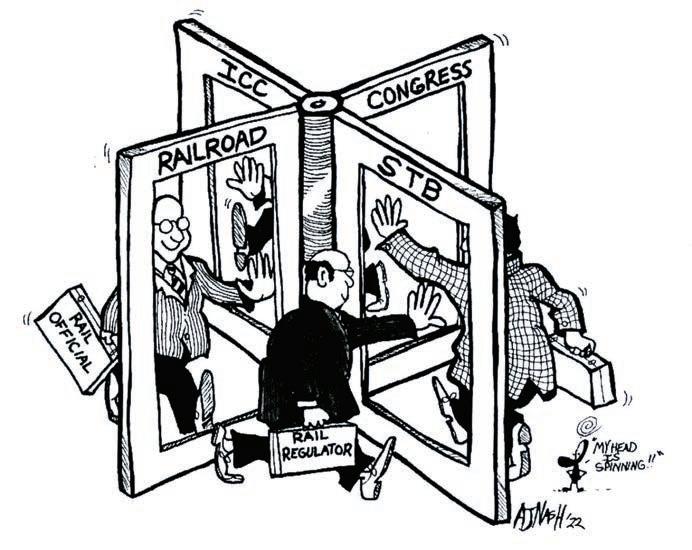
There were some extraordinary changes afoot during the 1960s and 1970s, such as the 3-R Act and 4-R Act that created Conrail from the ashes of the Penn Central and six other bankrupt Northeastern carriers. The Rock Island and Milwaukee Road financial situations did result in creative change. But these changes largely bypassed an ICC role. The regulatory rate and other business process changes allowed by the 1980 Staggers Rail Act came principally from outsiders like Rep. James Florio from New Jersey, who led the effort—resisted, as I interpret Wilner’s detailed references, by some more used to the revolving-door ICC environment. He does document some of the exceptions, providing, therefore, important historical fact checking.
Let me quickly share a few tidbits hidden in the 398 pages.
Wilner describes how some appointed leaders rose to prominent positions and offered new insights. Here are a few of my favorite “fun facts.” How many of these do you know about?
In 1944, a Board of Investigation and Research estimated that the total of federal land grants to railroad companies only amounted to about 130 million acres. The ability of those early railroads allowed them to sell off small tracts to help finance new track construction. But the total income from those land grants helped fund fewer than maybe 19,000 miles of the eventual 254,000-mile national network at its zenith. That’s a mere ~7% of the eventual high point of rail track coverage by the year 1916. Statistician and economist Bill Behling was the author of that report.
To receive that federal aid, the landgrant railroads (like Union Pacific) were
required to carry U.S. government cargo at a 50% discount to the then-prevailing rail rates until 1945, through World War I and World War II. What a great commercial deal for the taxpayer that was, I conclude.
Overbuilding resulted in way too much carrying capacity. In 1900, reports circulated that “the then-existing railway lines were capable of transporting twice or thrice the tonnage” than being offered by shippers. Rates started to drop as carriers struggled to obtain a critical mass of the traffic for their lines. The financial strength of the railroad companies faltered. Bankruptcies eventually took place—and abandonments followed.
President Grover Cleveland signed the legislation creating the ICC on Feb. 4, 1887. While not in favor of regulation as an investor, even William H. Vanderbilt of the mighty New York Central had to agree to support the ICC regulatory legislation.
The future of rail passenger service might have early on been projected by none other than Amelia Earhart. Wilner cites her from a 1930 address to a group of railroad attorneys. She said, “I don’t see why the railroads don’t just hand over their [long-distance] passengers [to
the airlines].”
As Wilner reminds us, 41 years later, Steve Goodman wrote these haunting lyrics:
“Fifteen cars and fifteen restless riders. Three conductors and 25 sacks of mail. This train got the disappearing railroad blues. Good night, America, how are you? Don’t you know me? I’m your native son. I’m the train they call the City of New Orleans. I’ll be gone 500 miles when the day is done.”
Perhaps my favorite citation offered by Wilner is this statement by Fortune Magazine’s Mina Kimes. In 2011, she asked if the U.S. freight railroads were more of a cartel or a free-market success story. A rebirth, like a longing in the Dark Ages for a return to the magic times of Rome and ancient Greece? A different way of wishing for a Renaissance, or a modernization as something new? Frank Wilner captures that historical perspective about the regulated railroad sector. It’s best said with this one quote from his book:
“In most industries, rising profits are cause for celebration. In the railroad business, they are a touchstone for controversy.”
Still the case in 2023?
—Jim Blaze
September 2023 // Railway Age 89 railwayage.com BOOK REVIEW
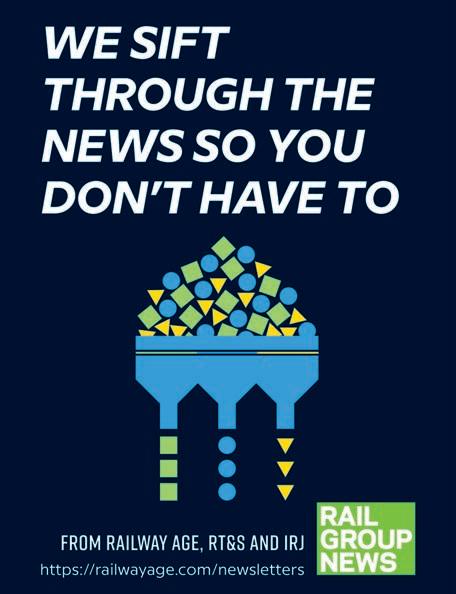
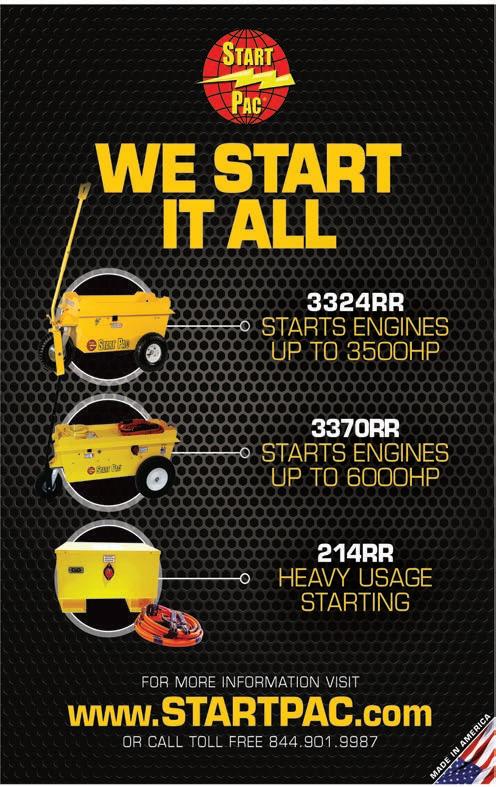
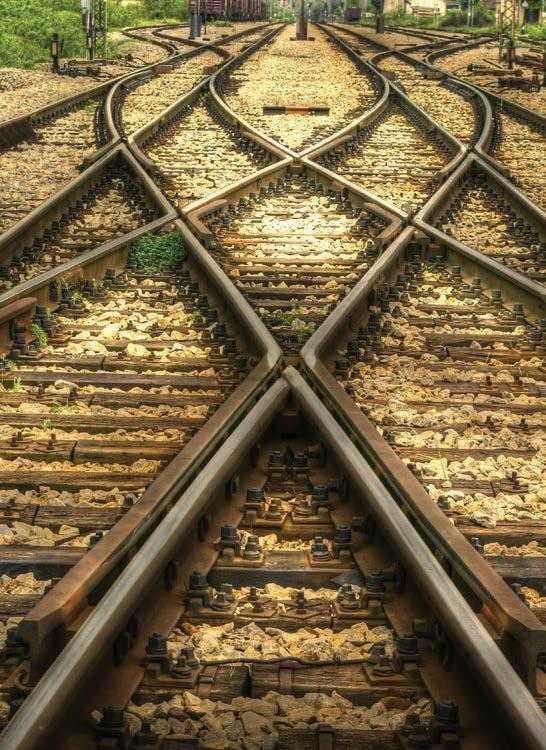




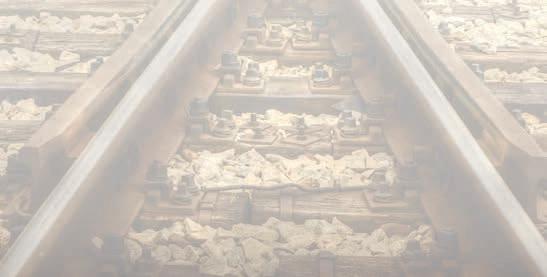


90 Railway Age // September 2023 railwayage.com RECRUITMENT EQUIPMENT SALE/LEASING Edna A Rice Executive Recruiters SPECIALISTS IN RAIL AND TRANSPORTATION RECRUITING SINCE 1988 713-667-0406 www.ednarice.com LEARN MORE
RAILWAY
RELAM
SALCO PRODUCTS INC
SIEMENS MOBILITY INC
STAR HEADLIGHT AND LANTERN
STRATO INC
THERMON INC
TRAINYARD TECH LLC
TRILOGICAL TECHNOLOGIES LTD
TRINITY RAIL
VOESTALPINE NORTRAK INC
WI-TRONIX LLC
WOMEN IN RAIL
WVCO RAILROAD SOLUTIONS
ZMAX
September 2023 // Railway Age 91 railwayage.com Ad Index 81 The Advertisers Index is an editorial feature maintained for the convenience of readers. It is not part of the advertiser contract and Railway Age assumes no responsibility for the correctness. COMPANY PHONE # URL/EMAIL ADDRESS PAGE # 917-972-3490 312-922-45161 608.877.9900 561-743- 7373 18567704331 816-901-4038 212-620-7200 737-471-6466 212-620-7200 201-825-0300 757-543-3526 570-883-7005 265-505-6402 763-972-2200 402-346-4300 770-335-9273 630-685-4661 800-SIEMENS 585-226-9500 732-317-5406 612-434-5354 724-443-8881 972-3-9509888 800-631-4420 307-778-8700 630-679-9927 212-620-7200 541-485-9621 704-455-327 BusinessInquiry.Americas@aecom kskibinski@amstedrail.com katie@dairyland.com SBolte@danella.com laura.falcon@us.frauscher.com Natalie.cornell@hatch.com amcclain@hrsi.com www.railwayage.com Jenny.bowen@marmonrail.com www.railwayage.com info@okonite.com plasseramerican@plausa.com Sales@PowerRail.com info@progressrail.com sales@rwy.com bbrundige@sb-reb.com jroberts@relaminc.com sales@salcoproducts.com www.USA.siemens.com str1889@aol.com korozco@stratoinc.com Joe.Ashley@Thermon.com cra2@zoominternet.net ta:anav@trilogical.com trinityrail.com gord.weatherly@voestalpine.com hannah.tadey@wi-tronix.com www.railwayage.com/womeninrail wvcorailroadsolutions@wilvaco.com cajohnson@zmax.com 63 17 7 68 49 69 48 19 58-59 23 64-65 3 25 51 C4 50 57,87,C3 27 29 61 52 53 21 47 9 14 11 46 12-13 C4 81 ALSTOM AMSTED RAIL GROUP CUMMINS INDIANPOLIS DISTRIBUTION DAIRYLAND ELECTRICAL INDUSTRIES DANELLA RENTAL SYSTEMS FRAUSCHER SENSOR TECHNOLOGY HATCH LTK HERZOG LIGHT RAIL MARMON RAIL LEASING/RAILSERVE NGTC OKONITE CO PLASSER AMERICAN CORP POWERRAIL INC
CATERPILLAR
PROGRESS RAIL A
CO RAILWAY EQUPMENT CO
EDUCATIONAL
BUREAU
Financial Edge
It’s Tough to Run a Railroad
the split caused a 20% pop in the price of UP stock. While the stock has given back some of those gains, it was an eyepopper during a time period while railroad stocks have mostly been languishing through 2023.
Mr. Fritz was an oft beleaguered figure and leader. He was a lifetime railroader who occasionally couldn’t get the massive railroad he ran out of its own way. It was a topic occasionally covered and discussed by “Financial Edge.”
It has been a tough summer for North American rail. There’s the ongoing scrutiny of potentially intimidating practices of the railroads against whistle blowers. Then there’s the continued languishing pace of freight levels, which halfway through the year continued to be weighed down by intermodal contraction. There’s the additional intermodal loadings pressure potentially originating in U.S. attempts to decrease reliance on China as its importer of choice. There are service disruptions related to tropical storm Hilary’s aftermath. There is the ongoing scrutiny of the post-East Palestine derailment cleanup.
That is quite a burden to be carrying through the hot summer months. One other news item that grabbed its share of the summer headlines is the end of the Lance Fritz (pictured) era at Union Pacific. The actual transition happened quietly on Aug. 14. As noted in Railway Age, Mr. Fritz’s job as Chairman, President and CEO was split into three positions: Chief Executive Officer and member of the Board, President, and Chairman of the Board.

So what’s in a name? Or rather, what’s in a title? The July 26 announcement of
The proof is in the stock price (or as Bill Parcels might say, you are what your stock price says you are). At the 2023 Rail Equipment Finance Conference, Jose Liberti (REF 2023’s opening Keynote Speaker) mentioned that from 2009 to 2021, UP returned investors a whopping 763%. Mostly, that return happened between January 2009, when UP was as low as $18.77 a share, up until February 2015, when UP stock was as high as $124.52 a share. February 2015 was the beginning of Mr. Fritz’s tenure as President and CEO (his role as Chairman started in October 2015). In the period from February 2015 until August 2023, UP returned investors roughly 72% while CSX returned investors 203% and Canadian Pacific returned investors 130%, the math on the latter being slightly askew if one was a shareholder of Kansas City Southern pre-merger.
More impactful perhaps is the downside: Railroad stock prices had a nearterm peak in April 2022. Compared to that peak (and prior to its executive change), UP was down 26%, CSX 10% and CP 2%. CSX changed its chief executive in September 2022 and CP pulled together what may be the last Class I merger of your erstwhile correspondent’s lifetime. (NS changed CEO in May 2022 and CN changed in February 2022.)
This is not to suggest that Mr. Fritz was ineffective in his role at UP. Nor does it suggest that the trio of Mike McCarthy, Jim Vena and Beth Whited is or will be, as a result of a bump in the stock price, any more or less successful. The suggestion here is quite to the contrary.
Perhaps the board of directors should have split Mr. Fritz’s role earlier in his tenure rather than waiting to do so upon his retirement. UP’s splitting of Chairperson and CEO (and President) is following a corporate trend that has been gaining momentum for some years. Outliers to the separation movement are Bank of America (probably the largest remaining) and Microsoft (which combined the roles in 2021). While precise return-related data is difficult to come by, some evidence suggests that under stressful circumstances, splitting the Chairperson and CEO roles improves corporate focus and stock prices.

UP has been the target of customer complaints (and litigation) and regulatory scrutiny, most especially during the last years of Mr. Fritz’s tenure. The railroad’s board might have done well to make this decision when the STB began to more aggressively question all the U.S. railroads’ commitment to service rather than waiting until Mr. Fritz’s retirement.
An earlier decision would have sent a message to the industry that UP was viewing its customer and STB Chairman Oberman’s scrutiny with appropriate gravitas. Instead, their recent decision leaves shareholders and customers wondering whether the reason to ask, “What took you so long?” relates to Mr. Fritz’s performance or to the board of directors lacking a clear vision about UP and its role in the market. Lance Fritz deserves a better sendoff and legacy than the message the board has delivered as he is hanging up his hardhat and steel-toed shoes.
Got questions? Set them free at dnahass@railfin.com.

92 Railway Age // September 2023 railwayage.com
DAVID NAHASS President Railroad Financial Corp.
We’re current, are you? FRA
FRA News:
Now Includes Part 224
There are no new proposals or final rules to report for this issue. Be sure to check back next month to see if there are any changes to FRA regulations.
Part 240–Qualification and Certification of Locomotive Engineers
This book affects locomotive engineers, trainers and supervisors. This final rule will clarify the decertification process; clarify when certified locomotive engineers are required to operate service vehicles; and address the concern that some designated supervisors of locomotive engineers are insufficiently qualified to properly supervise, train, or test locomotive engineers. 162 pages. Spiral bound. Updated 6-1-23

BKLER Qual. and Certif. of Loco. Engineers $14.95


Order 50 or more and pay only $13.45 each
Part 242: Conductor Certification
more
The Conductor Certification rule (49 CFR 242) outlines details for implementing a Conductor Certification Program. The FRA implemented this rule in an effort to ensure that only those persons who meet minimum Federal safety standards serve as conductors. Softcover. Spiral bound. Updated 6-1-23




BKCONDC
Conductor Certification $13.50
Order 50 or more and pay only $12.15 each
Part 228: Passenger Train Employee Hours of Service; Recordkeeping and Reporting; Sleeping Quarters
49 CFR 228 for records, recordkeeping, and reporting of hours of duty of a railroad employee. Also covers the construction of employee sleeping quarters and health requirements for camp cars. Softcover. Spiral bound. Updated 1-6-23.
BKHS Hours of Service of RR Employees $13.50
Order 50 or more and pay only $12.15 each
Part 222: Use of Locomotive Horns at Public Highway-Rail Grade Crossings
49 CFR 222. This regulation provides for safety at public highwayrail grade crossings by requiring locomotive horn use at public highway-rail grade crossings except in quiet zones established and maintained in accordance with this part. Spiral bound. Updated 1-6-23
BKHORN Use of Locomotive Horns $15.75 Order 50 or more and pay only $14.15 each
50 or Each BKSEP 209 1-6-23 RR Safety Enforcement Procedures & 32.0028.80 211 3-1-21 Rules of Practice BKTSSAF 213 1-6-23 Track Safety Standards (Subpart A-F) 11.9510.75 BKTSSG 213 10-7-20 Track Safety Standards (Subpart G) 12.5011.25 BKWRK 214 1-6-23 RR Workplace Safety 11.5010.35 BKFSS 215 1-6-23 RR Freight Car Safety Standards 9.508.50 BKROR 217 1-6-23 RR Operating Rules and Practices 11.5010.35 218 1-6-23 BKRRC 220 1-6-23 RR Communications 7.756.95 BKHORN 222 1-6-23 Use of Locomotive Horns 15.7514.15 BKHS 228 1-6-23 Hours of Service 13.50 12.15 BKLSS 229 1-6-23 Locomotive Safety Standards 13.5012.15 BKSLI 230 1-6-23 Steam Locomotive Inspection 27.95 25.15 BKSAS 231 1-6-23 RR Safety Appliance Standards 11.5010.35 BKBRIDGE 237 1-6-23 Bridge Safety Standards 8.958.00 BKLER 240 6-1-23 Qualification and Certification 14.9513.45 of Locomotive Engineers BKCONDC 242 6-1-23 Conductor Certification 13.5012.15 Eachmore BKBSS 232 12-11-20 Brake System Safety Standards 17.5015.75 Item Code FRA Part # Each BKCAD 40 6-1-23 Drug and Alcohol Regulations in 39.95 35.95 219 6-1-23 the Workplace BKSTC233 1-6-23 Signal and TrainControl Systems 22.95 20.65 234 1-6-23 235 1-6-23 236 1-6-23 BKPSS238 1-6-23 Passenger Safety Standards 26.95 24.25 239 1-6-23 BKINFRA18 Track and Rail and Infrastructure Integrity 39.95 35.95 Compliance Manual - Volume II, Track Safety Standards - Part 213 BKTM Technical Manual for Signal and Train 51.95 46.76 Control Rules. - Includes Part 233, 234, 235, 236 *Prices subject to change. Revision dates subject to change in accordance with laws published by the FRA. 9/23 800-228-9670 www.transalert.com Add Shipping & Handling if your merchandise subtotal is: UP TO $10.00 $6.10 $11.00 10.01 - 25.00 10.5018.25 25.01 - 50.00 14.3023.85 50.01 - 75.00 16.0529.75 Orders over $75, call for shipping U.S.A. CAN U.S.A. CAN 18.25 23.85 29.75 The Railway Educational Bureau 1809 Capitol Ave., Omaha NE, 68102 I (800) 228-9670 I (402) 346-4300 www.RailwayEducationalBureau.com
Regulations Current FRA Regulations Updates from the Federal Register may be supplied in supplement form. Update effective 25 or Combined FRA Regulations 25 or more Update effective Compliance Manuals FRA Part # Mechanical Department
A combined reprint of the Federal Regulations that apply specifically to the Mechanical Department. Spiral bound. PartTitle 210 Railroad Noise Emission Compliance Regulations Updated 4-15-19. 215 Freight Car Safety Standards Updated 1-6-23 216 Emergency Order Procedures: Railroad Track, Locomotive and Equipment Updated 1-6-23 217 Railroad Operating Rules Updated 1-6-23 218 Railroad Operating Practices - Blue Flag Rule Updated 1-6-23 221 Rear End Marking Device-passenger, commuter/freight trains Updated 1-6-23 223 Safety Glazing Standards Updated 1-6-23 224 Reflectorization of RailFreight Rolling Stock Updated 1-6-23 225 Railroad Accidents/Incidents Updated 1-6-23 229 Locomotive Safety Standards Updated 1-6-23 231 Safety Appliance Standards Updated 1-6-23 232 Brake System Safety Standards Updated 1-6-23 BKMFR Mech. Dept. Regs. $34.50 Order 25 or more and pay only $31.00 each
Regulations
Yard Optimization–Time Really is Money




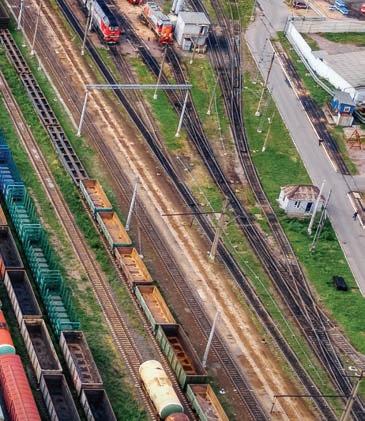
North American railcars can lose up to 65% of planned transit time with every yard visit. NitroYard, part of the Nitro Suite of products, can signi cantly reduce delays – saving money and improving ef ciencies by optimizing yard movements considering train arrivals, scout locomotives, loading /unloading and train formation. It can also be easily integrated with other systems. Using a combination of arti cial intelligence and modern software engineering is one more way we make your railroad more ef cient every day.
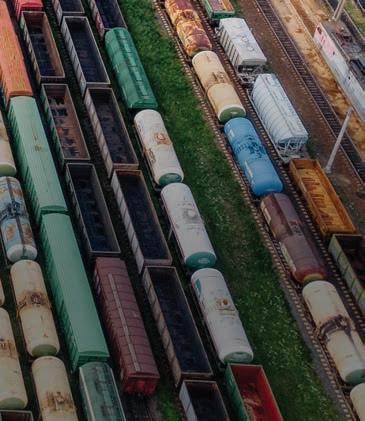
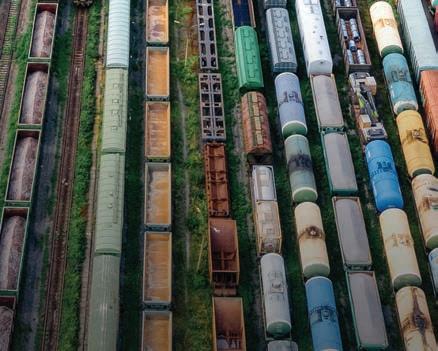

For an in-depth look at the Nitro Suite follow this QR code to our website.
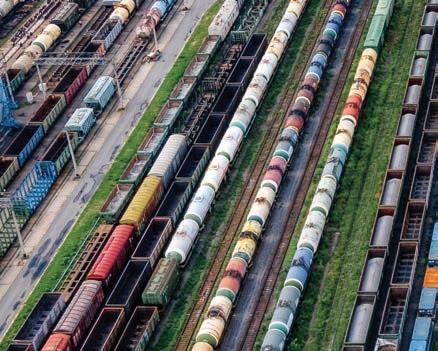
We keep you rolling.
230037






































































 Come see us at booth 3953 at the Railway Interchange and booth 4842 at the APTA Show
Come see us at booth 3953 at the Railway Interchange and booth 4842 at the APTA Show


















 ©2023 Cummins Inc.
©2023 Cummins Inc.















































































































































 Marmon On-Site Services Companies
Marmon On-Site Services Companies































 Harsco Mark IV Production Tamper
Harsco Mark IV Production Tamper














































































































































































































































































































































 BY BOB CANTWELL, CONTRIBUTING EDITOR
BY BOB CANTWELL, CONTRIBUTING EDITOR

















 William C. Vantuono Railway Age
David C. Lester Railway Track & Structures
William C. Vantuono Railway Age
David C. Lester Railway Track & Structures









 Kevin S. Corbett President and CEO NJ Transit
Je rey A. Warsh Partner & VP MBI Former Exec. Dir., NJ Transit
Fred Mills, P.E. Chief Signal Engineer Houston METRO
Anna Hooven, P.E. Program Mgr. –Bridges & Buildings SEPTA
Joe Costigan, Jr. Rapid Transit Program Sponsor (Dir.) Metrolinx
John Mardente C.Eng. –Passenger Rail Div. FRA
Kevin S. Corbett President and CEO NJ Transit
Je rey A. Warsh Partner & VP MBI Former Exec. Dir., NJ Transit
Fred Mills, P.E. Chief Signal Engineer Houston METRO
Anna Hooven, P.E. Program Mgr. –Bridges & Buildings SEPTA
Joe Costigan, Jr. Rapid Transit Program Sponsor (Dir.) Metrolinx
John Mardente C.Eng. –Passenger Rail Div. FRA

 BY CAROLINA WORRELL, SENIOR EDITOR
BY CAROLINA WORRELL, SENIOR EDITOR


































 MARIO PELOQUIN President & CEO VIA Rail Canada
CHRIS MATTHEWS AVP Network Control Systems BNSF
SOFIA GEORGIADIS VP Vital Systems, Signals & Train Control MTA C&D
BRAD MYERS EVP & COO Amsted Digital Solutions
YOUSEF KIMIAGAR VP Advanced Technologies, U.S. Rail Systems Lead Hatch
PHIL DUBERY Co-Owner & Dir. CPC Project Services LLP
ALAN RUMSEY, PH.D. Rumsey Transit Systems Consulting
GARY FRY, PH.D., P.E. VP Fry Technical Services
DAVID SHANNON General Manager RailPulse
MARIO PELOQUIN President & CEO VIA Rail Canada
CHRIS MATTHEWS AVP Network Control Systems BNSF
SOFIA GEORGIADIS VP Vital Systems, Signals & Train Control MTA C&D
BRAD MYERS EVP & COO Amsted Digital Solutions
YOUSEF KIMIAGAR VP Advanced Technologies, U.S. Rail Systems Lead Hatch
PHIL DUBERY Co-Owner & Dir. CPC Project Services LLP
ALAN RUMSEY, PH.D. Rumsey Transit Systems Consulting
GARY FRY, PH.D., P.E. VP Fry Technical Services
DAVID SHANNON General Manager RailPulse

 BY MARYBETH LUCZAK, EXECUTIVE EDITOR
BY MARYBETH LUCZAK, EXECUTIVE EDITOR






























































 BY WILLIAM C. VANTUONO, EDITOR-IN-CHIEF
BY WILLIAM C. VANTUONO, EDITOR-IN-CHIEF

 Corman
Corman











































